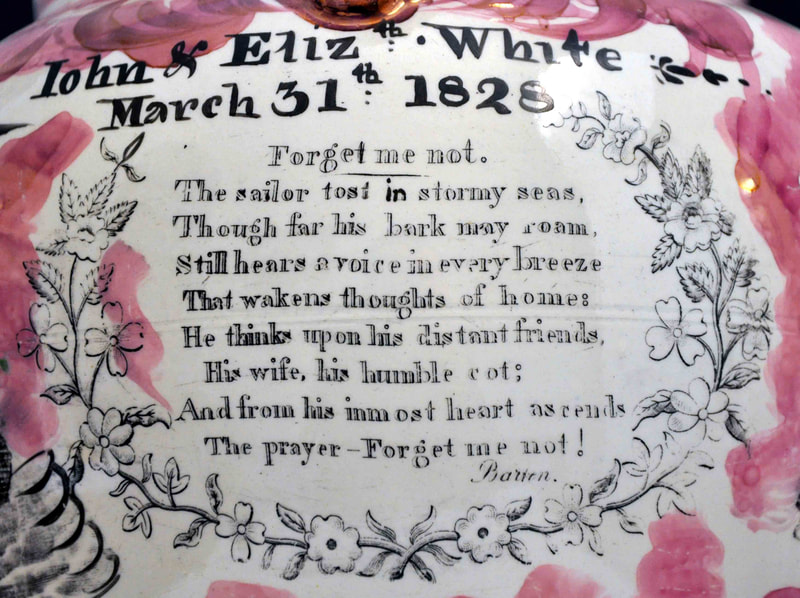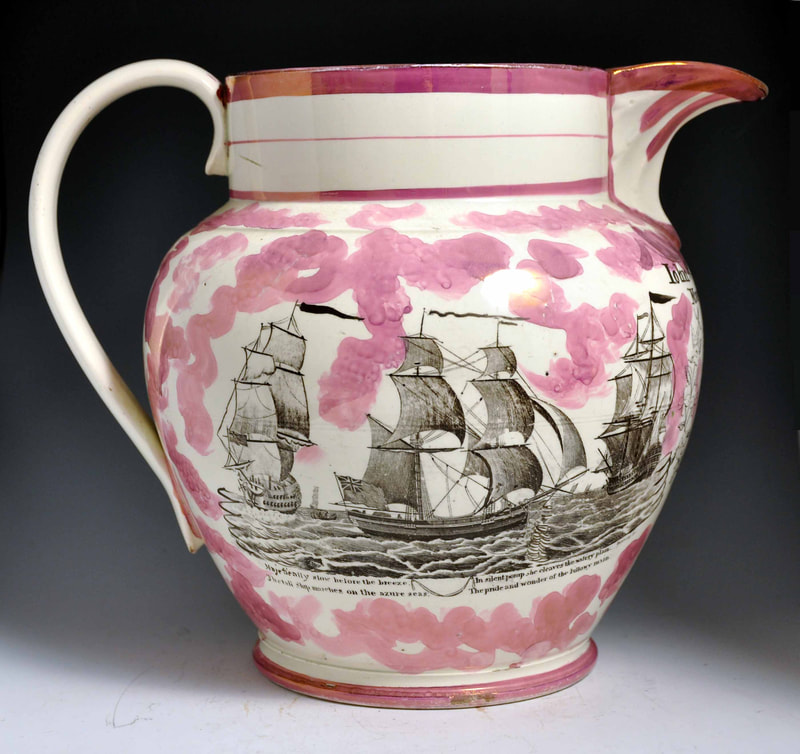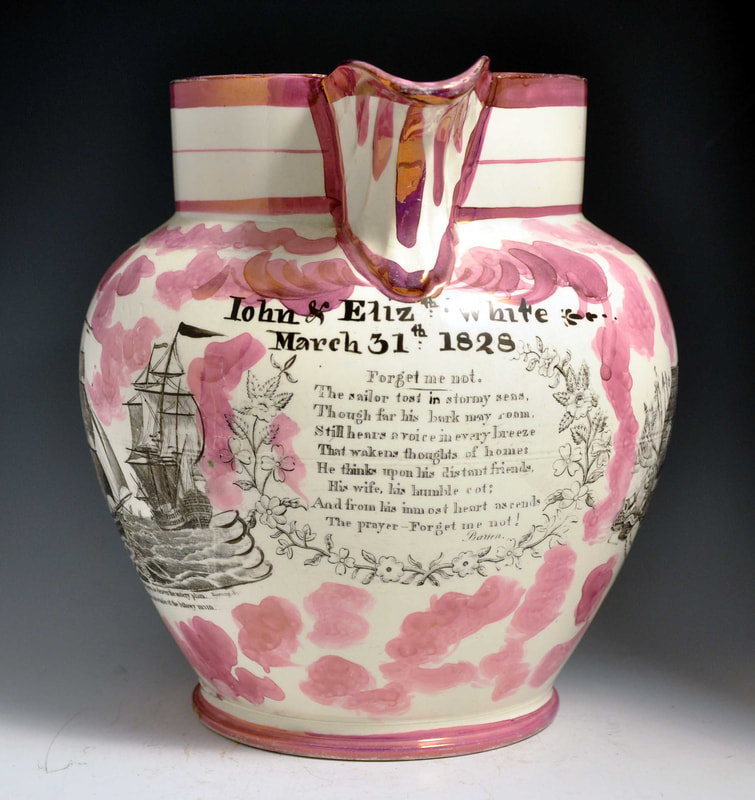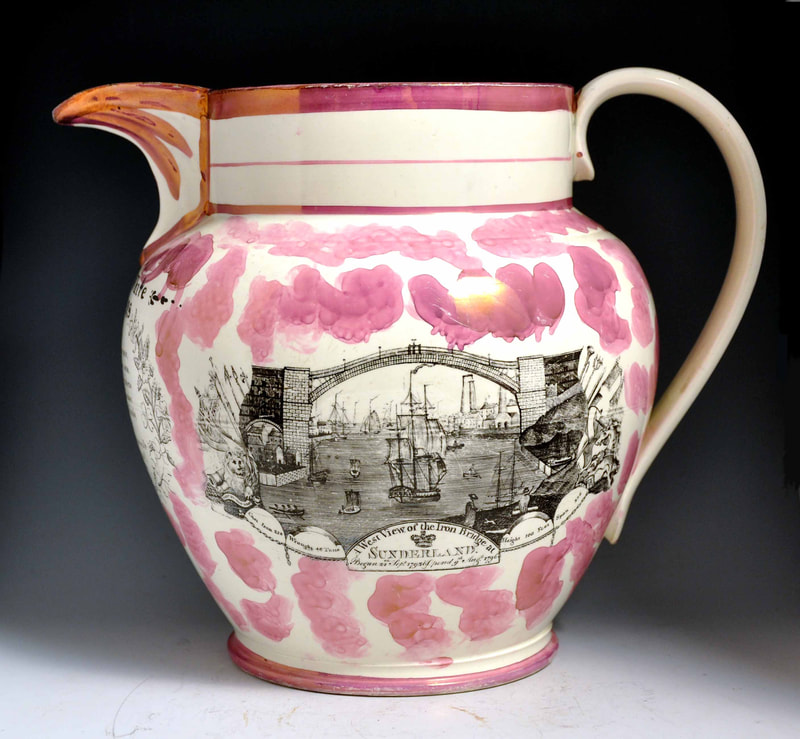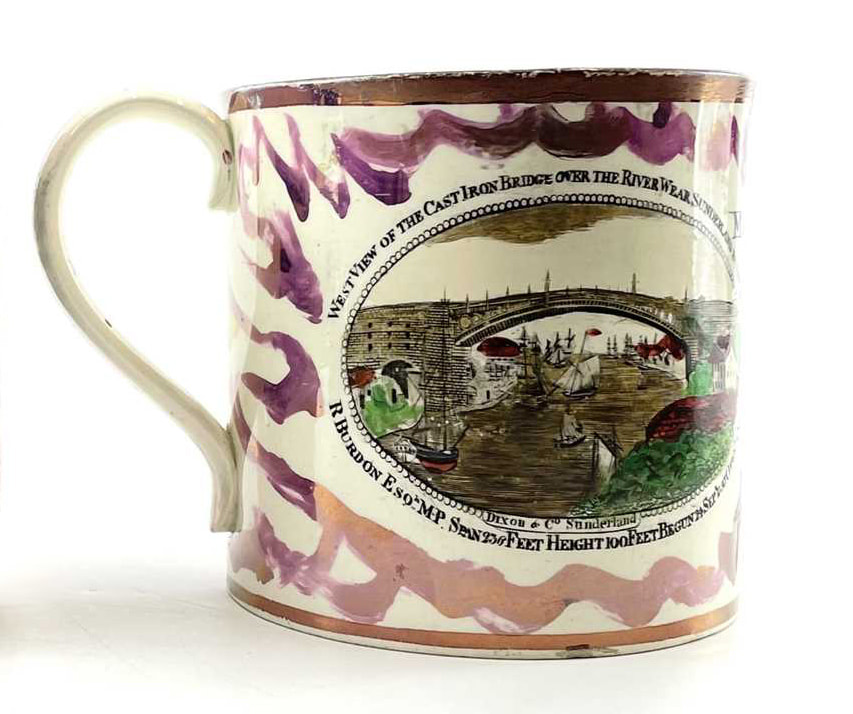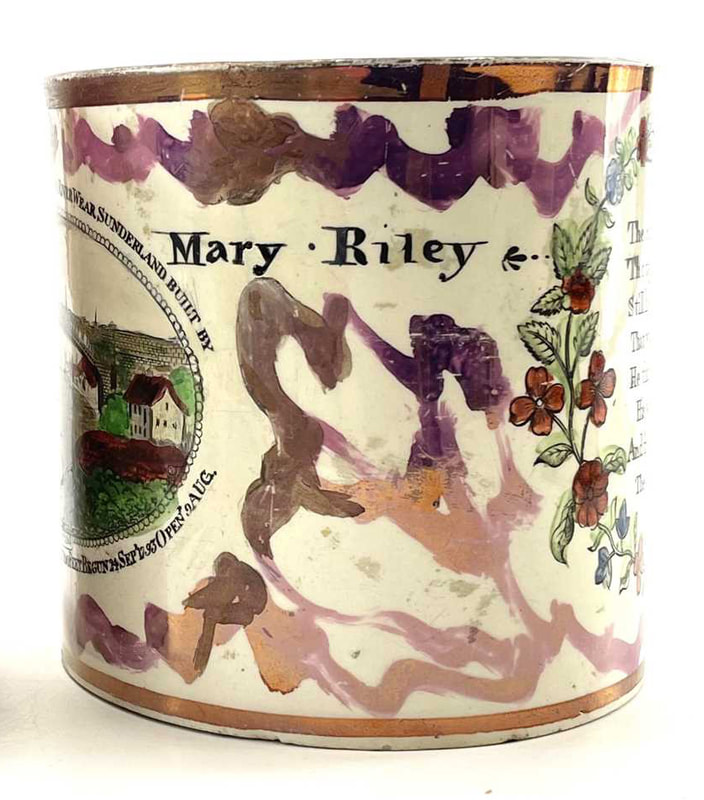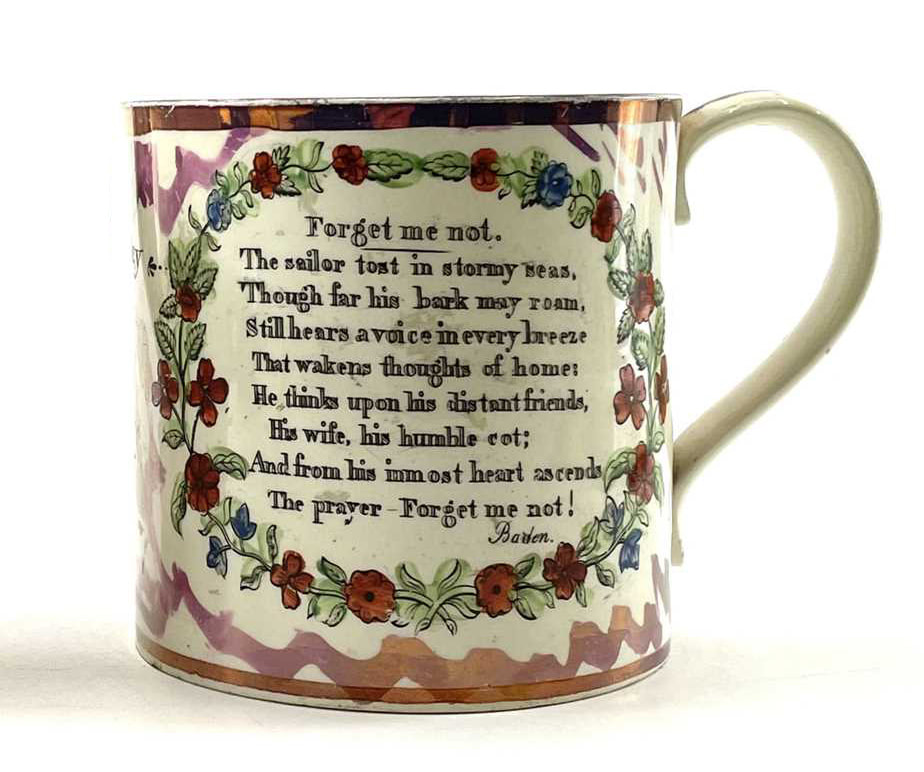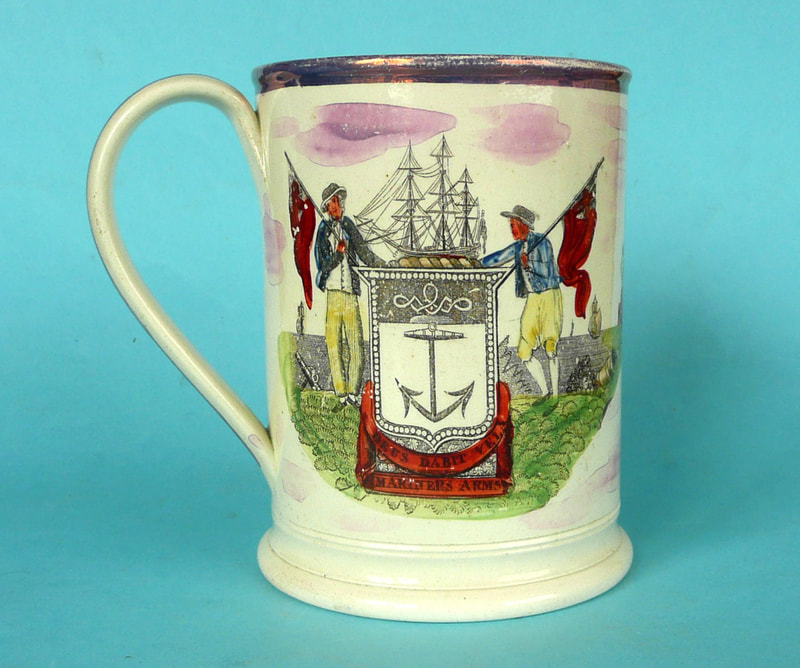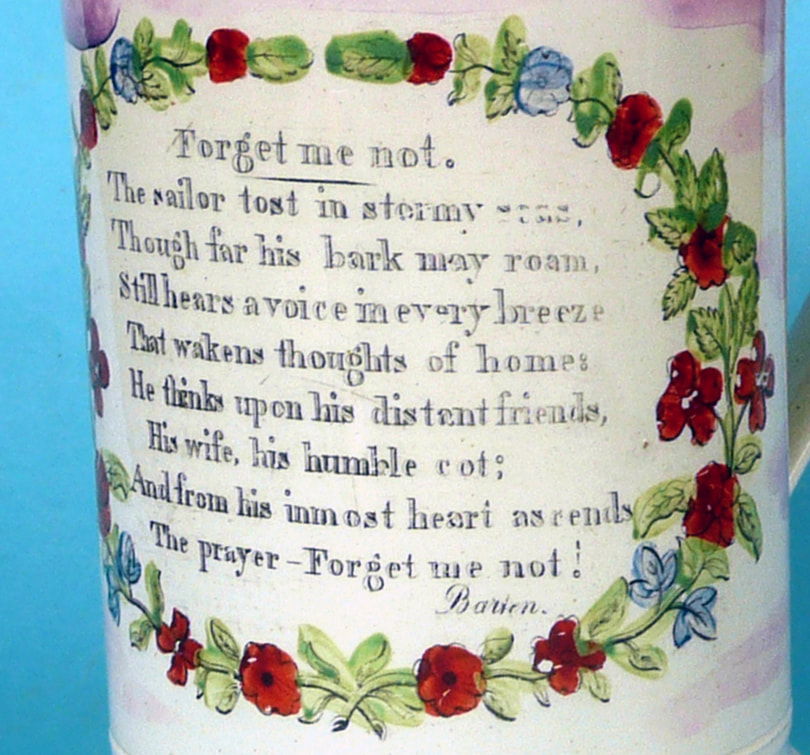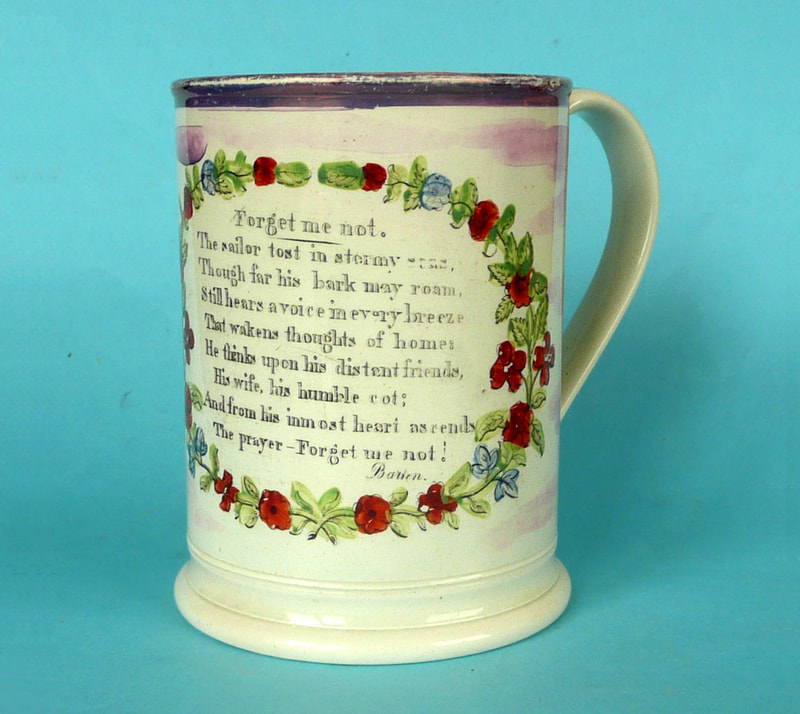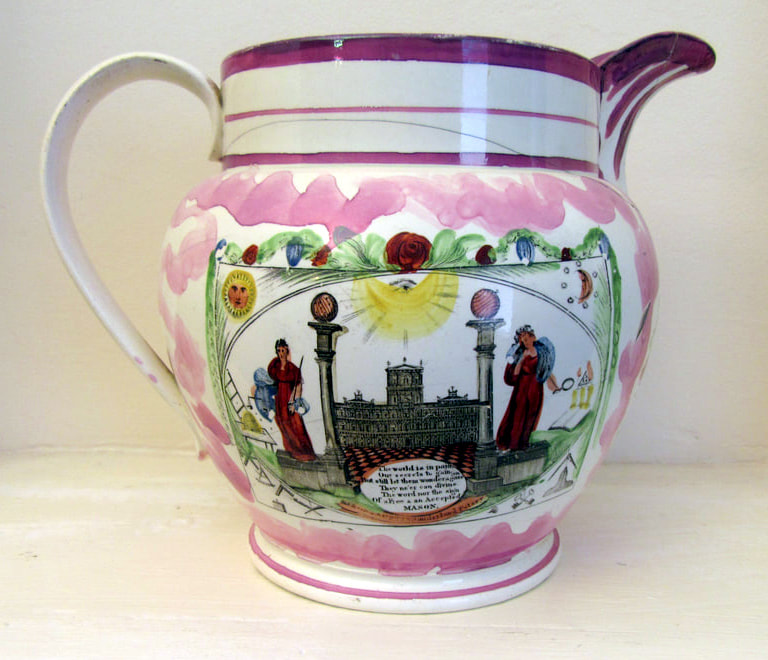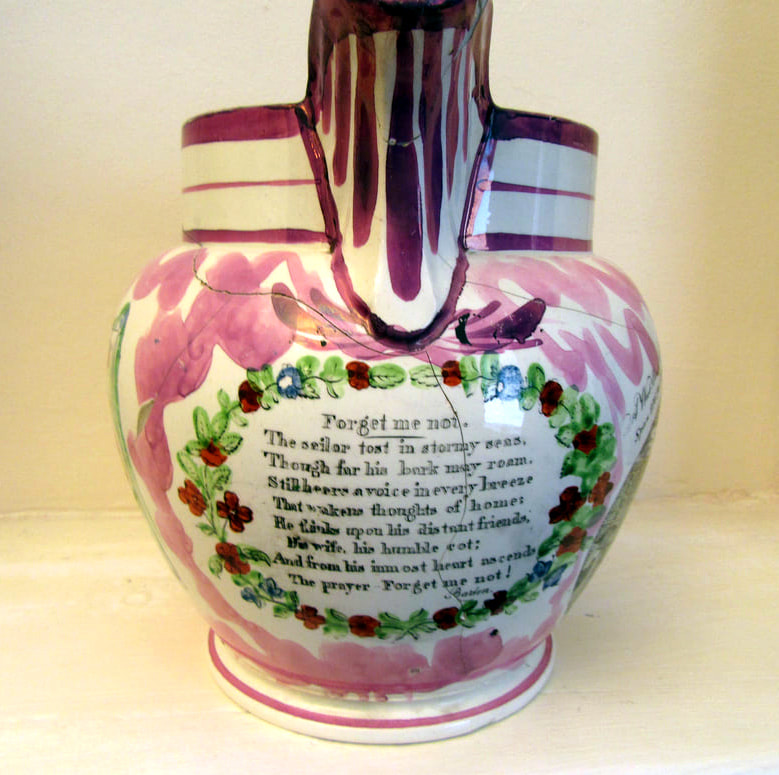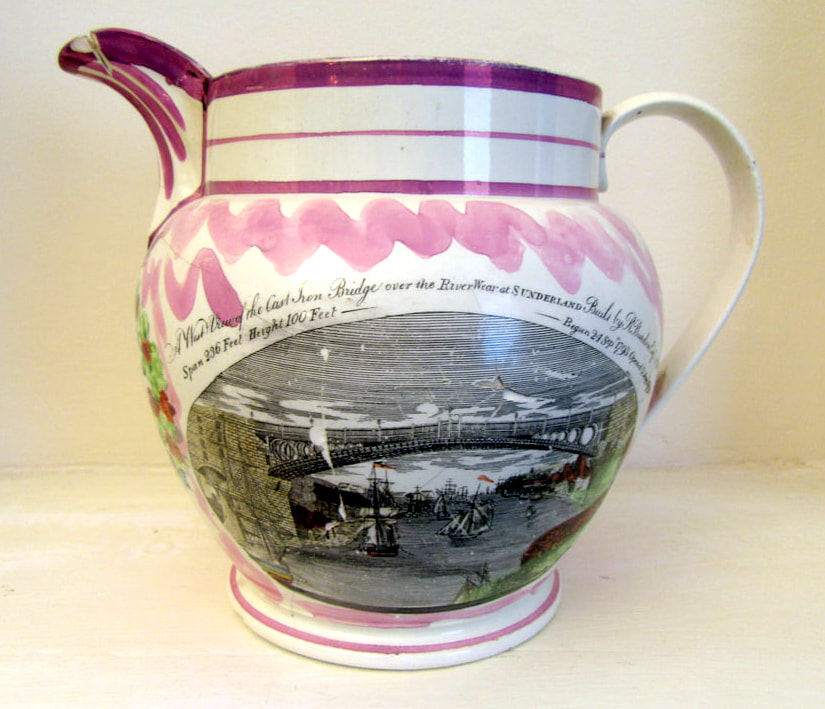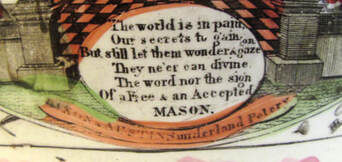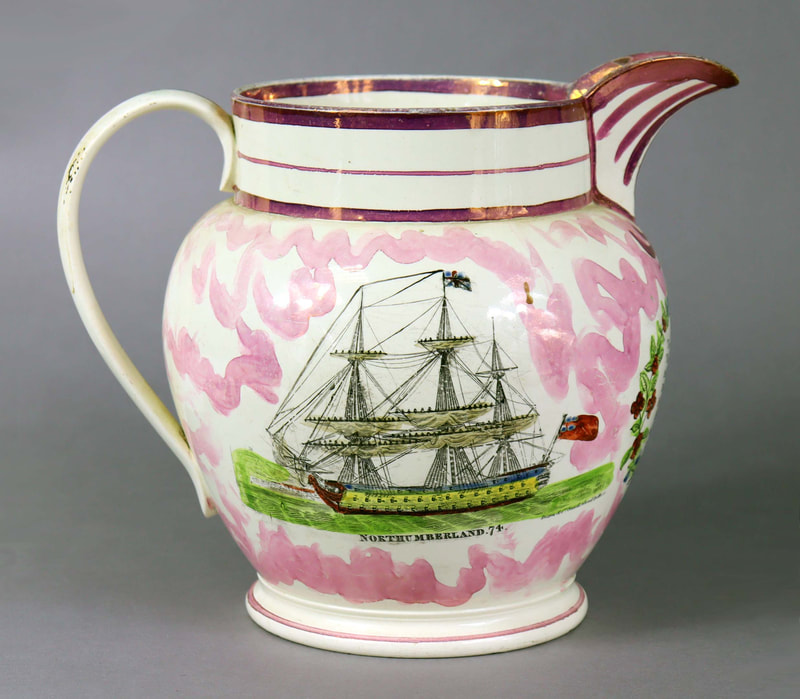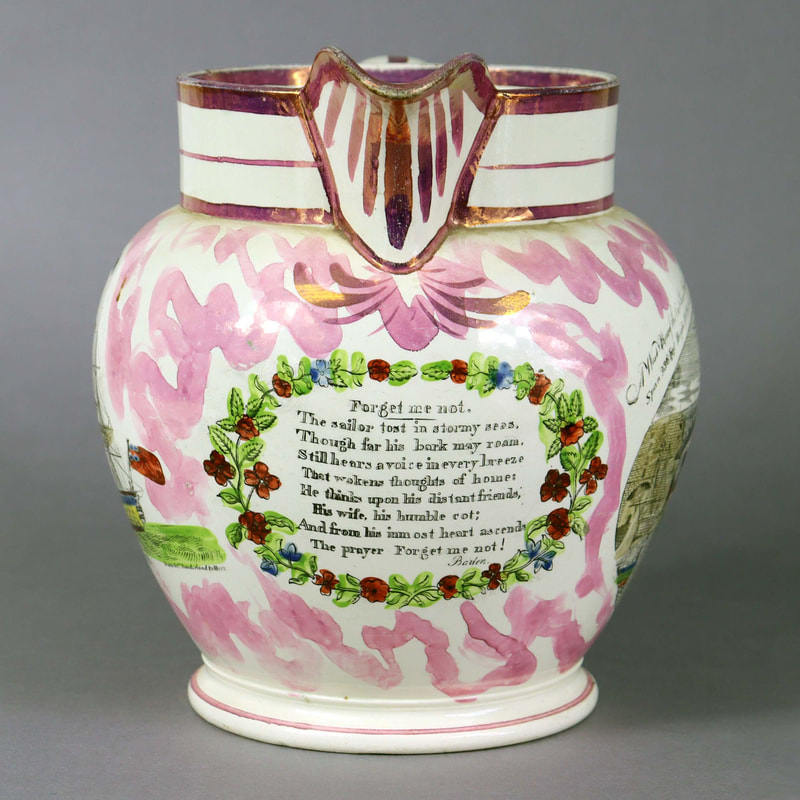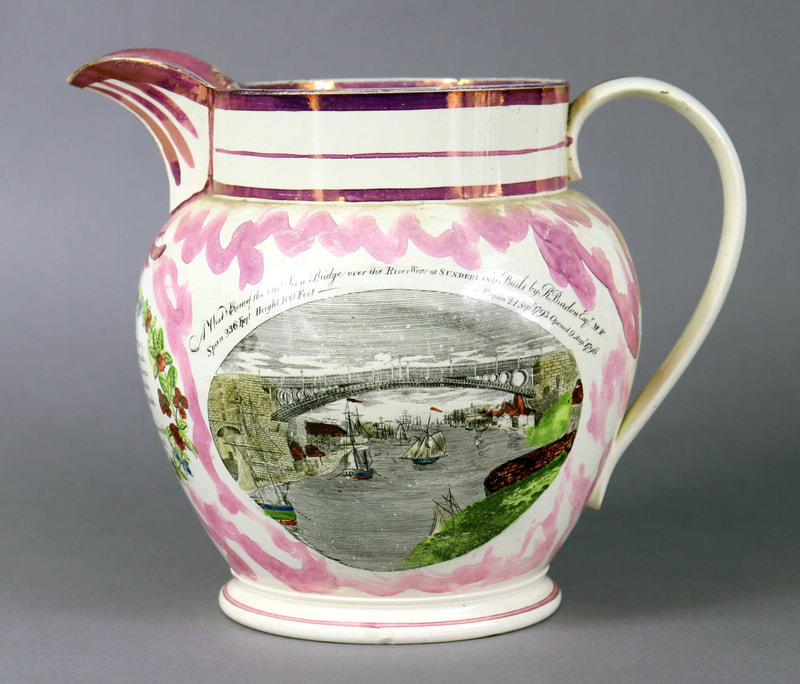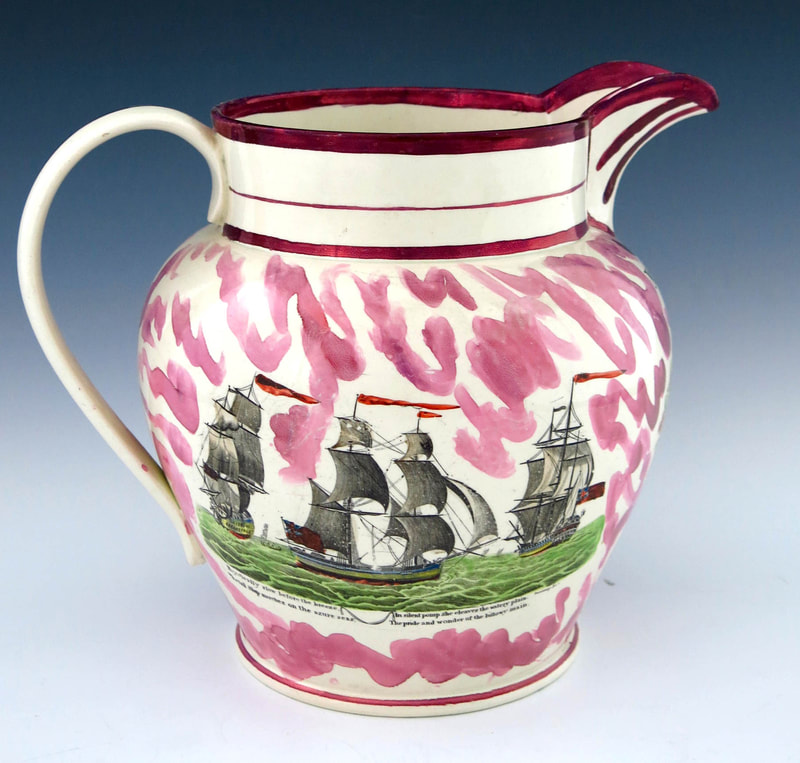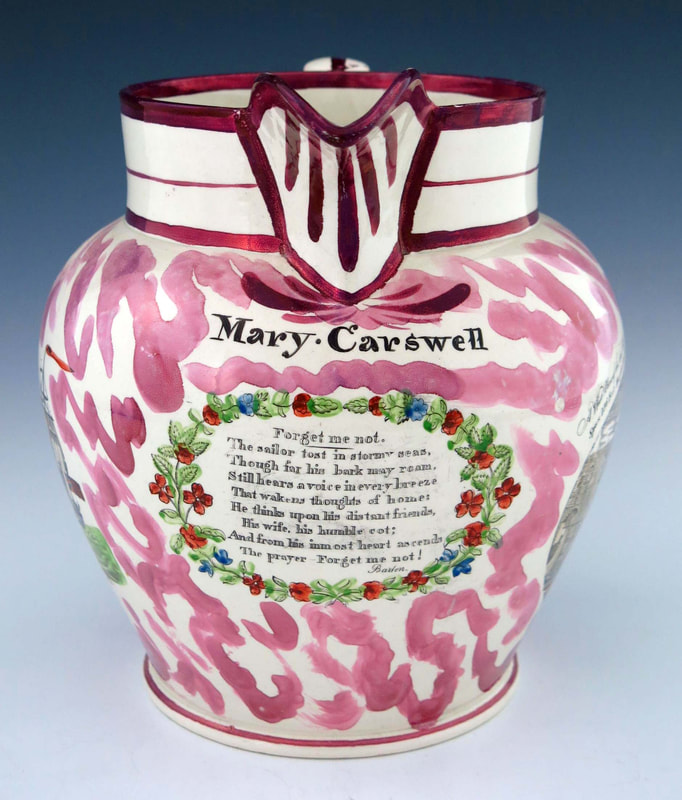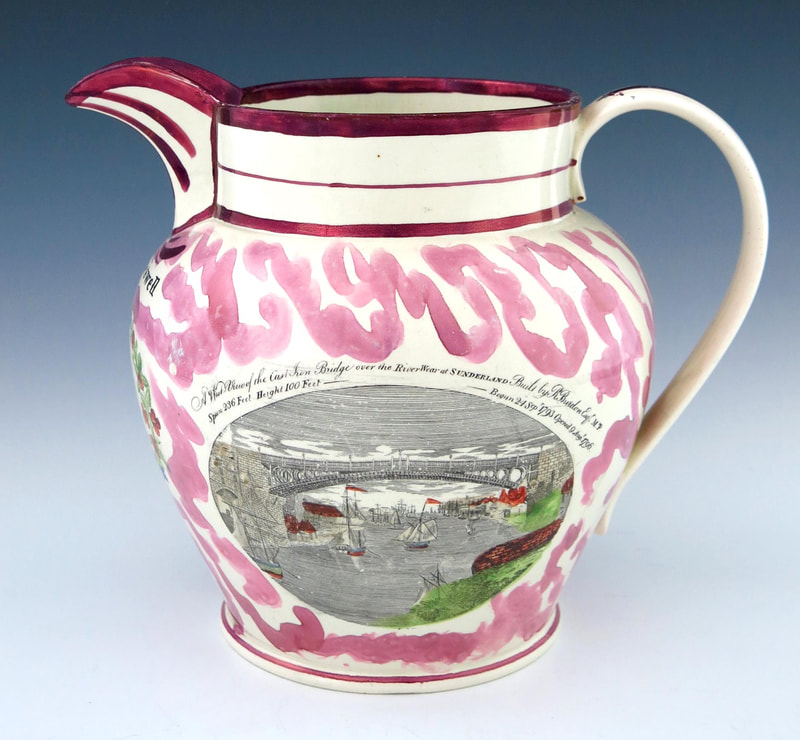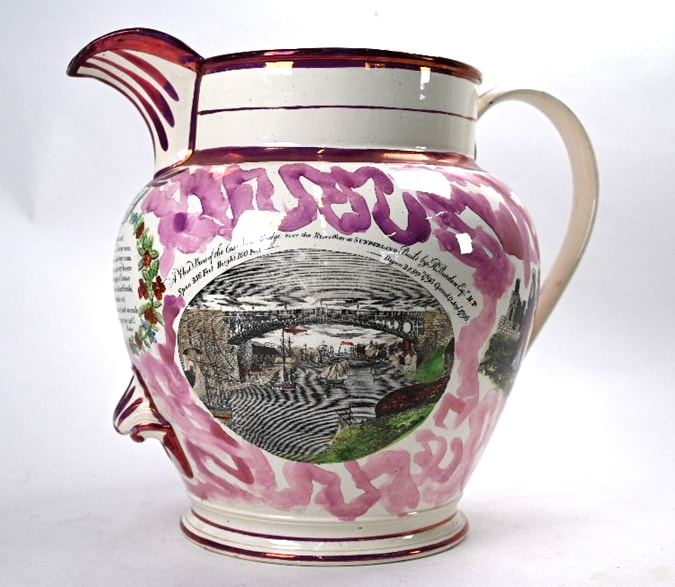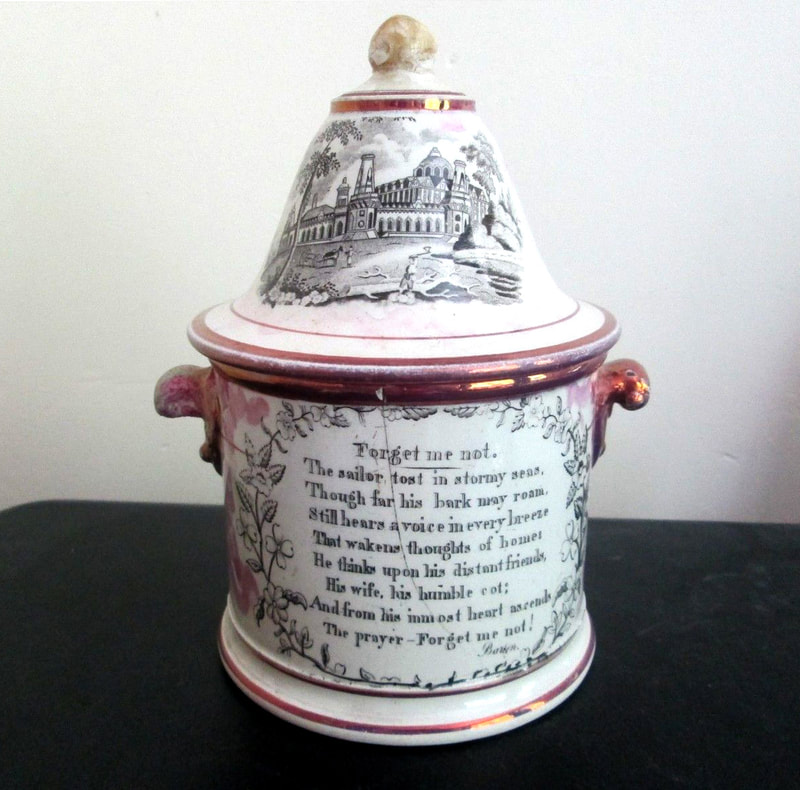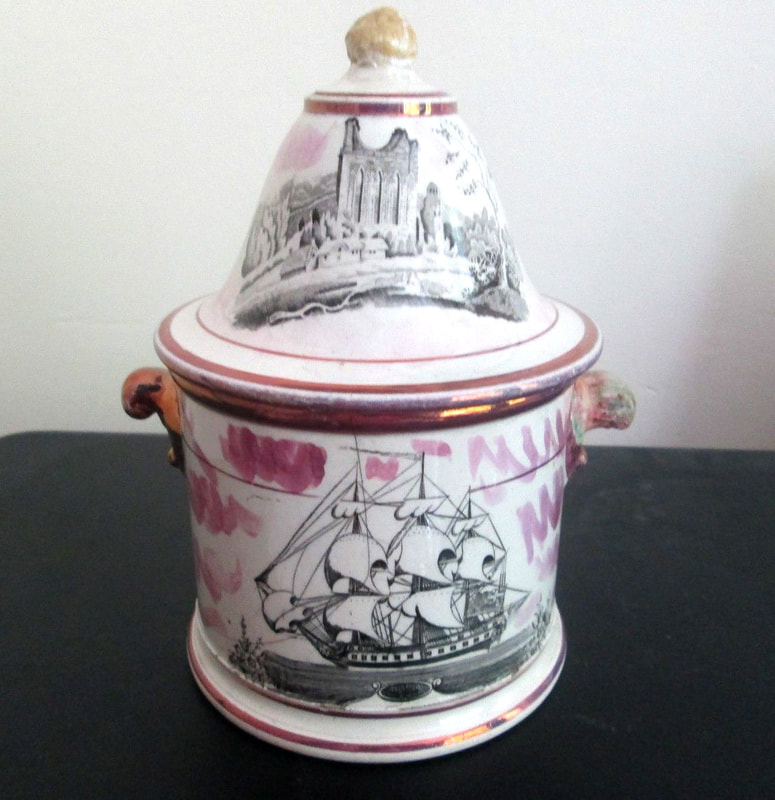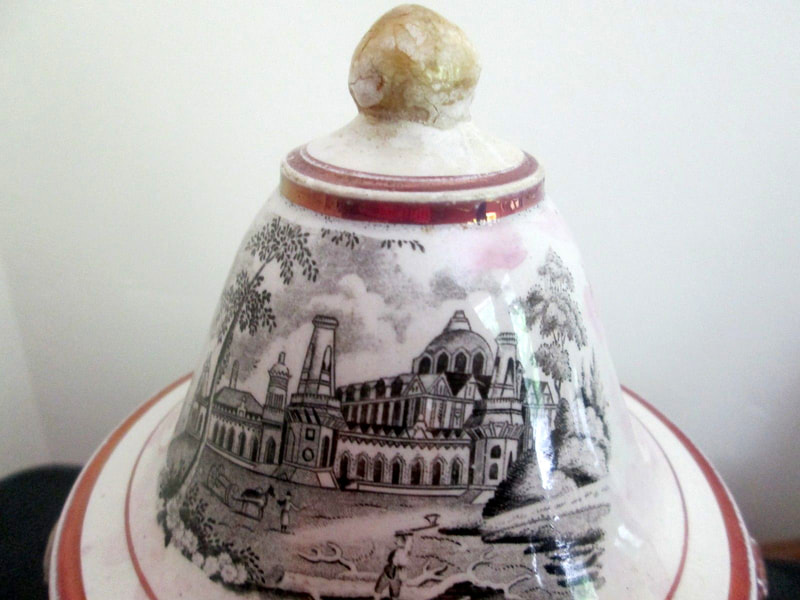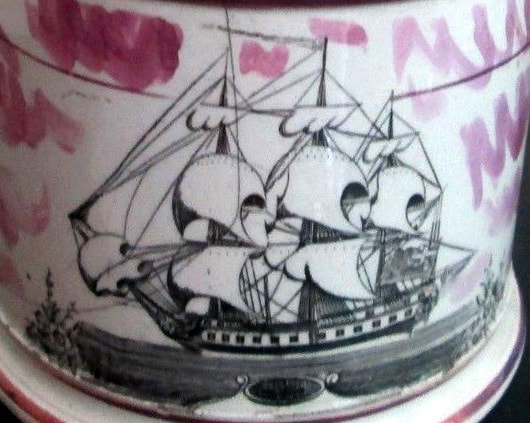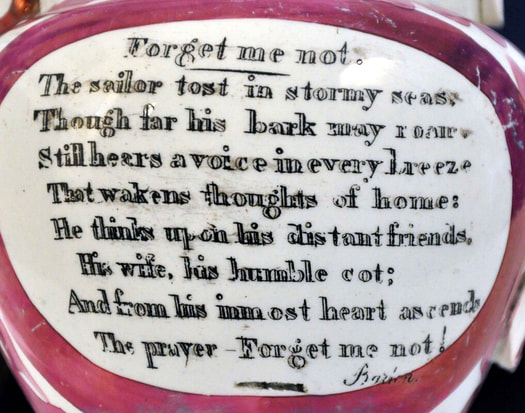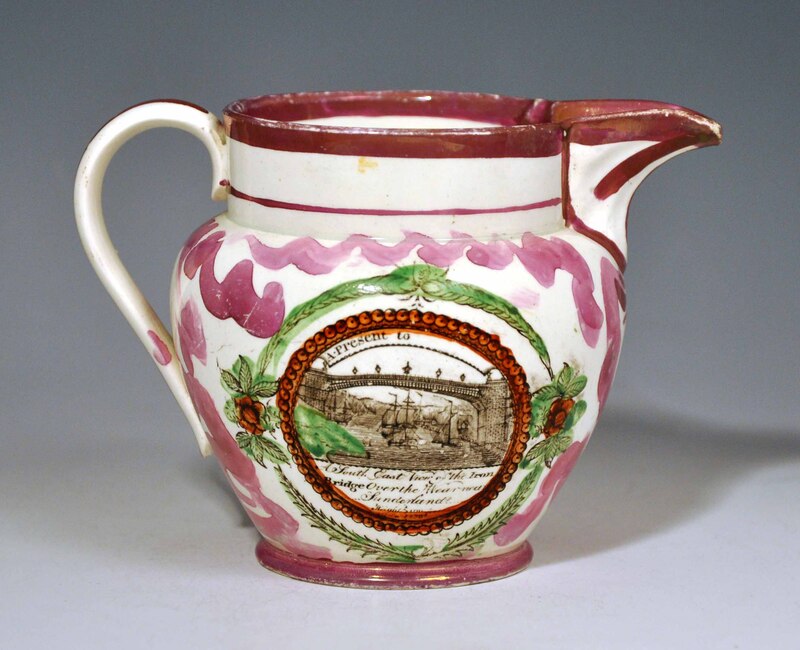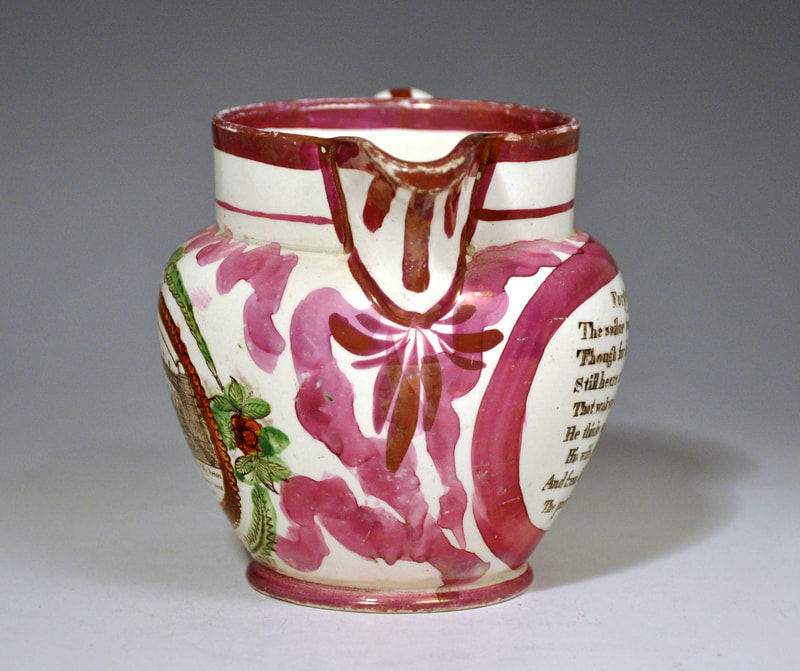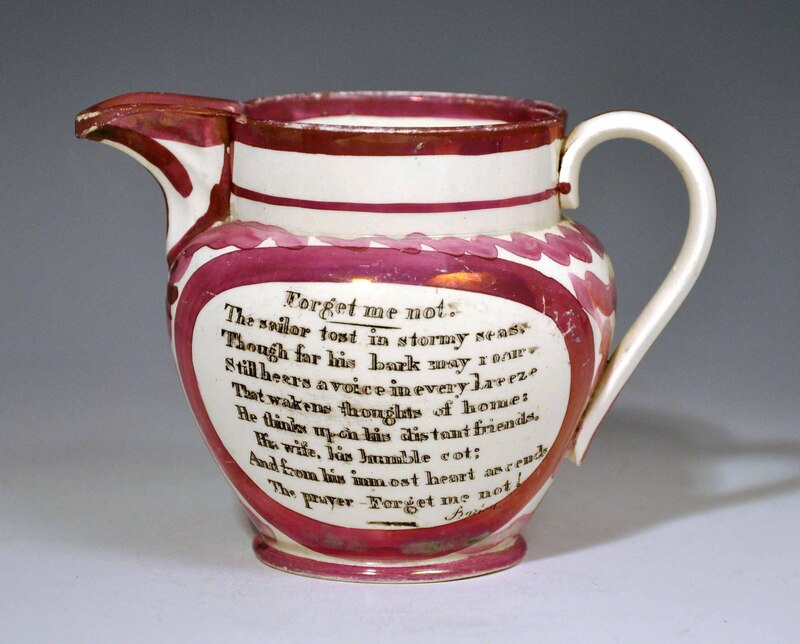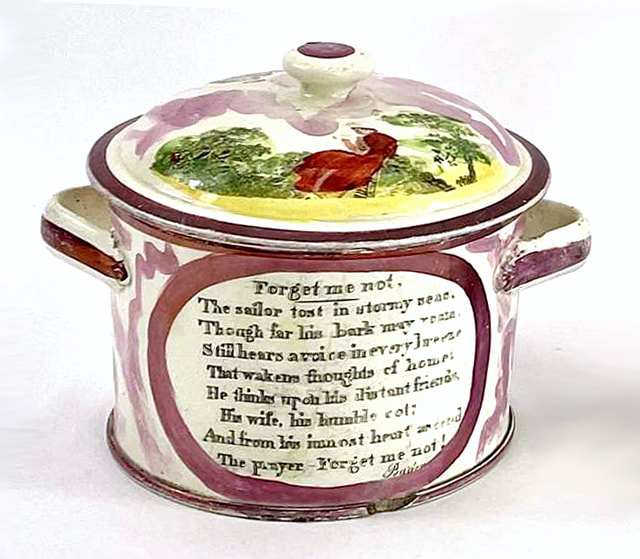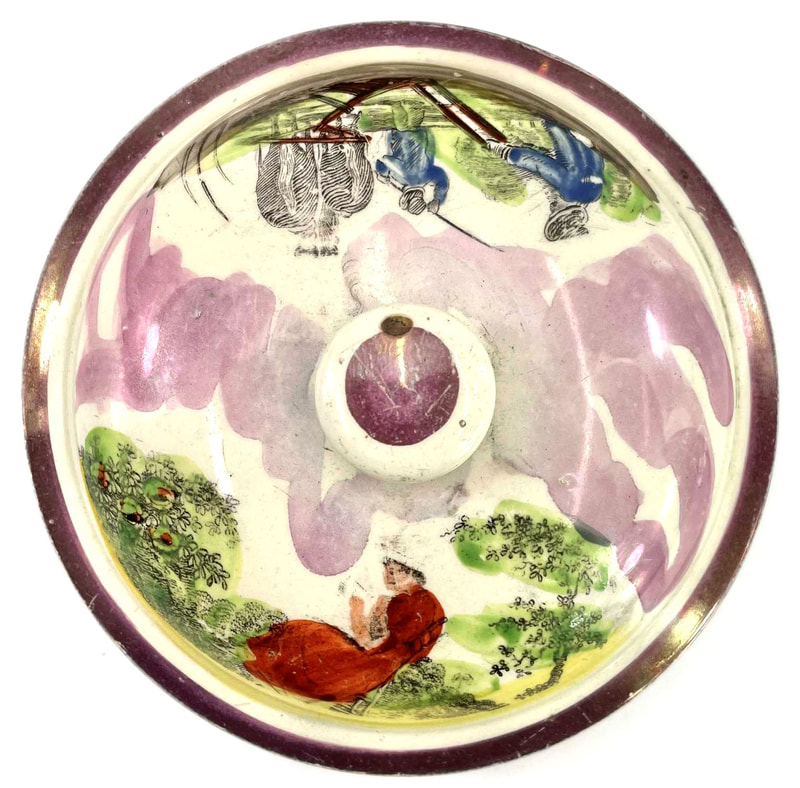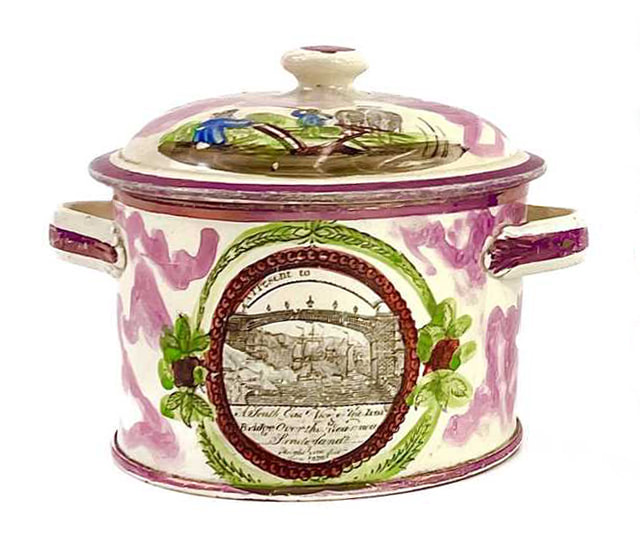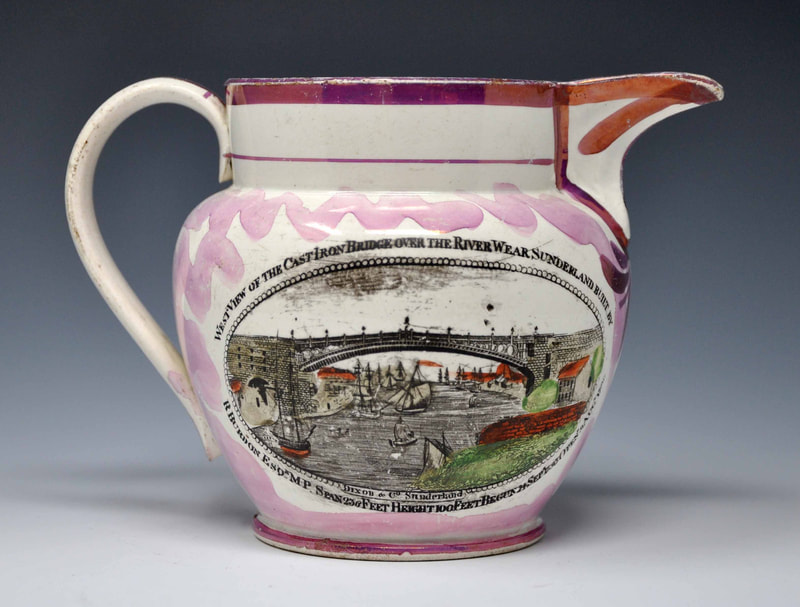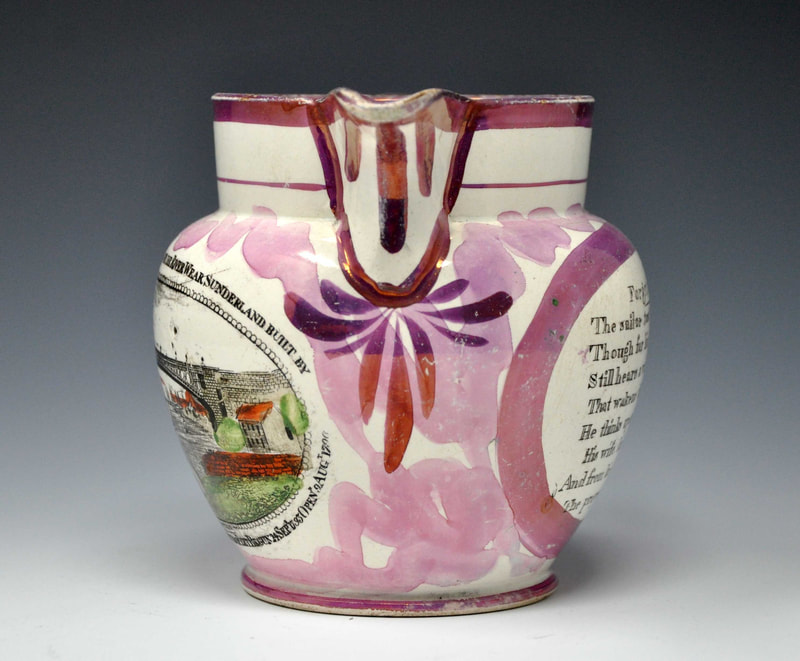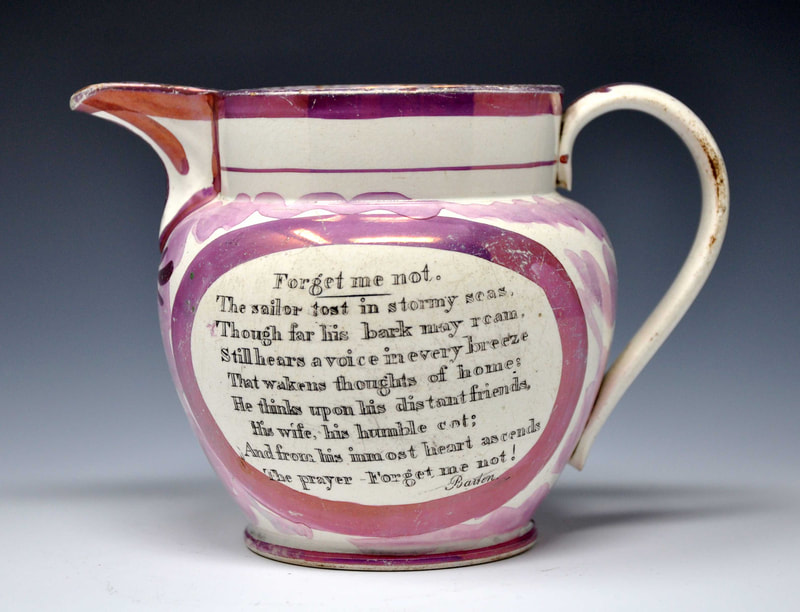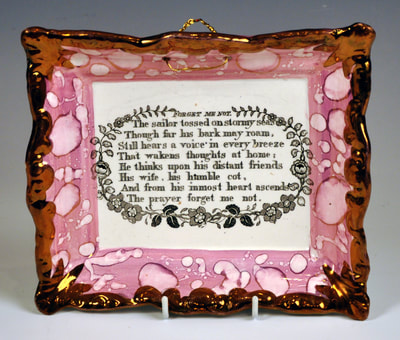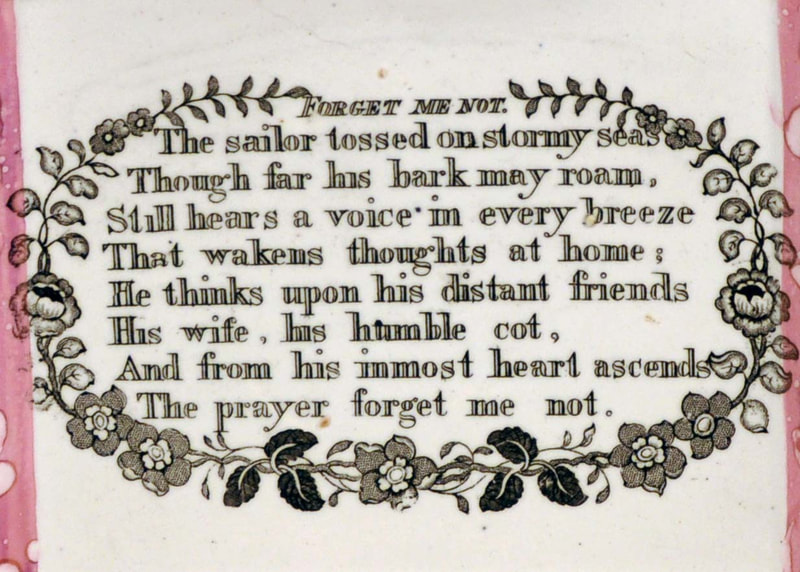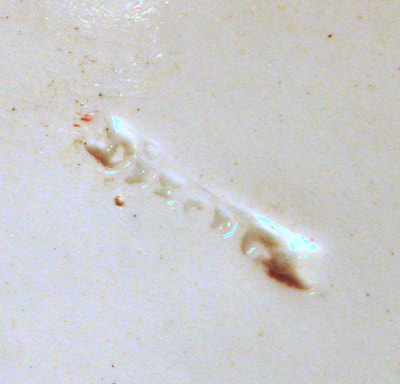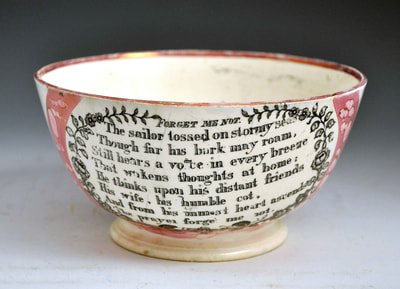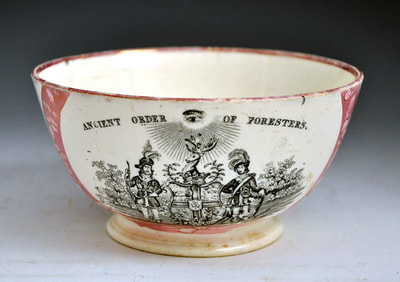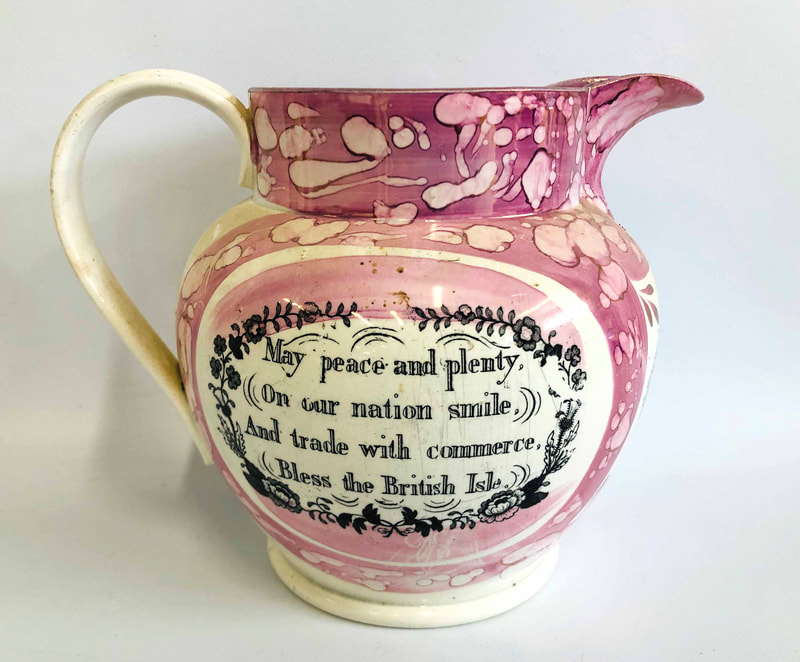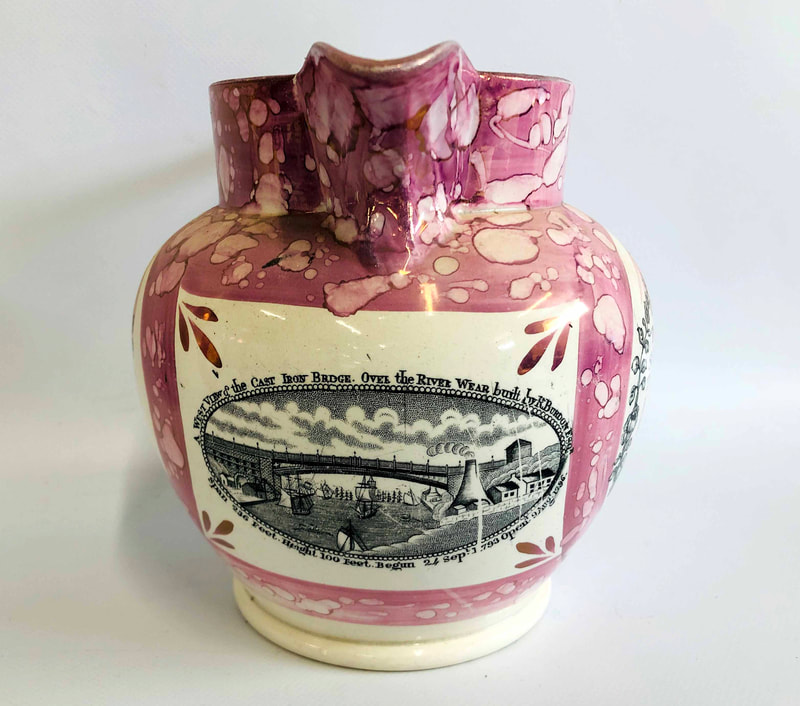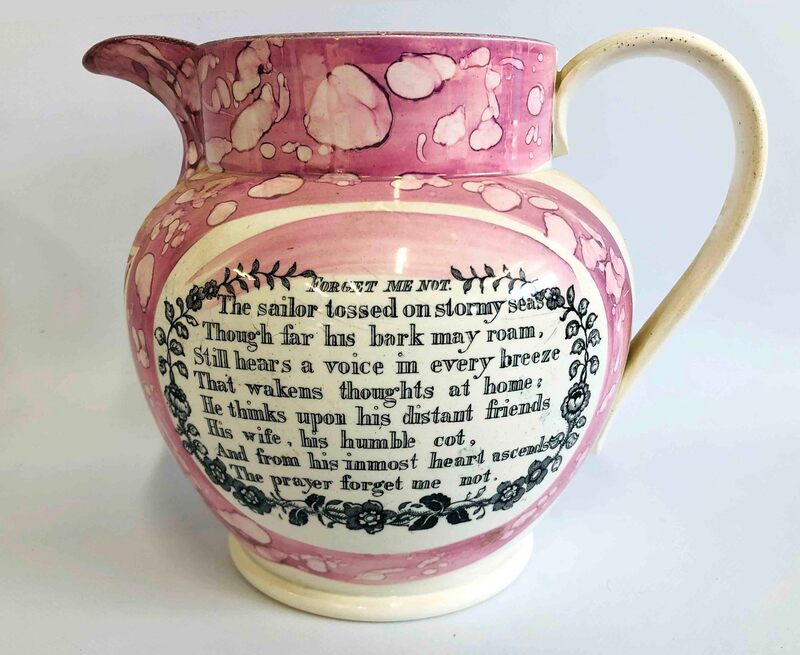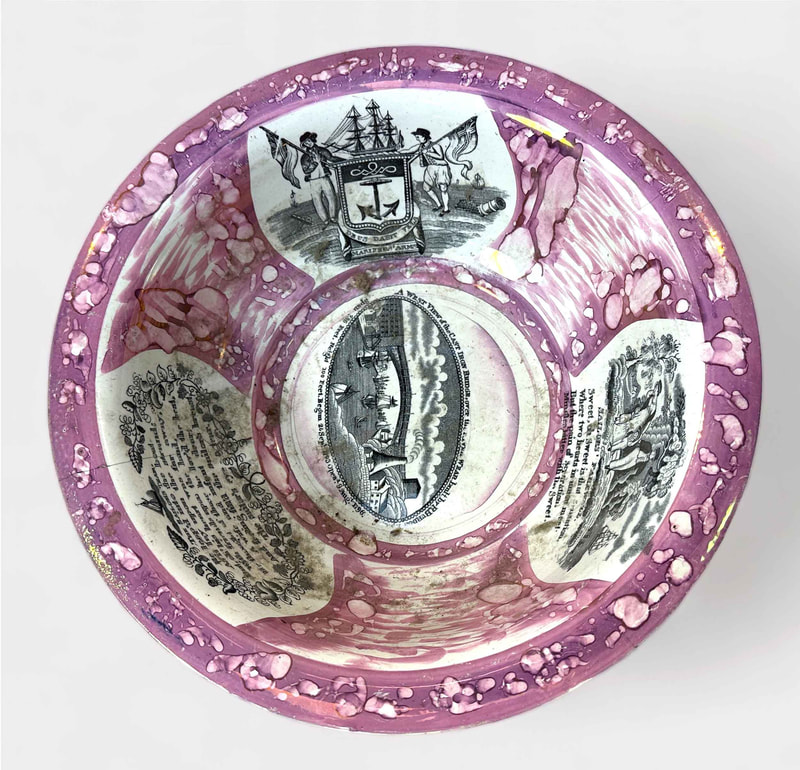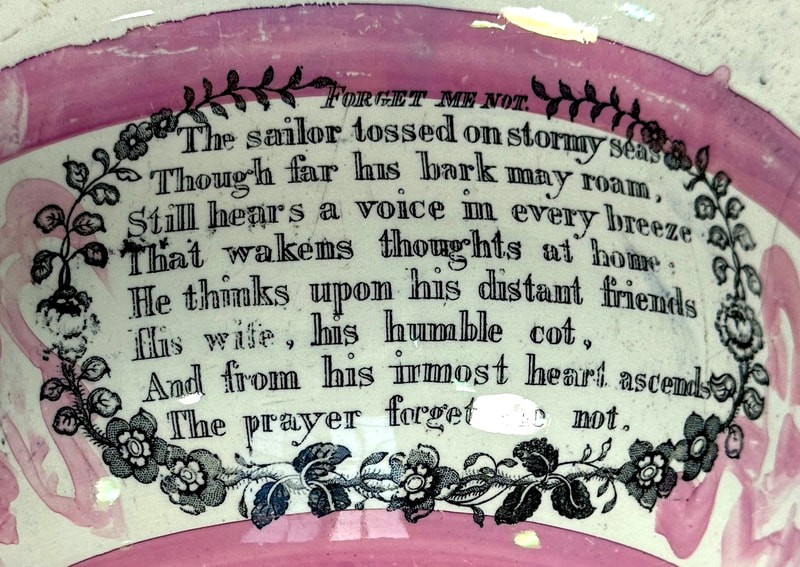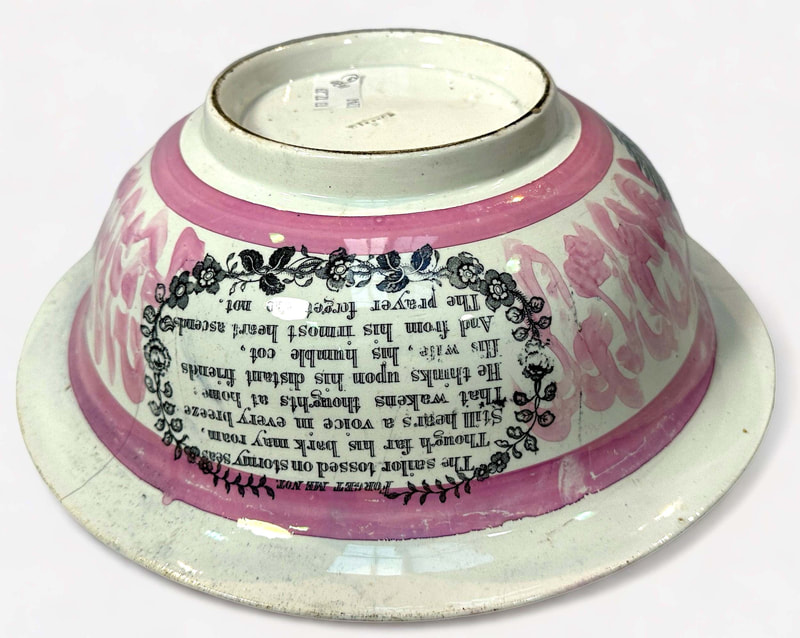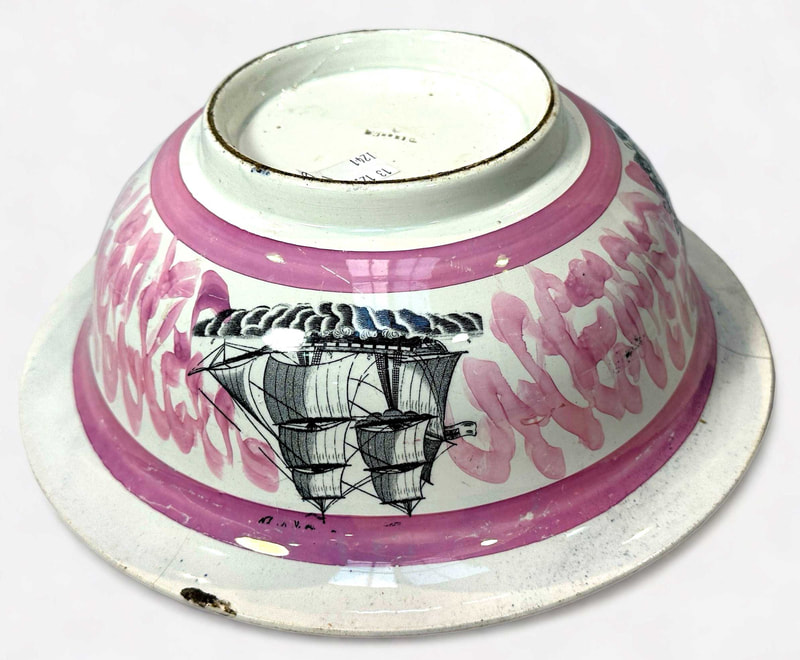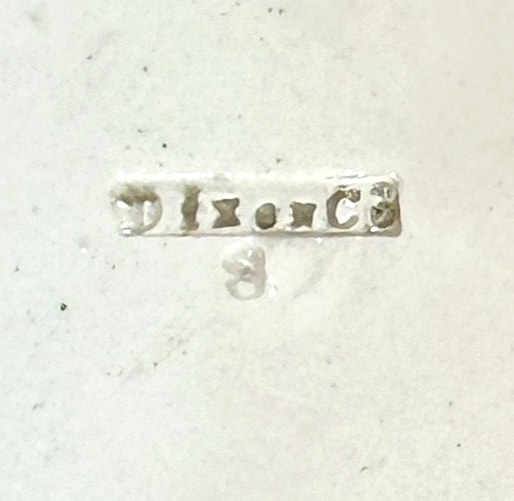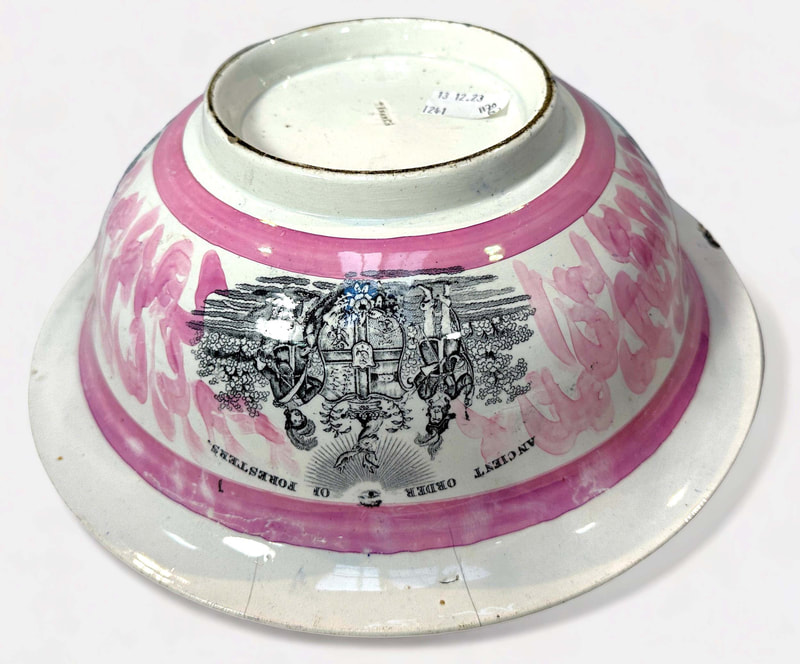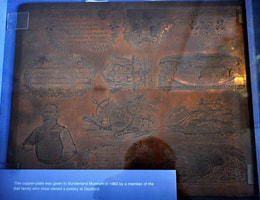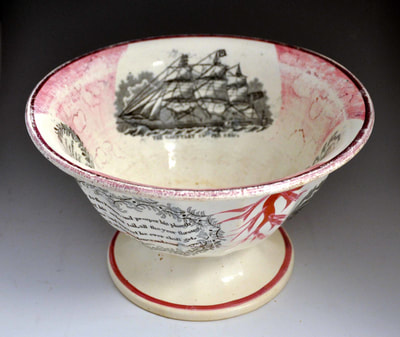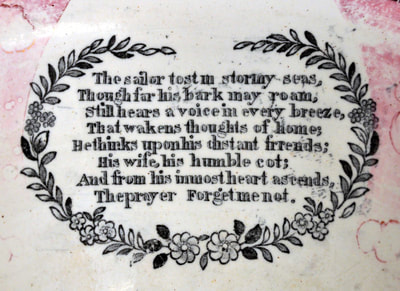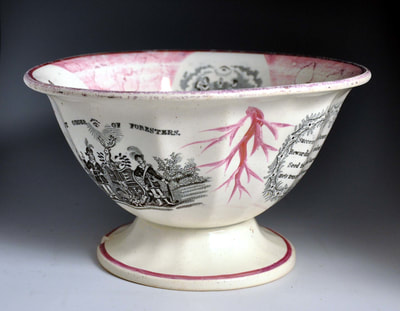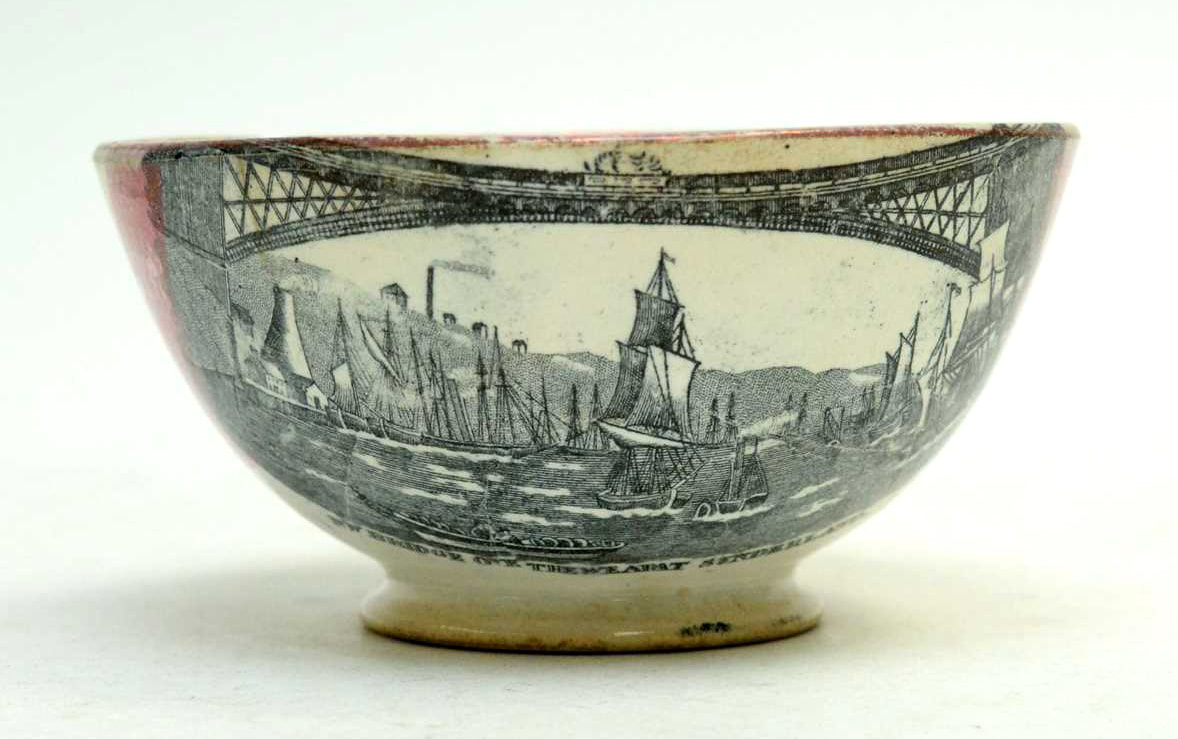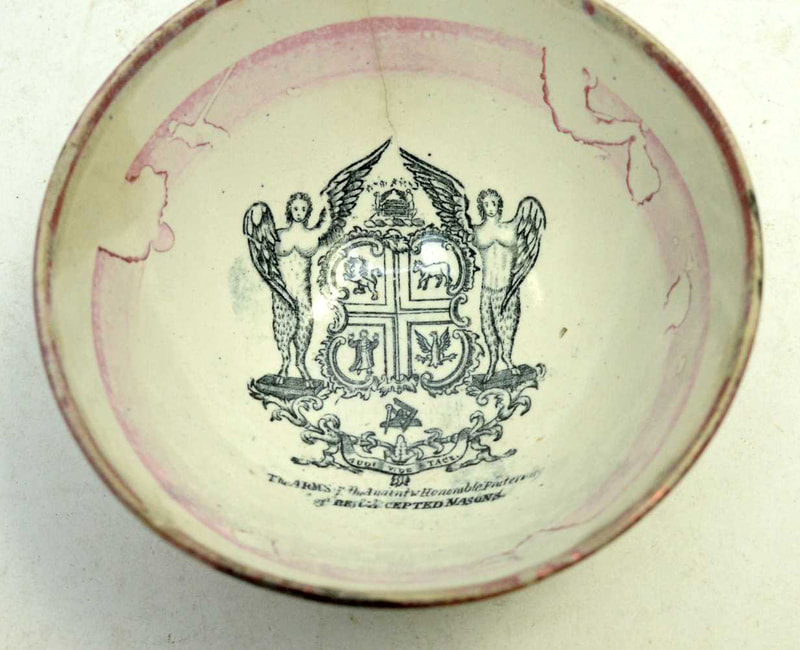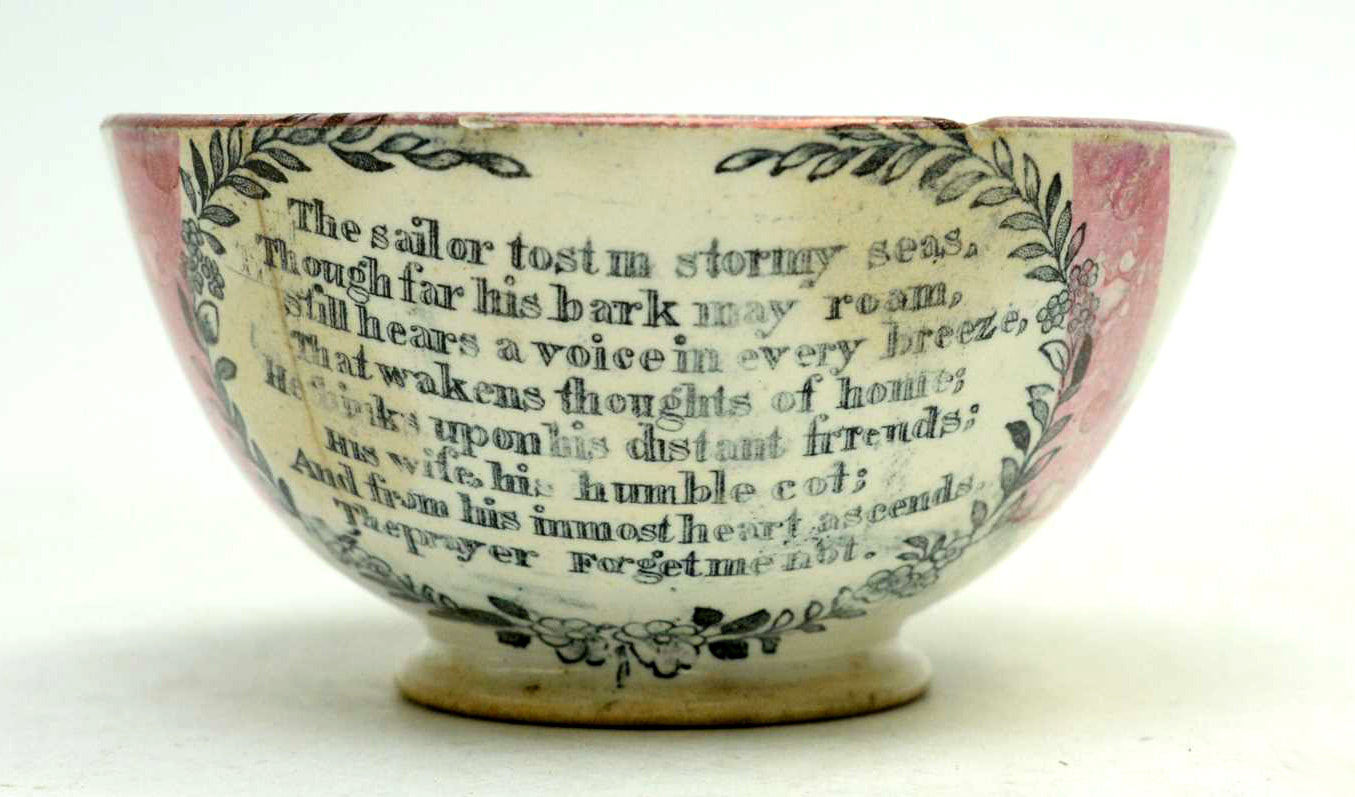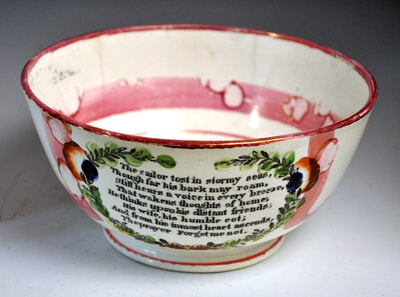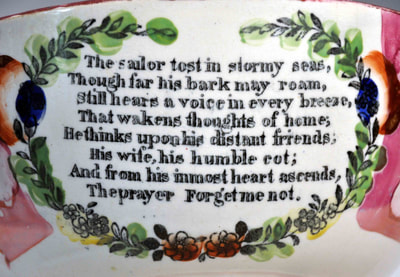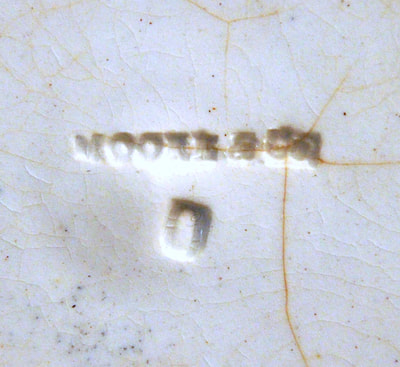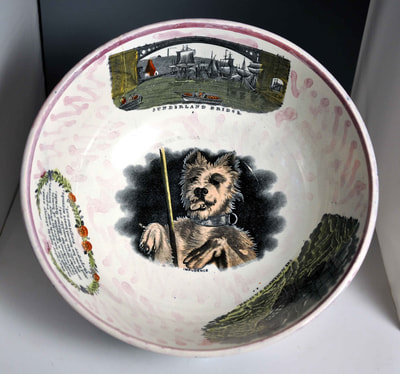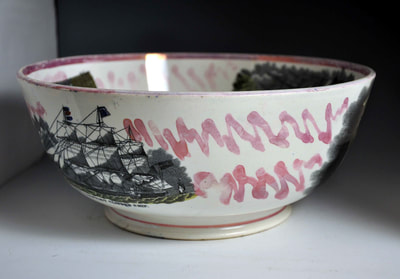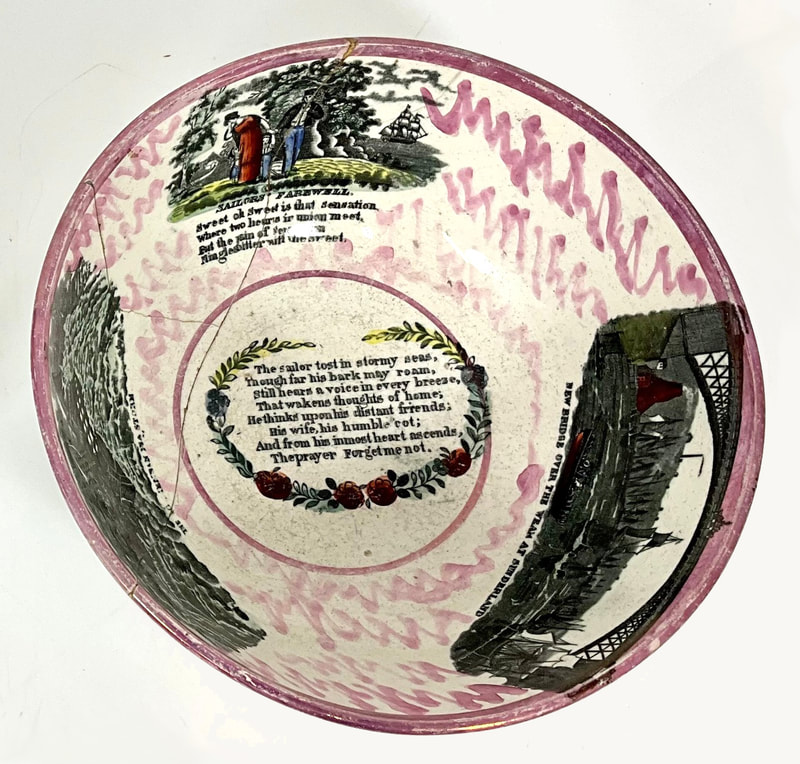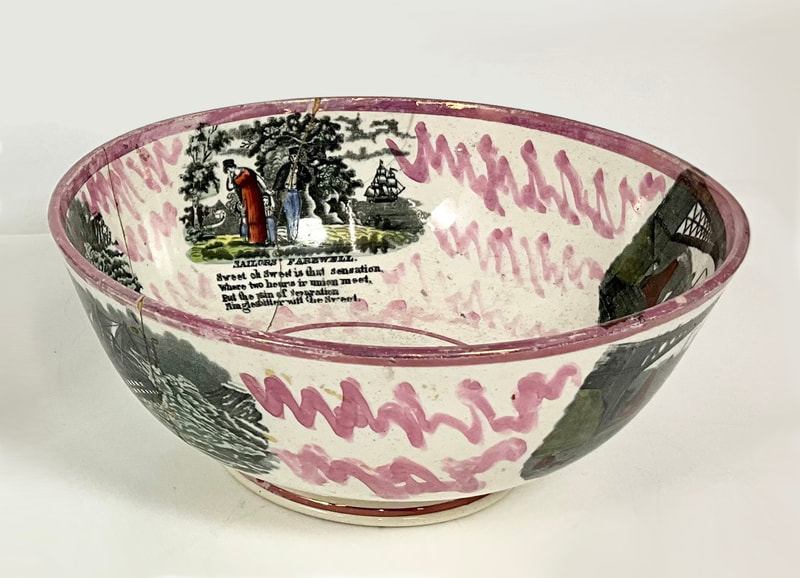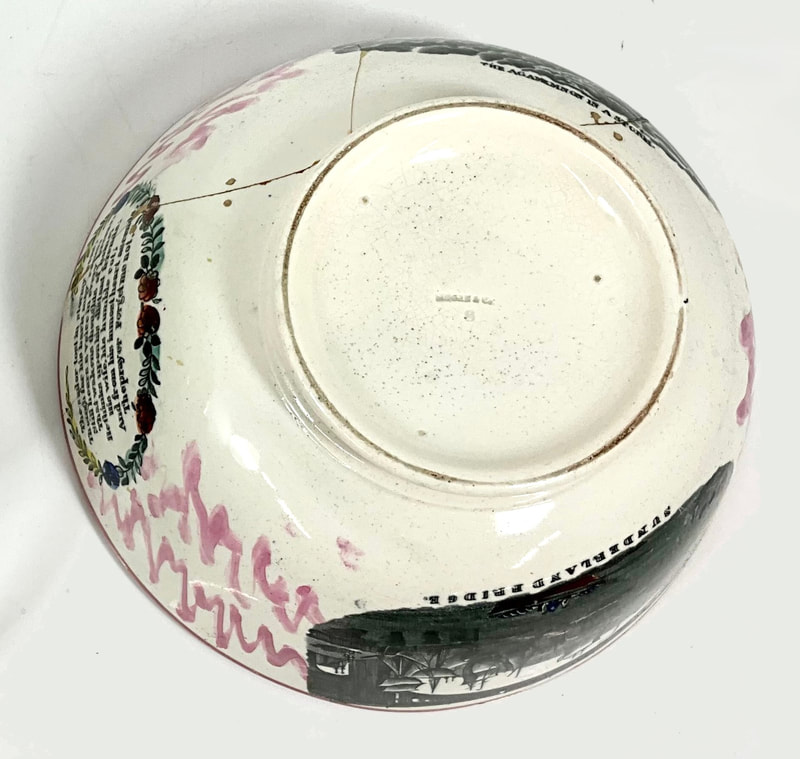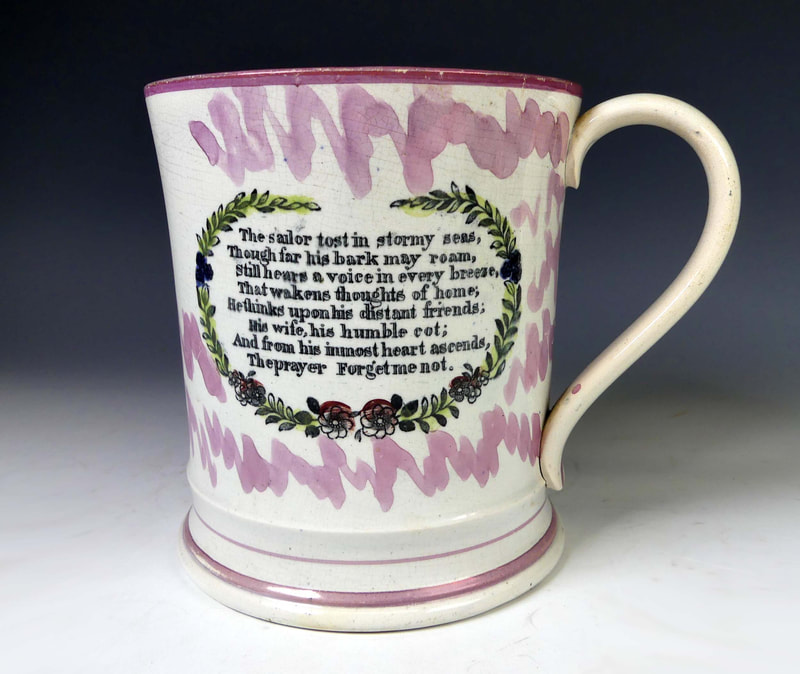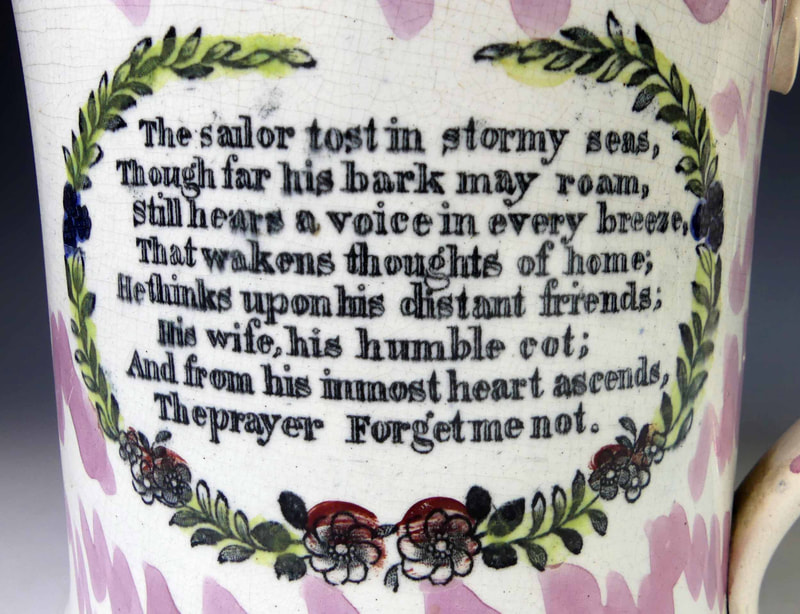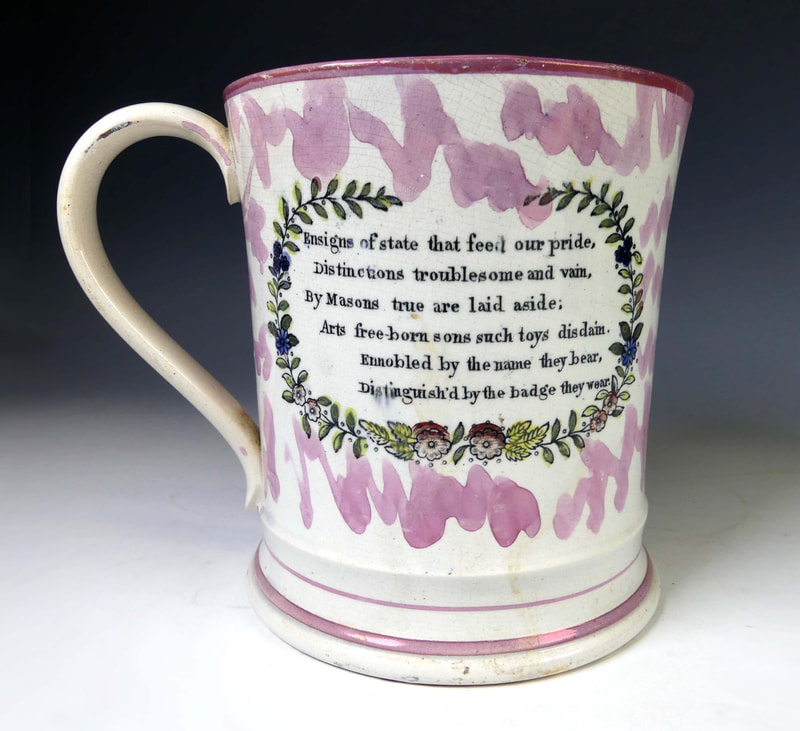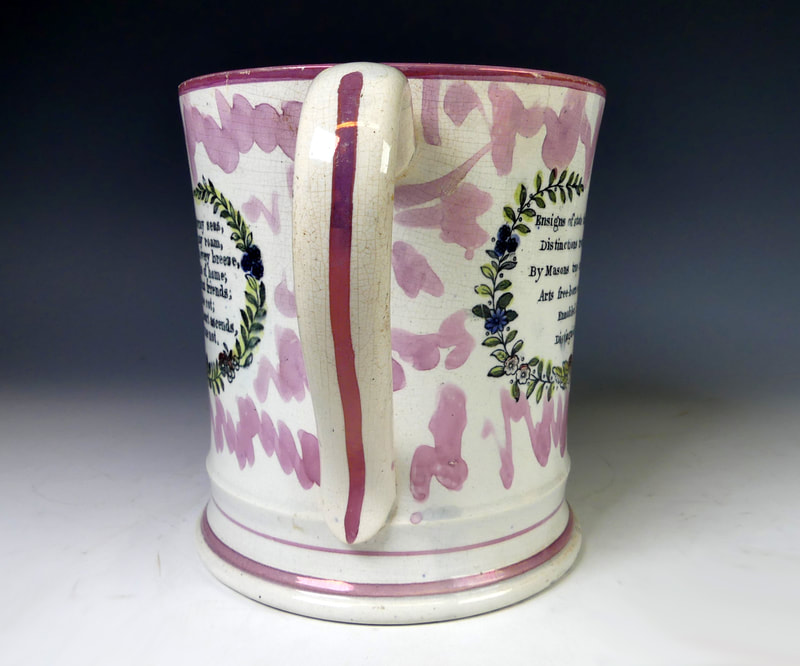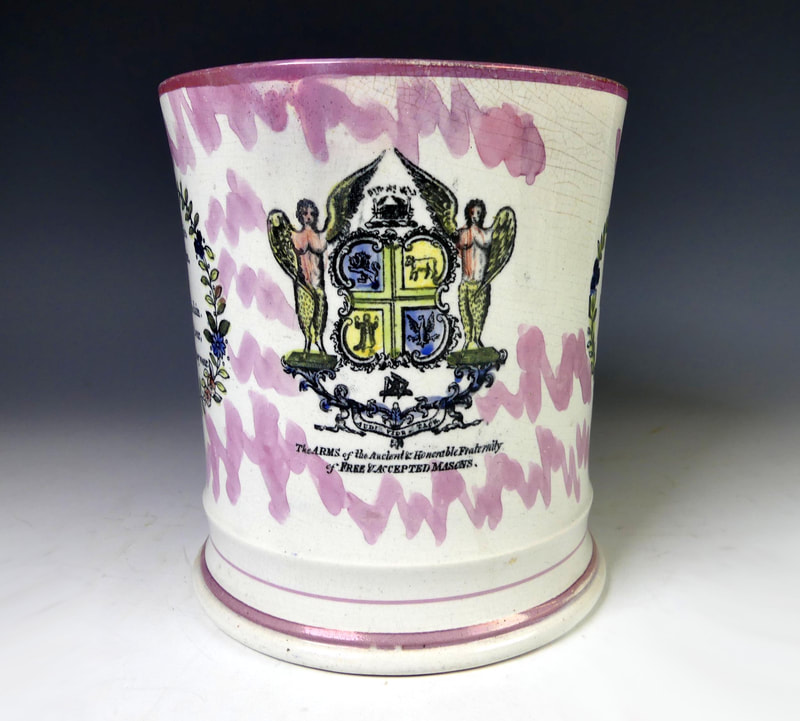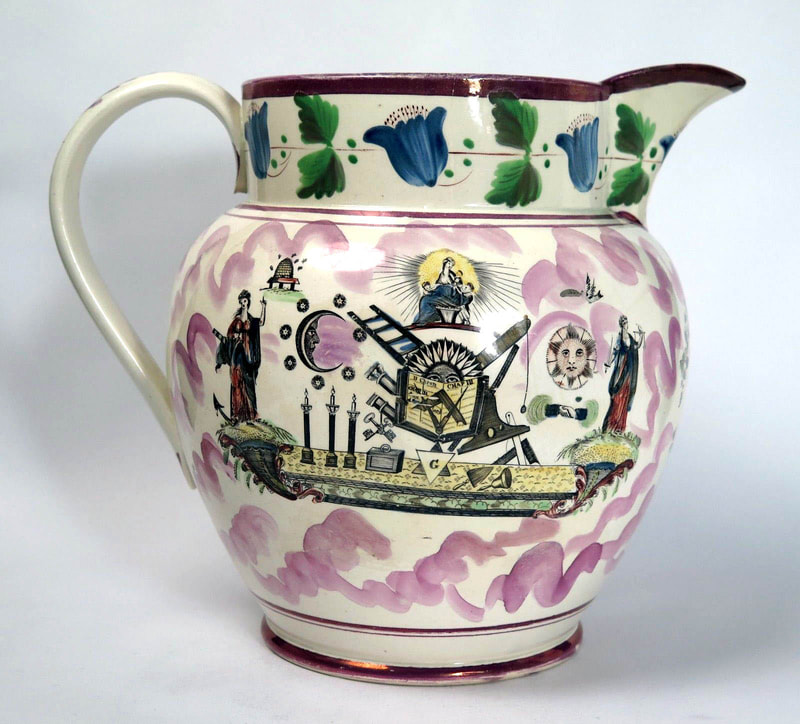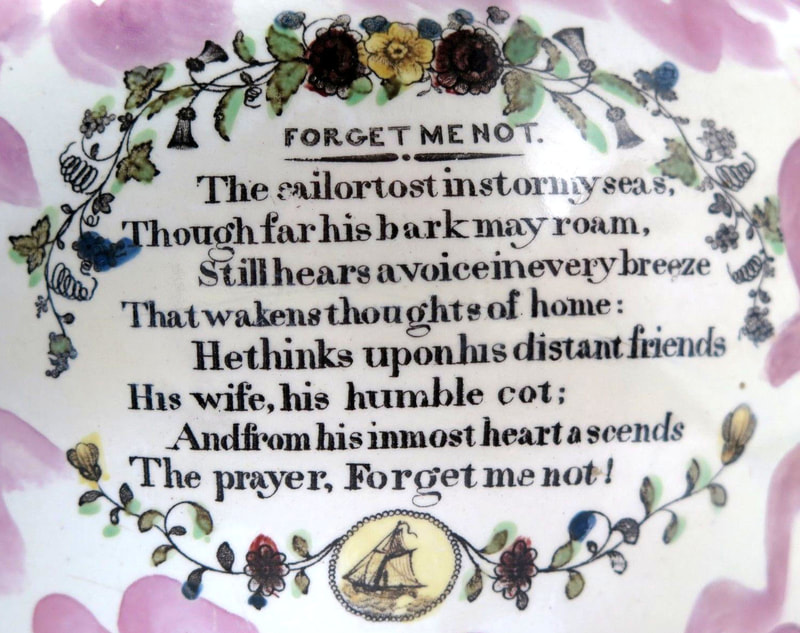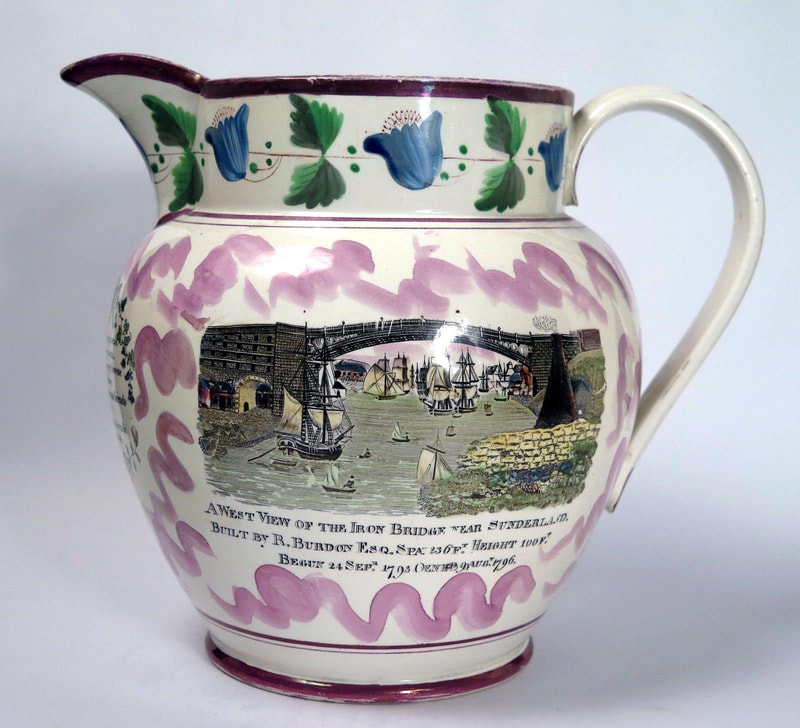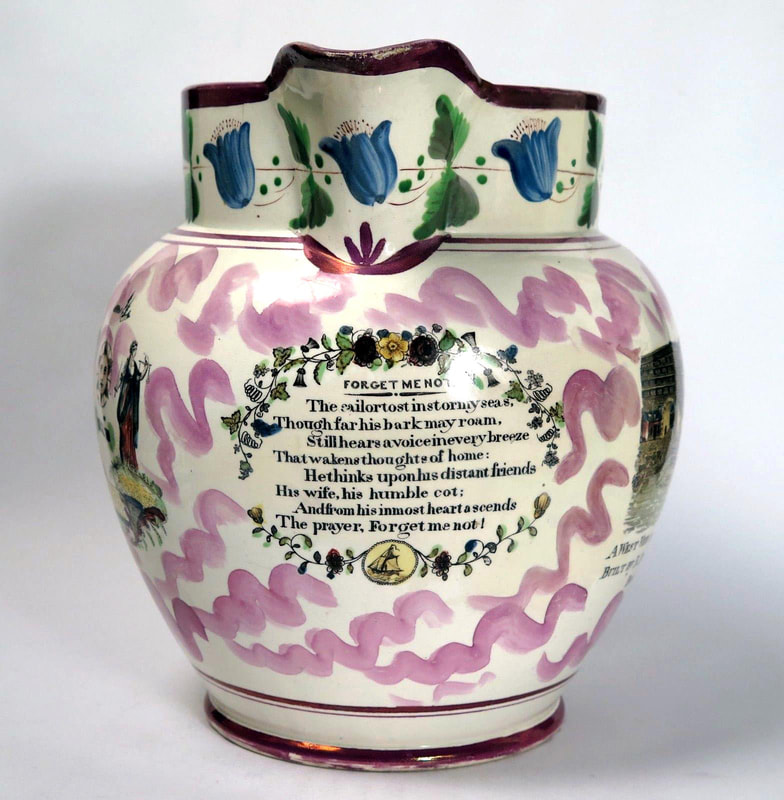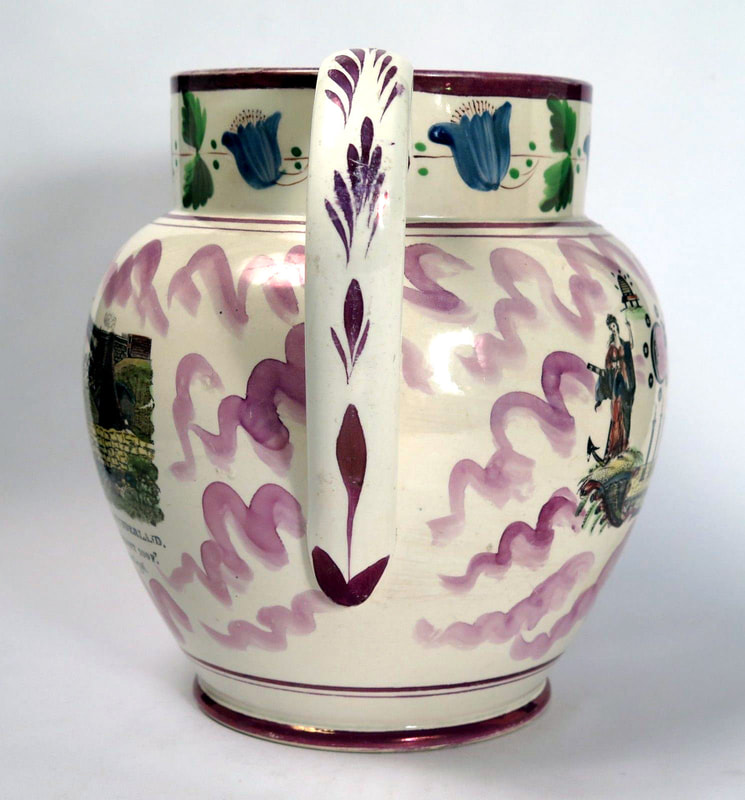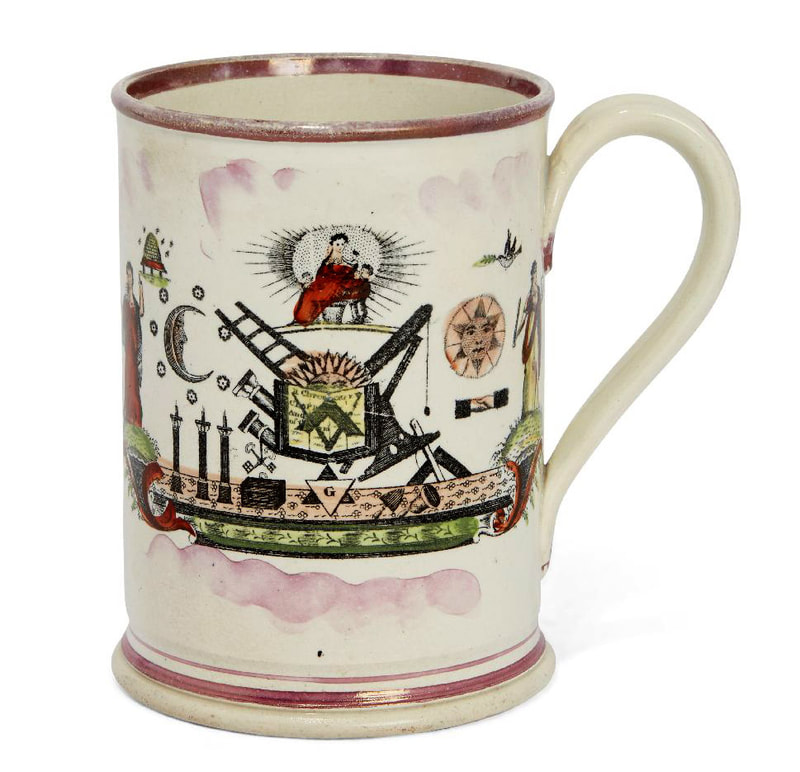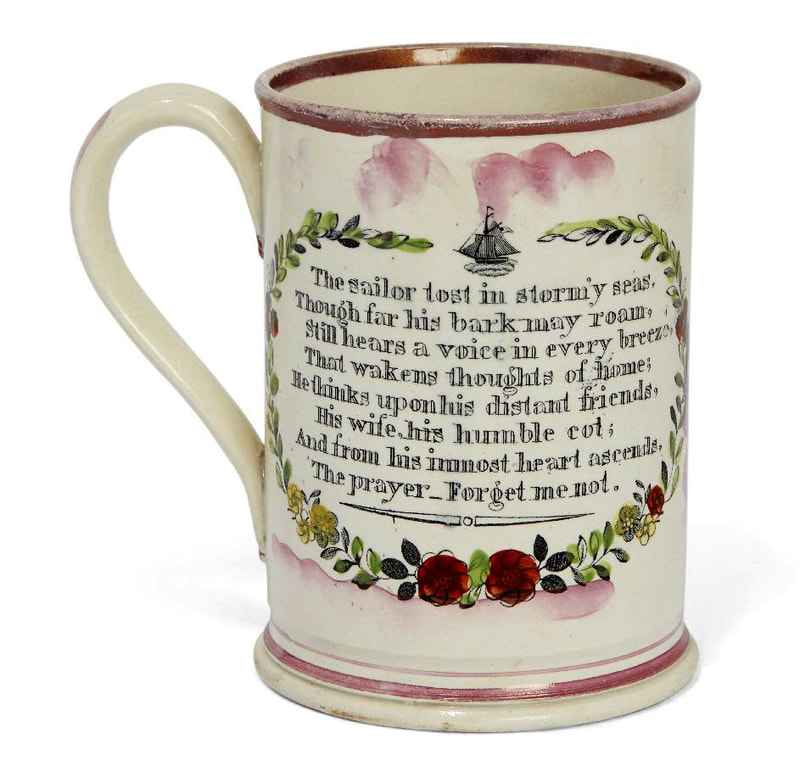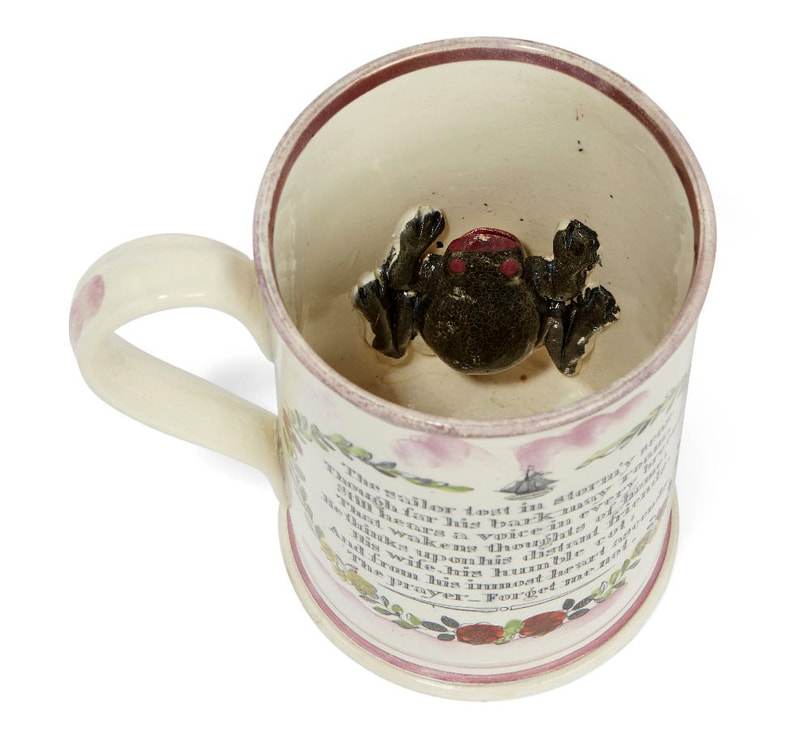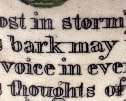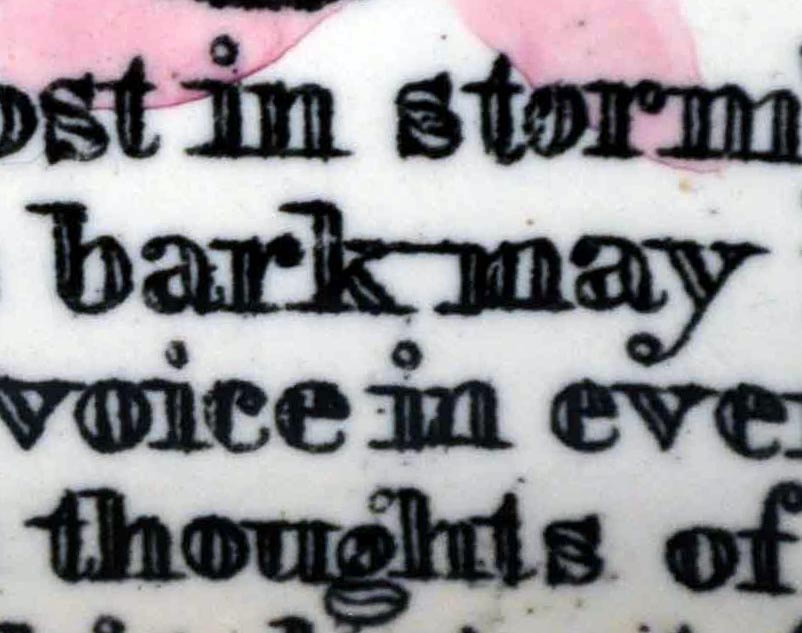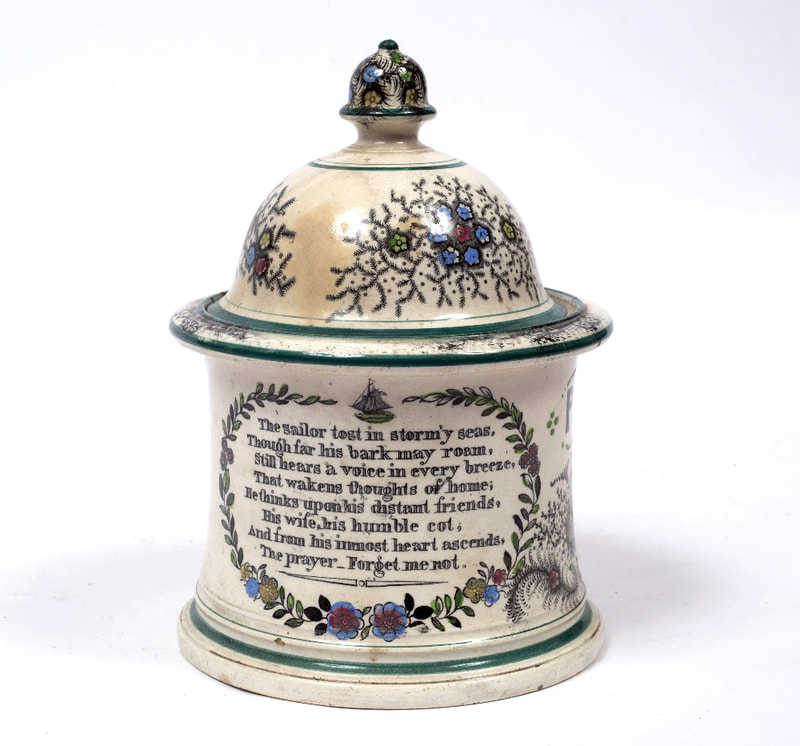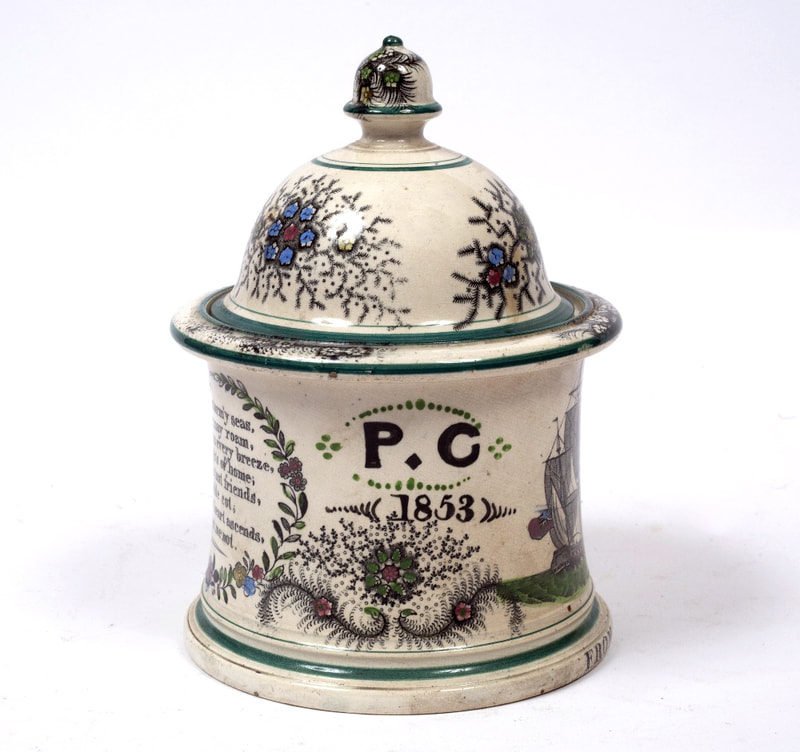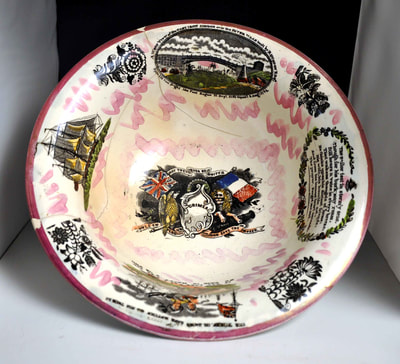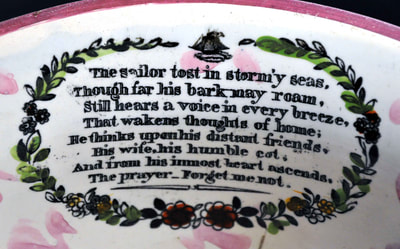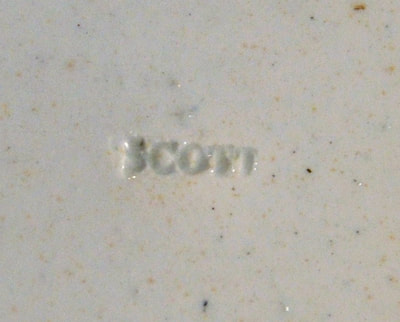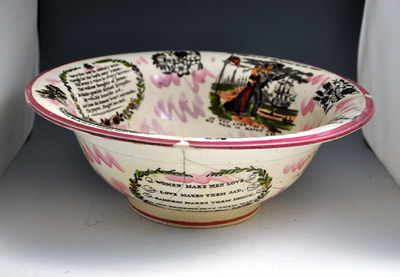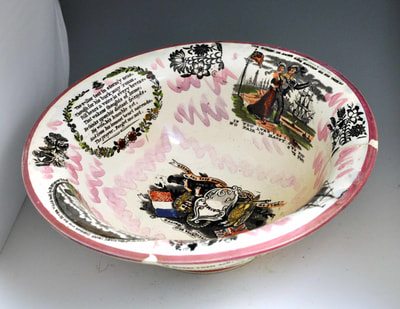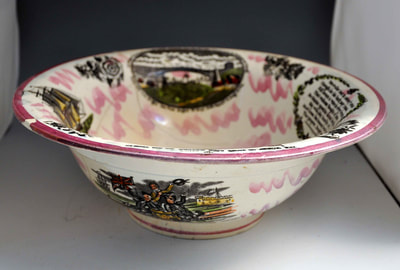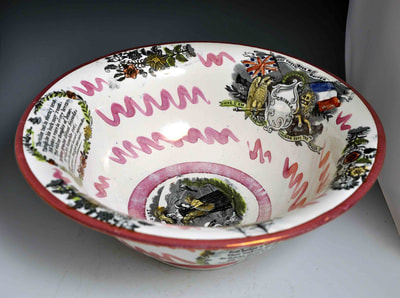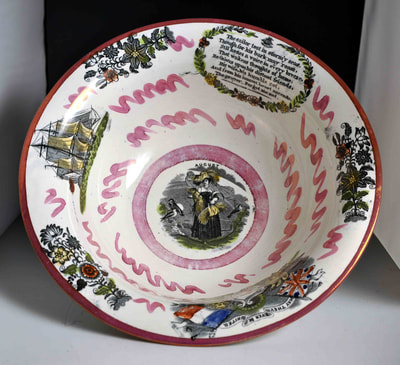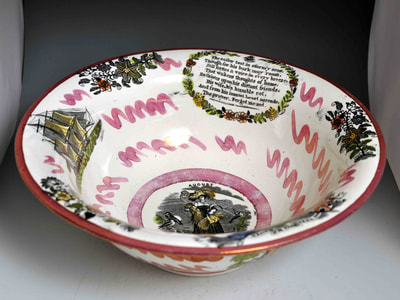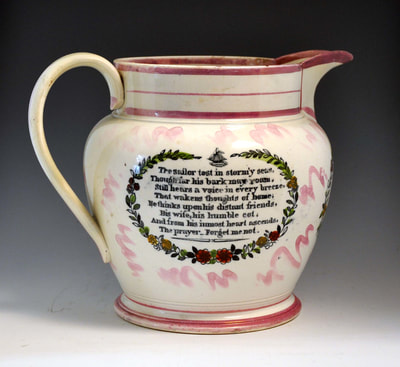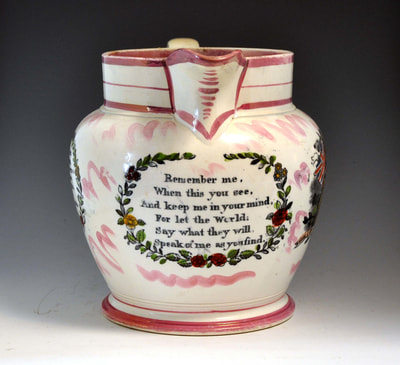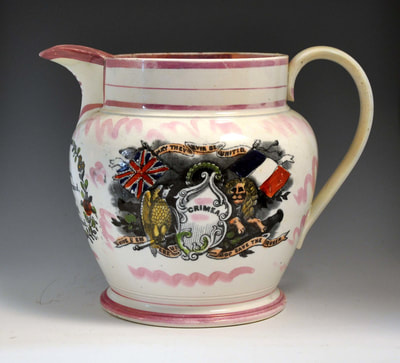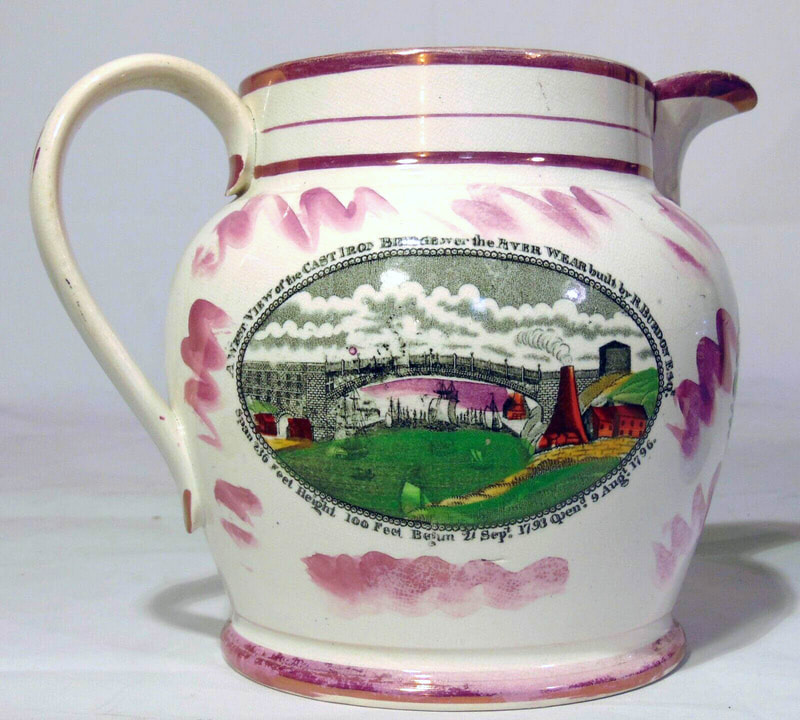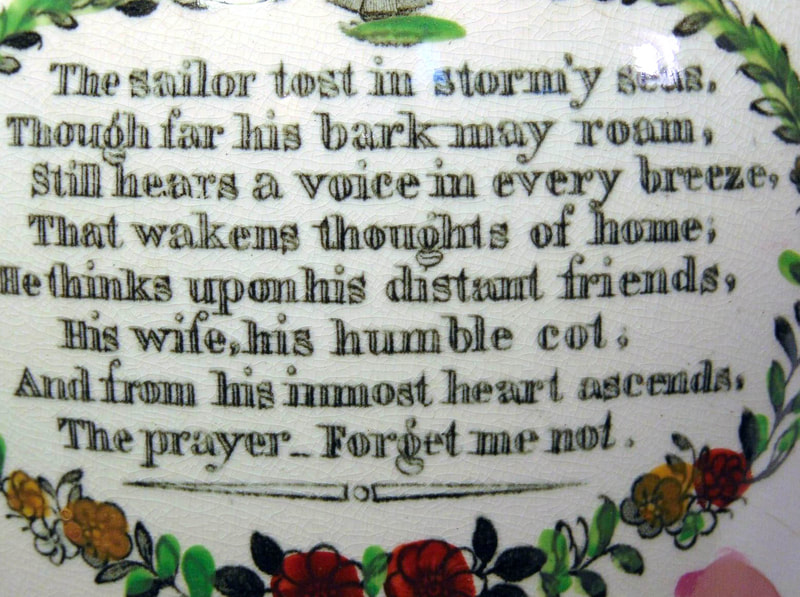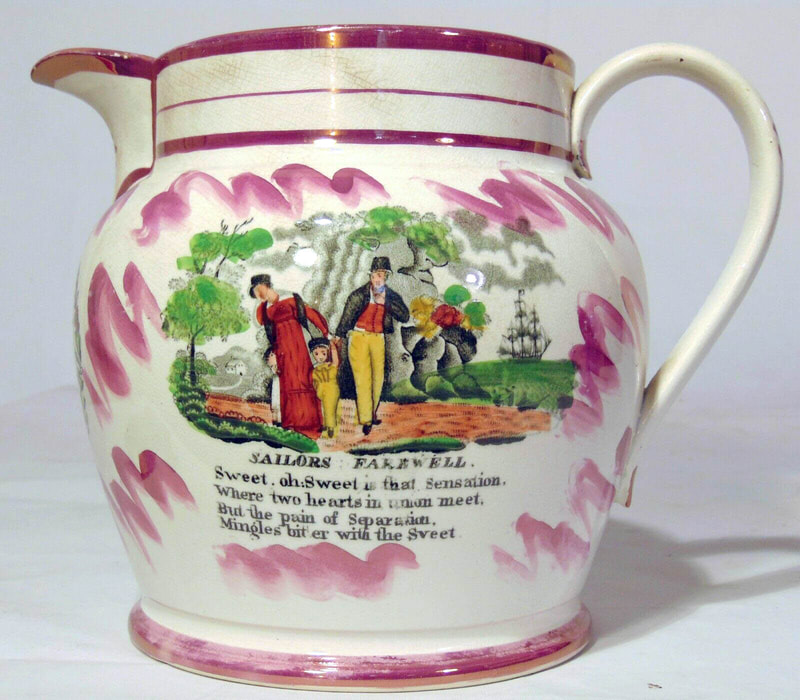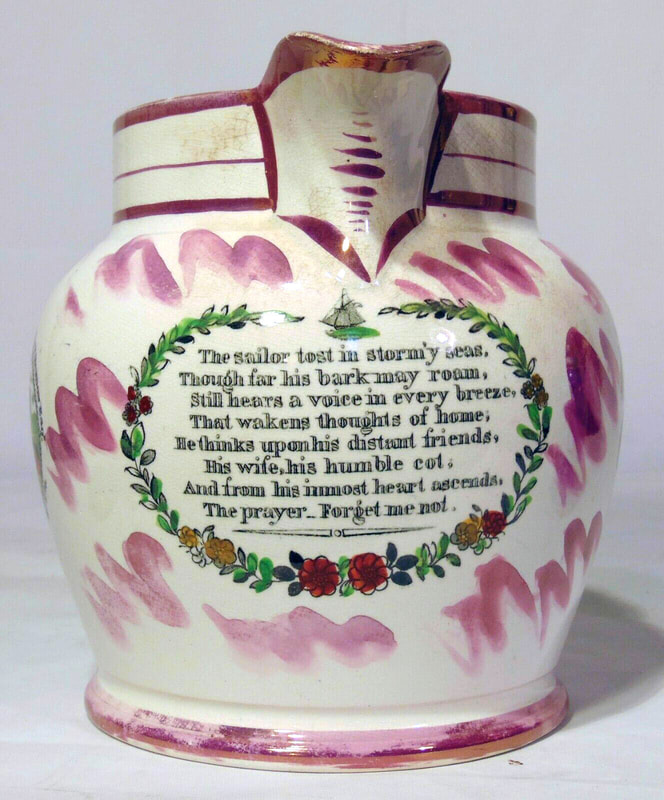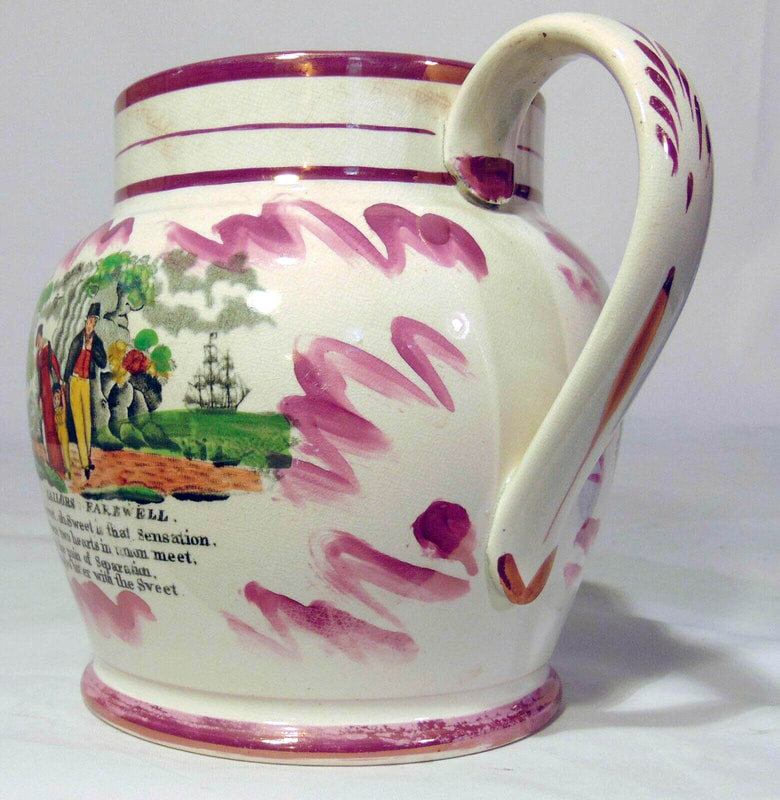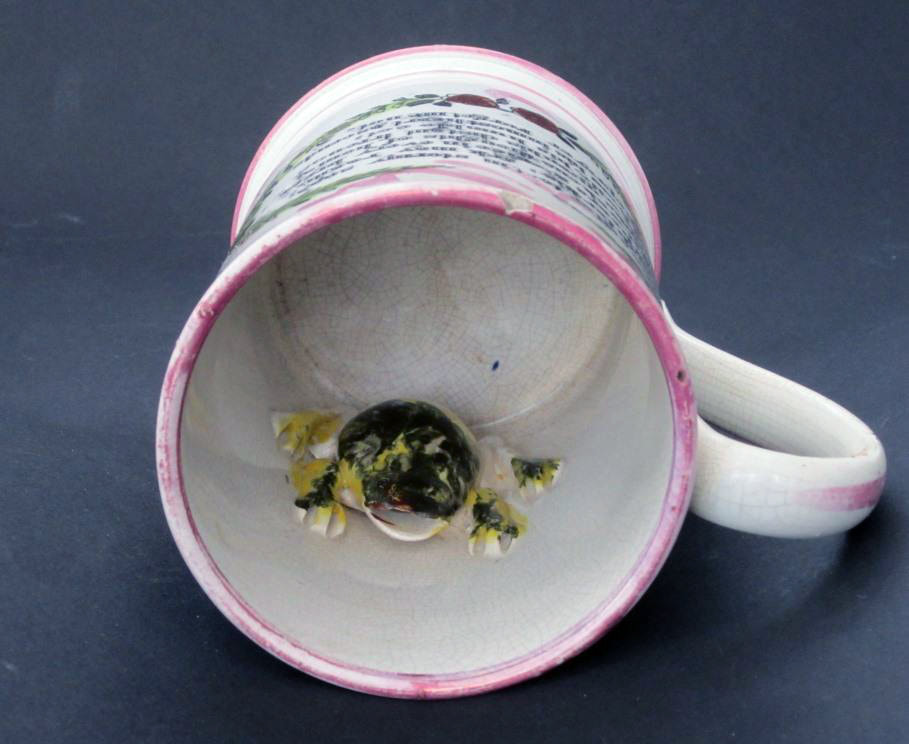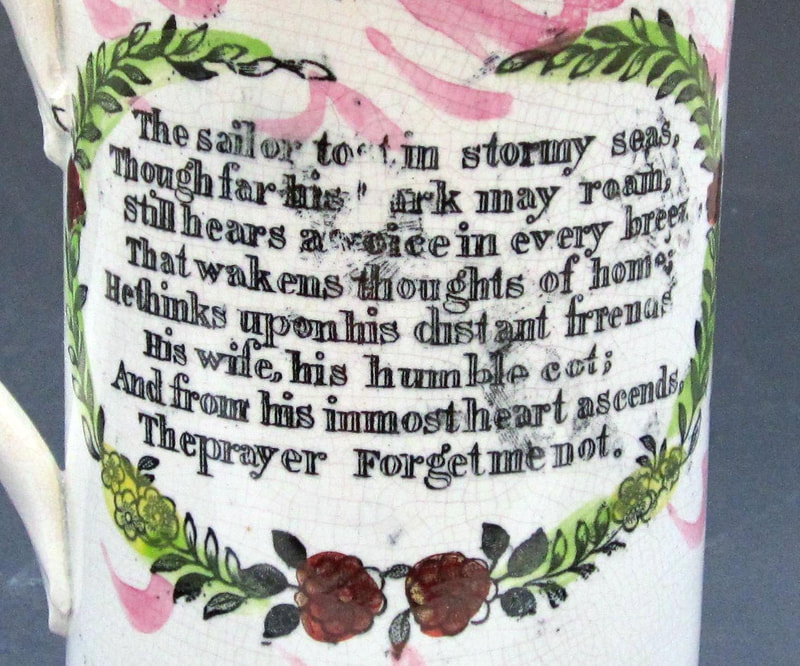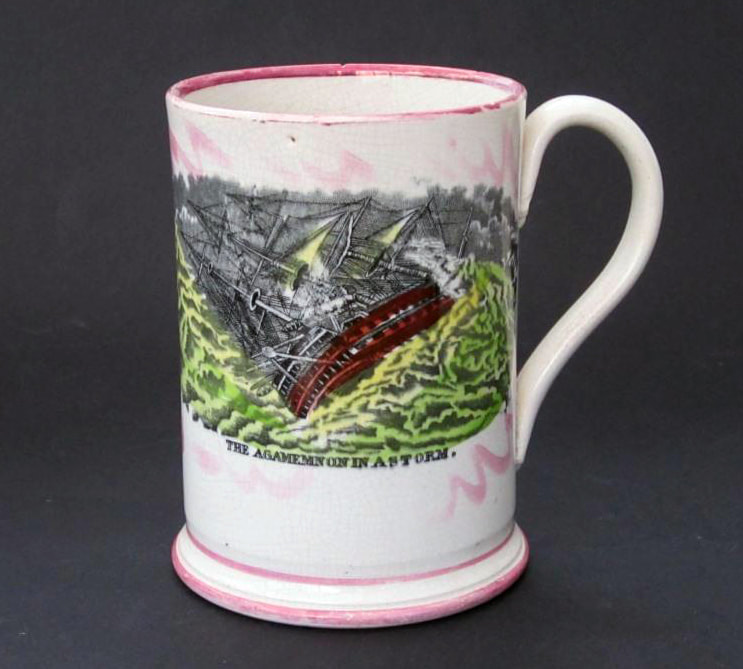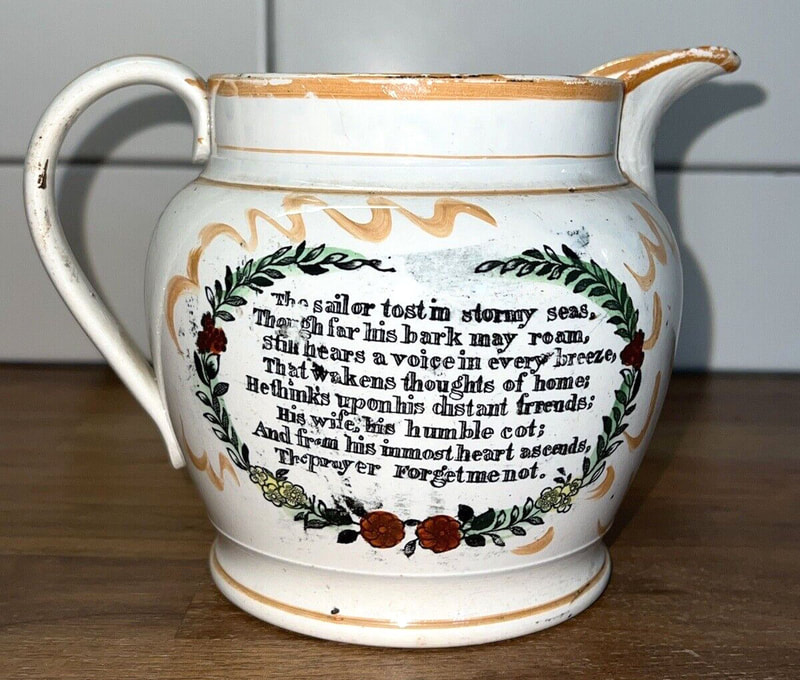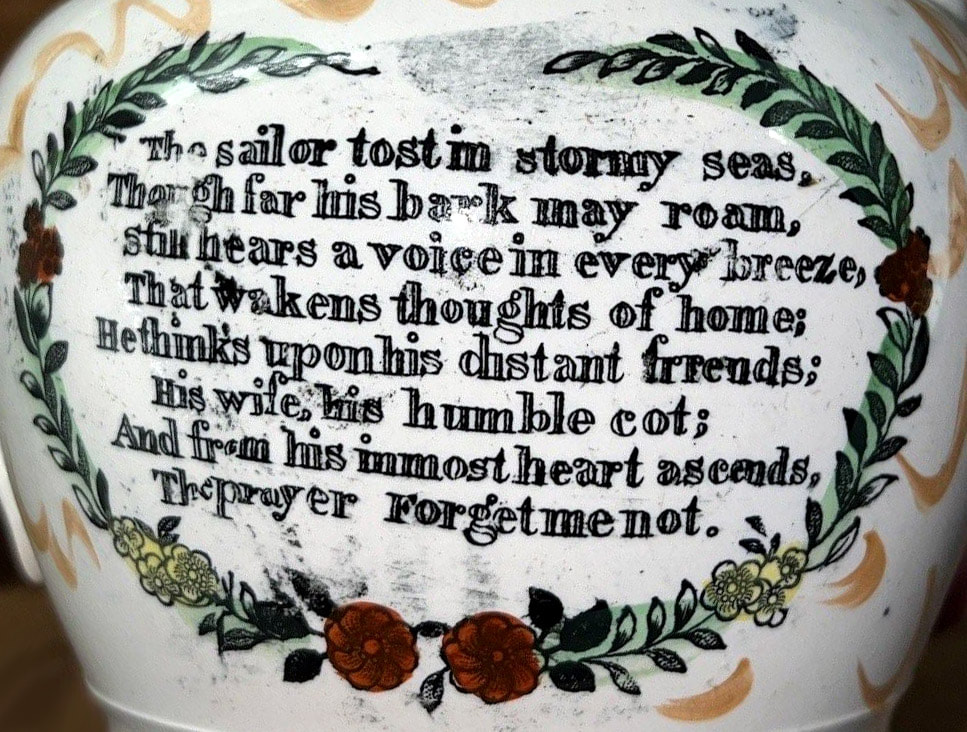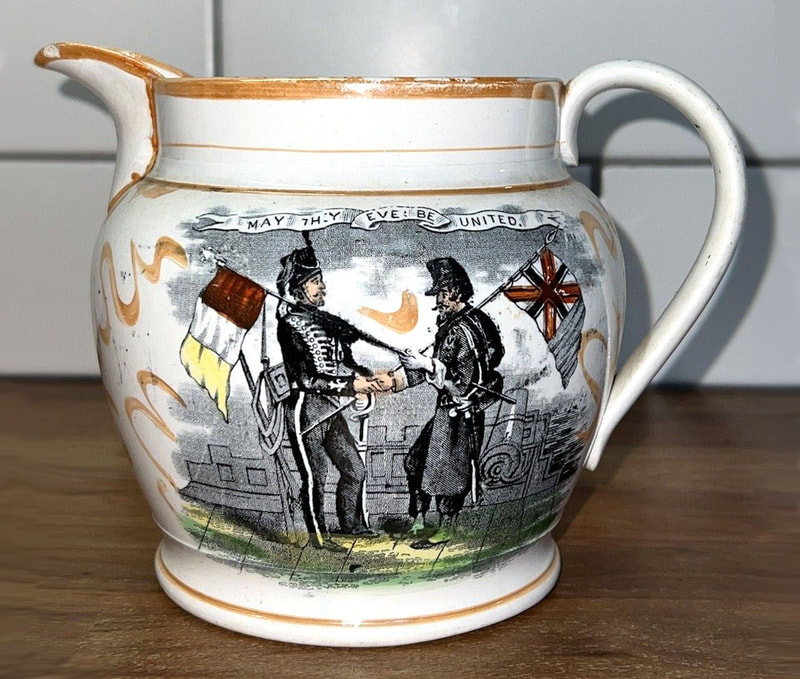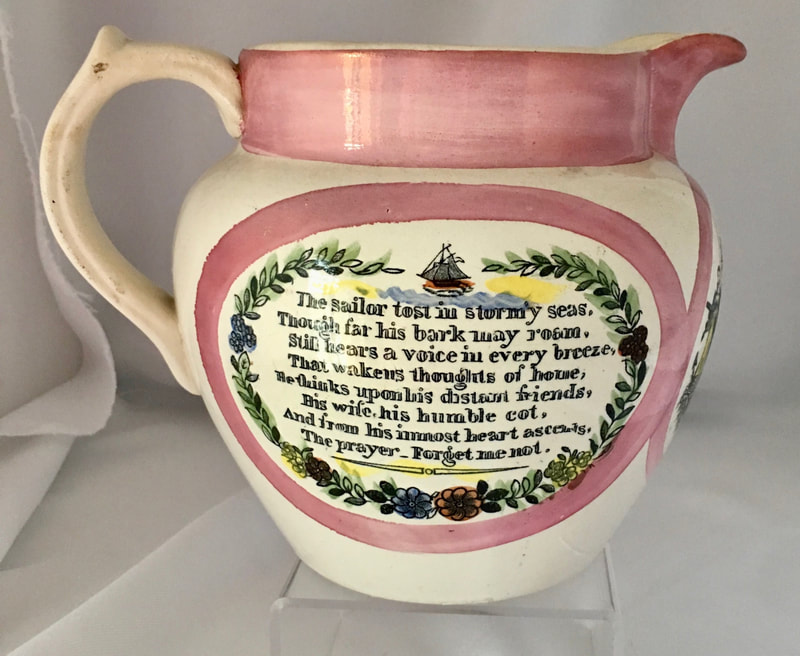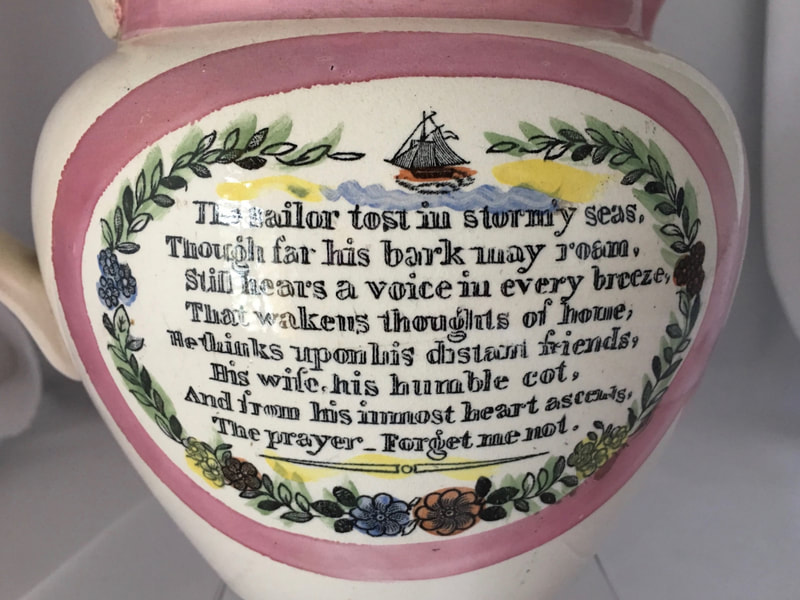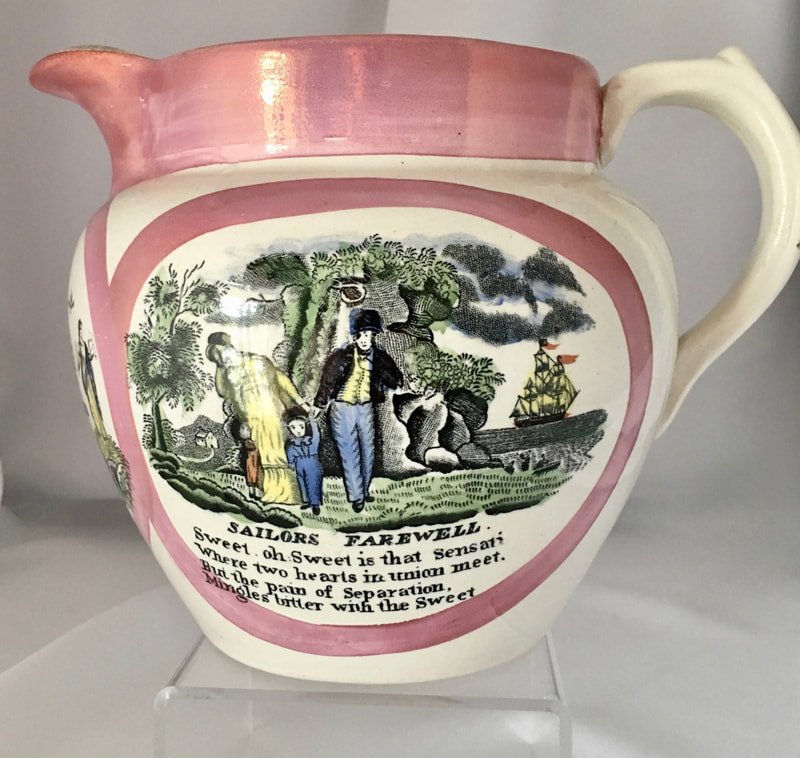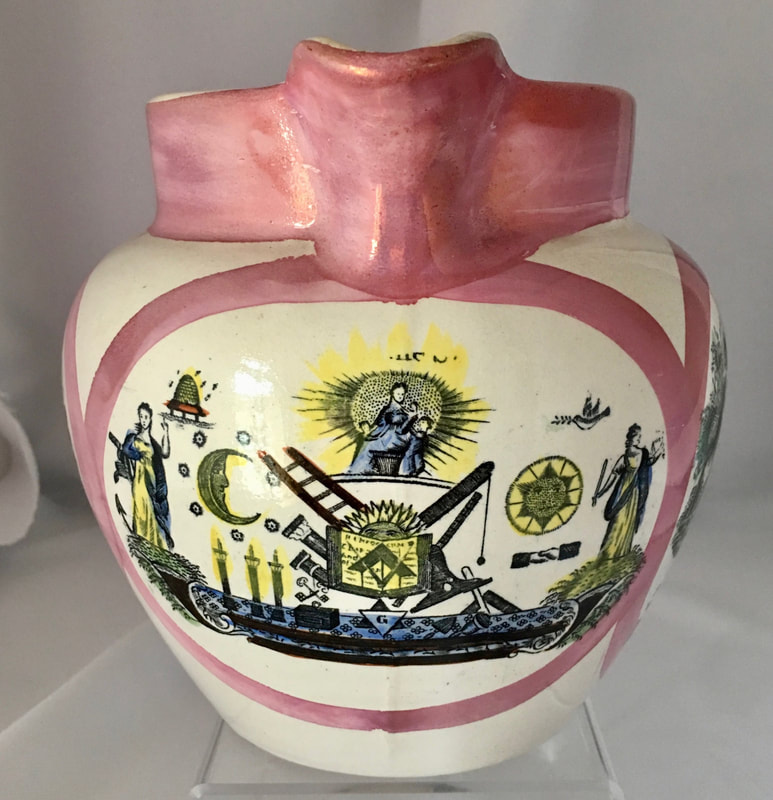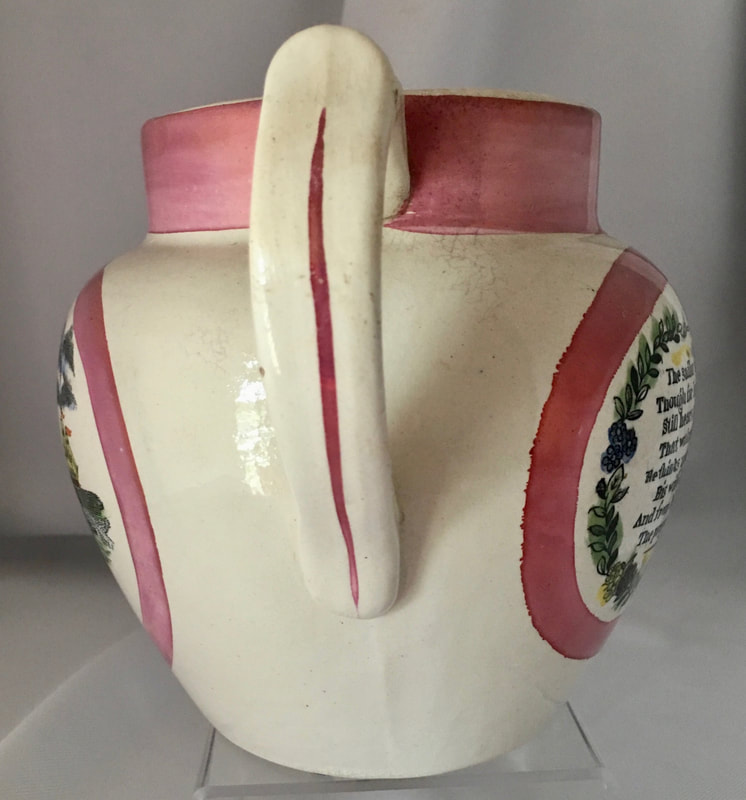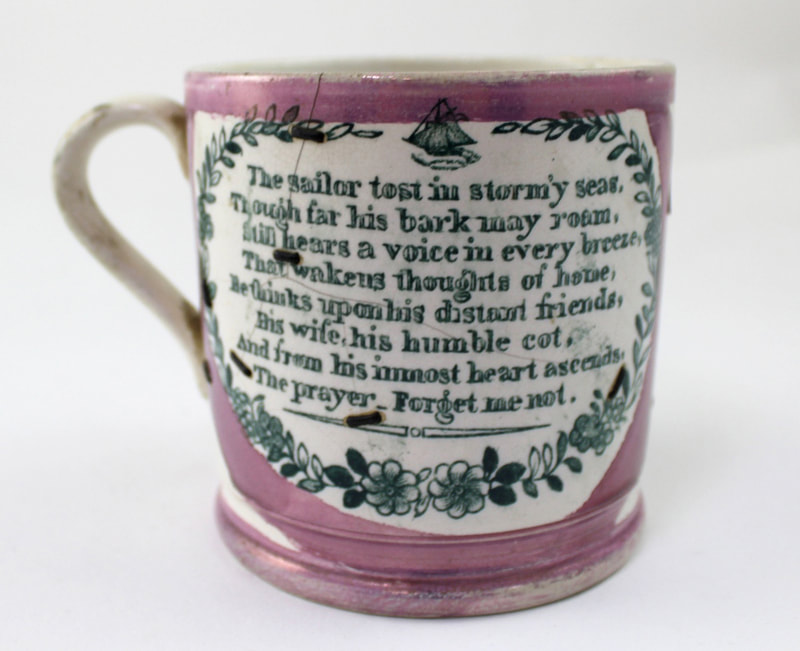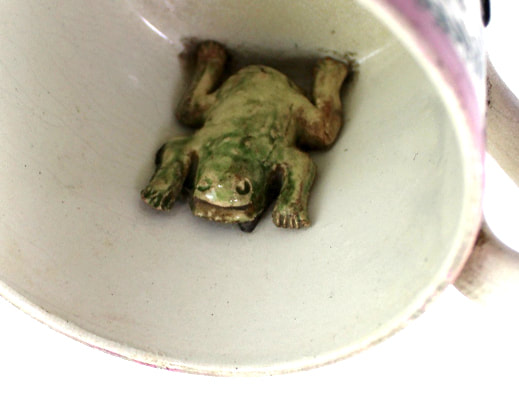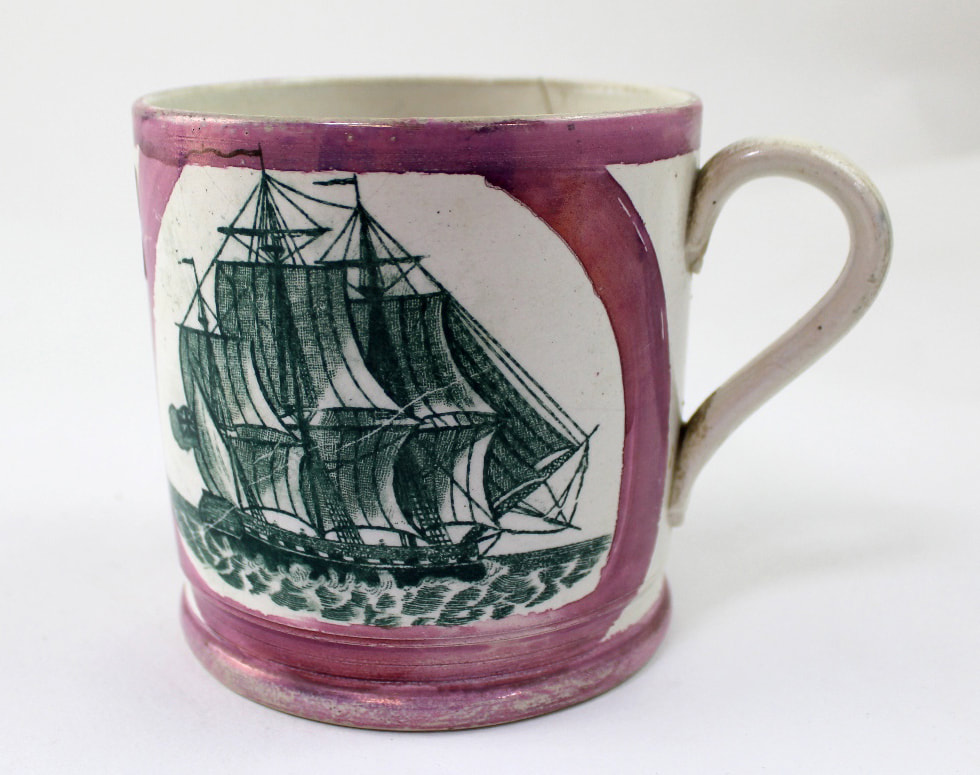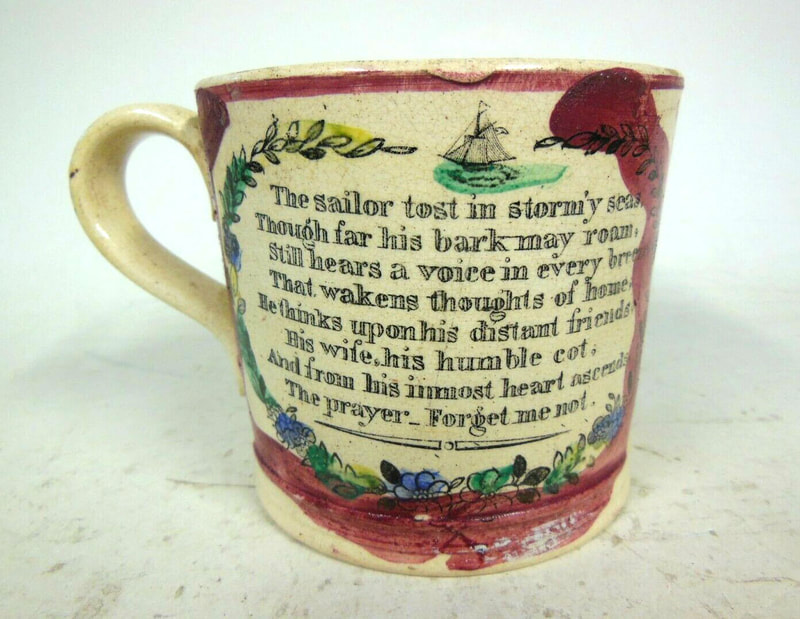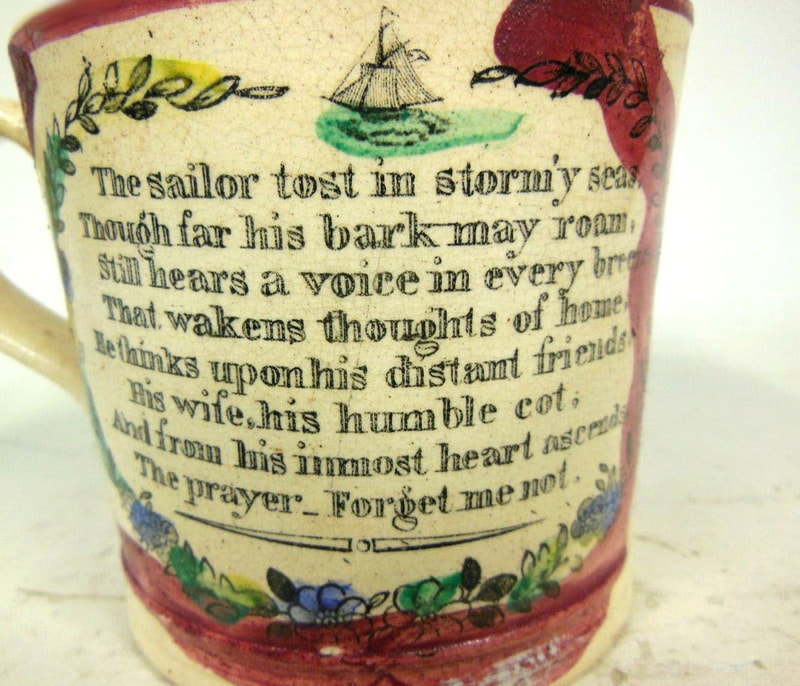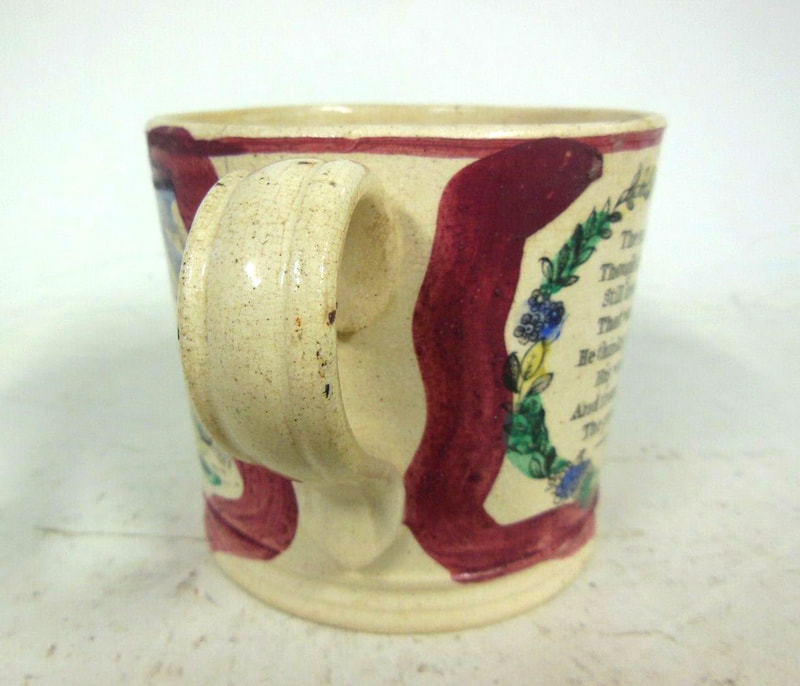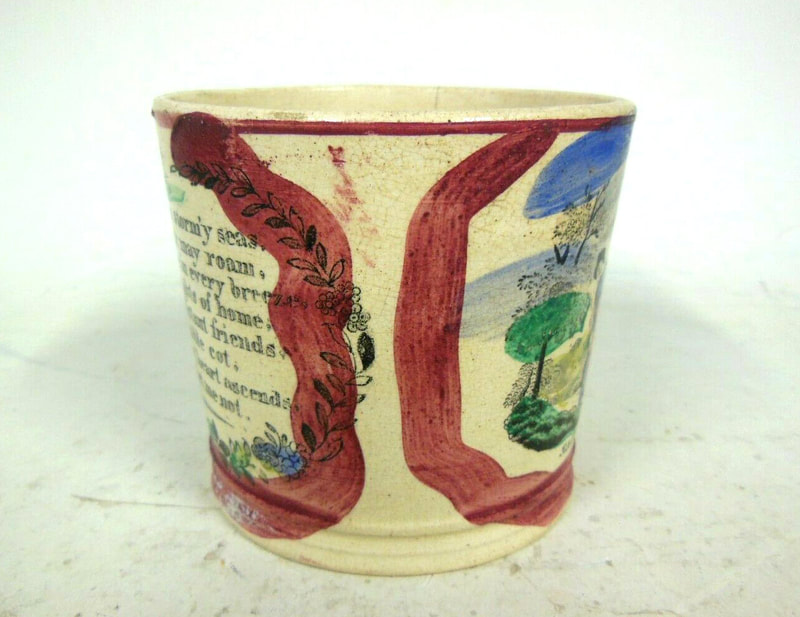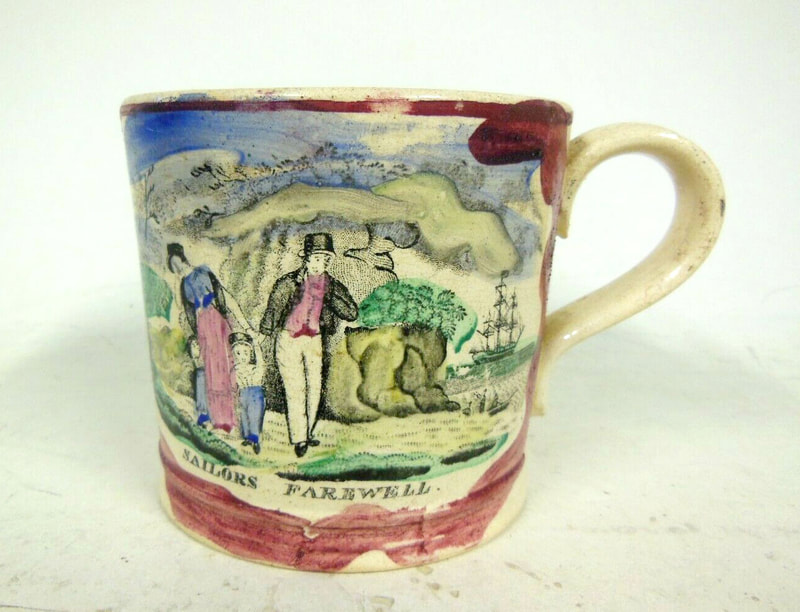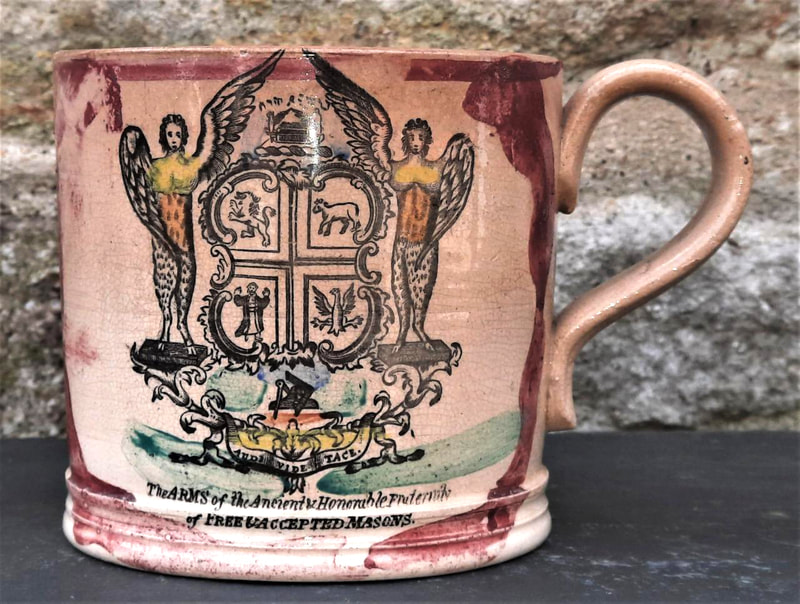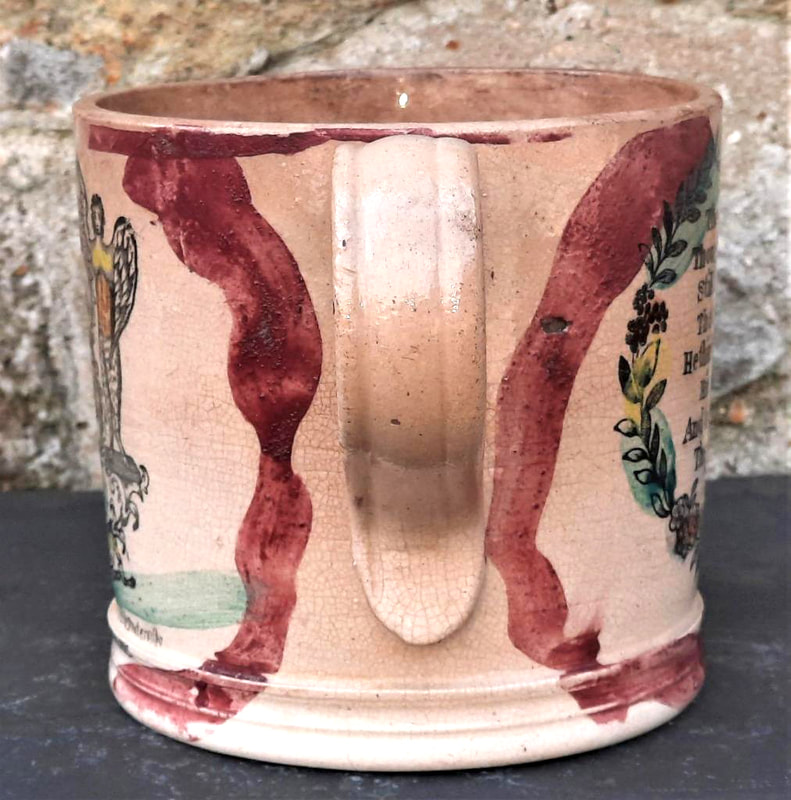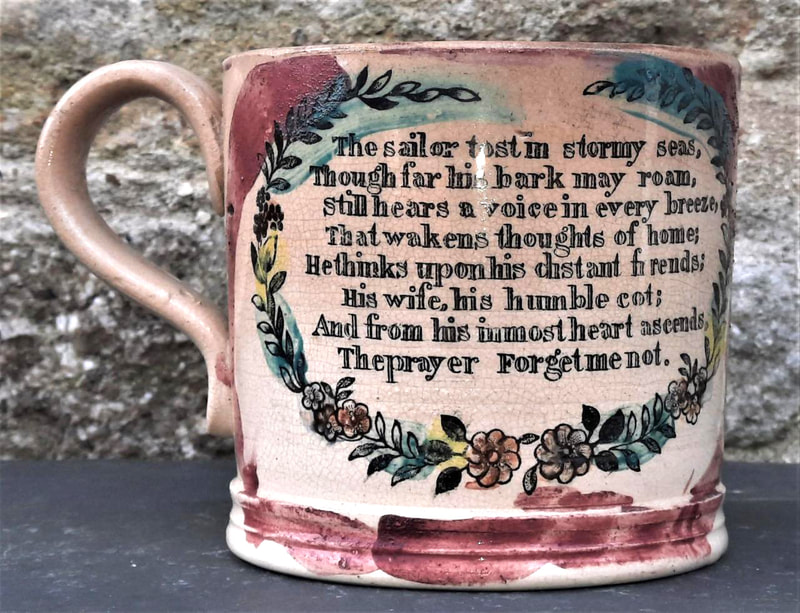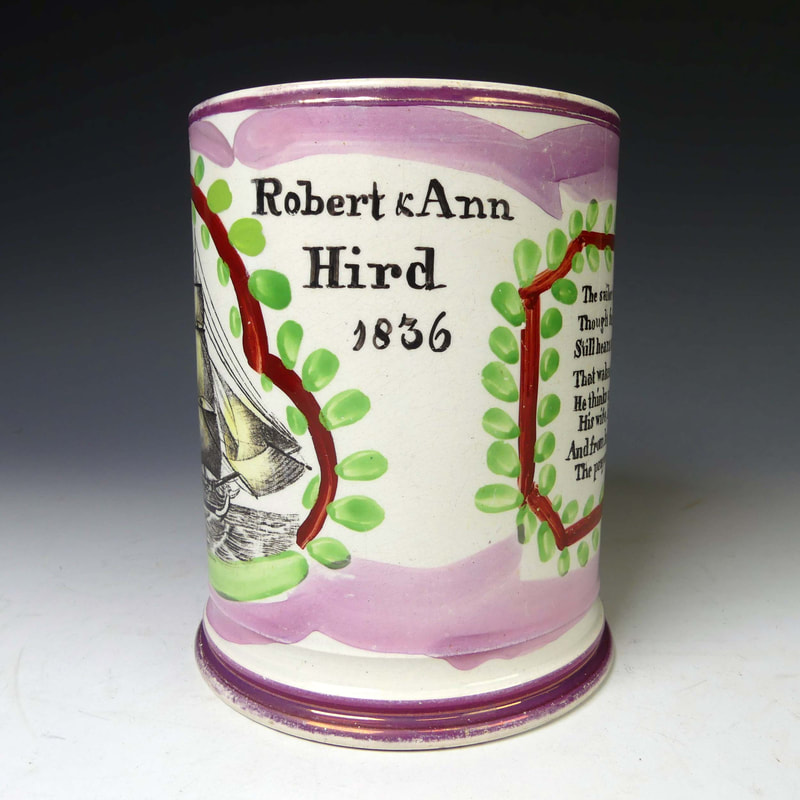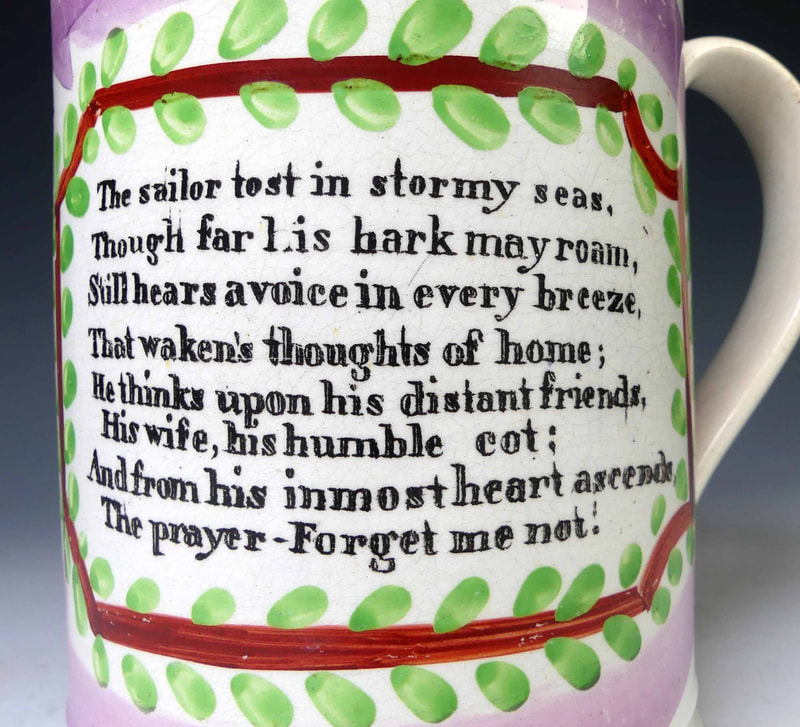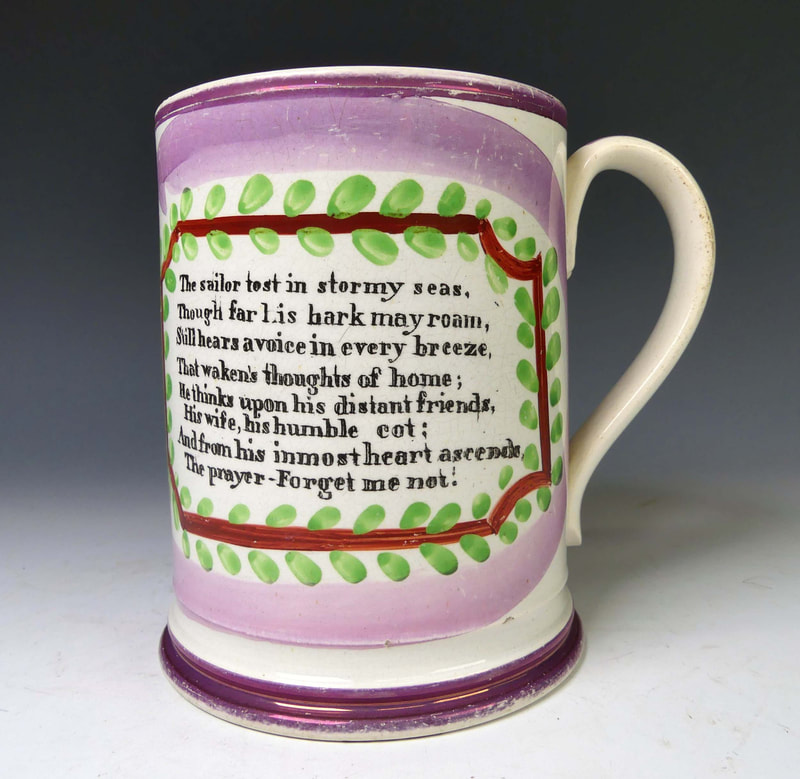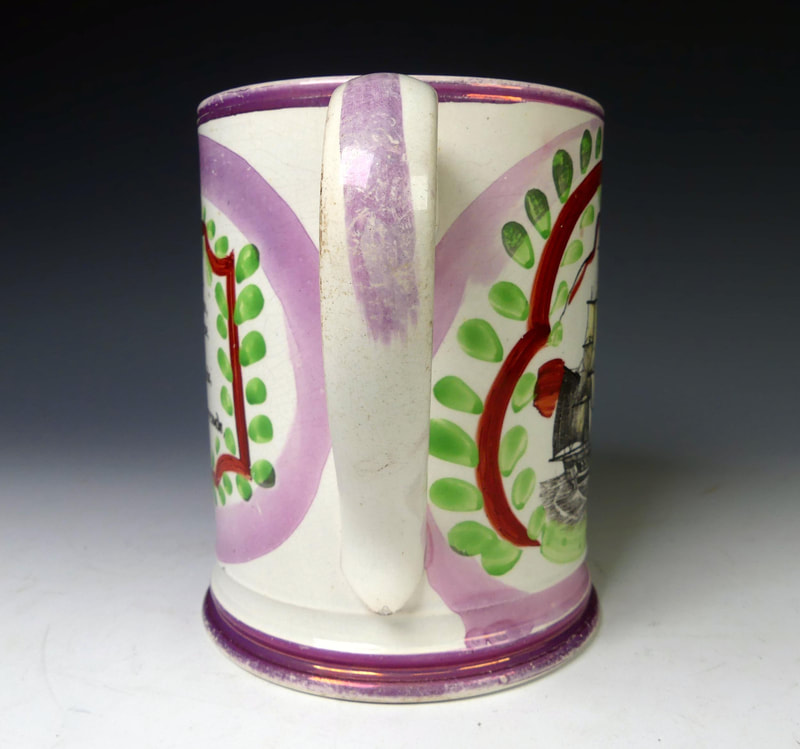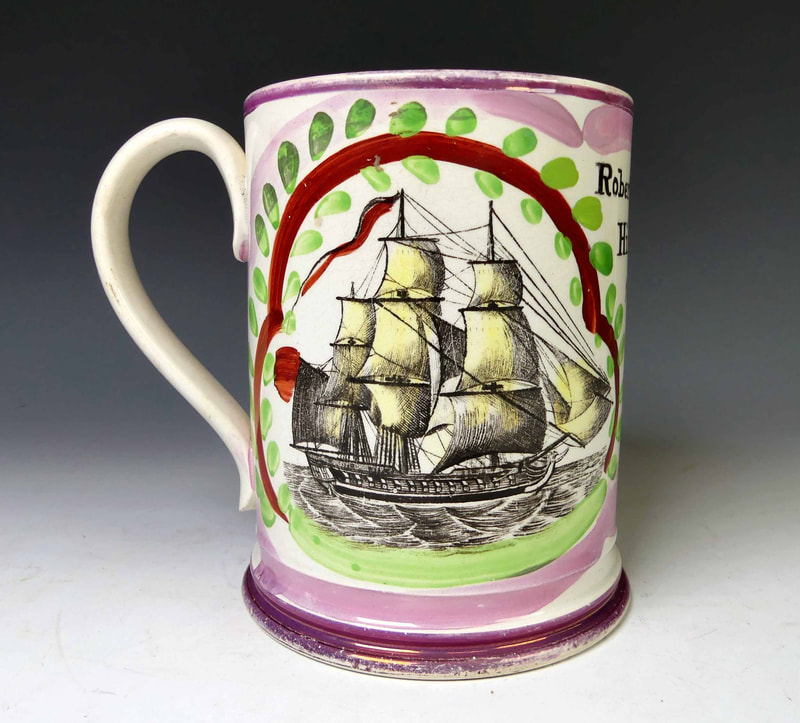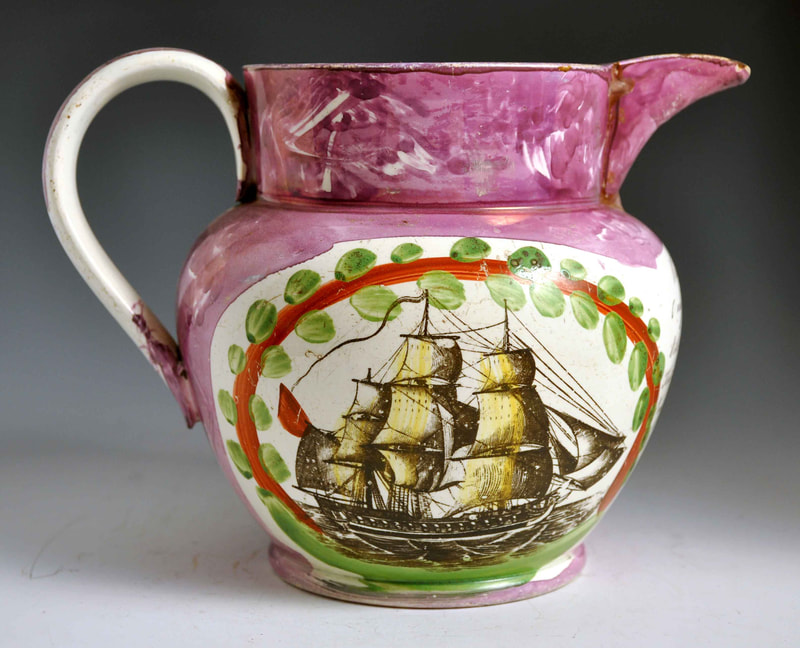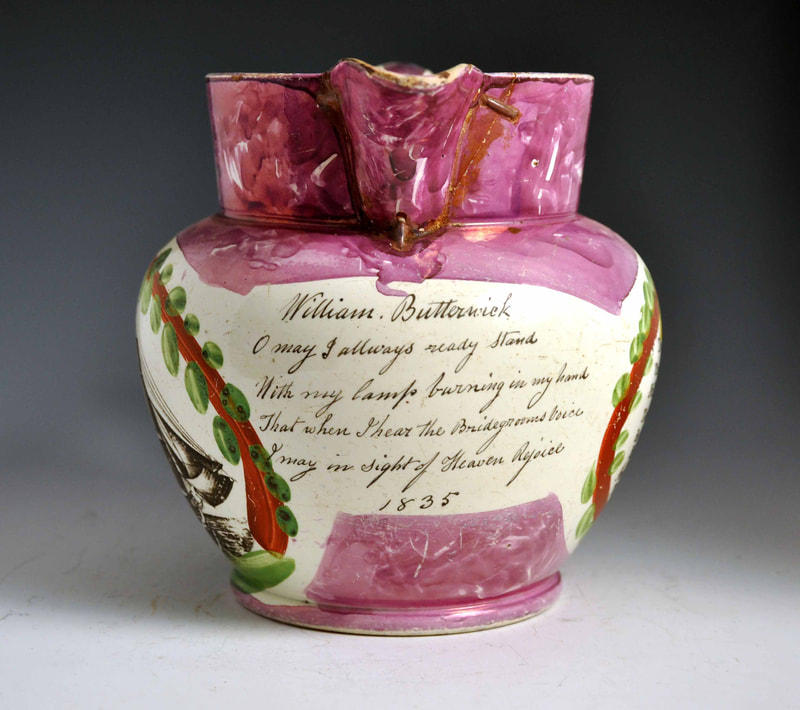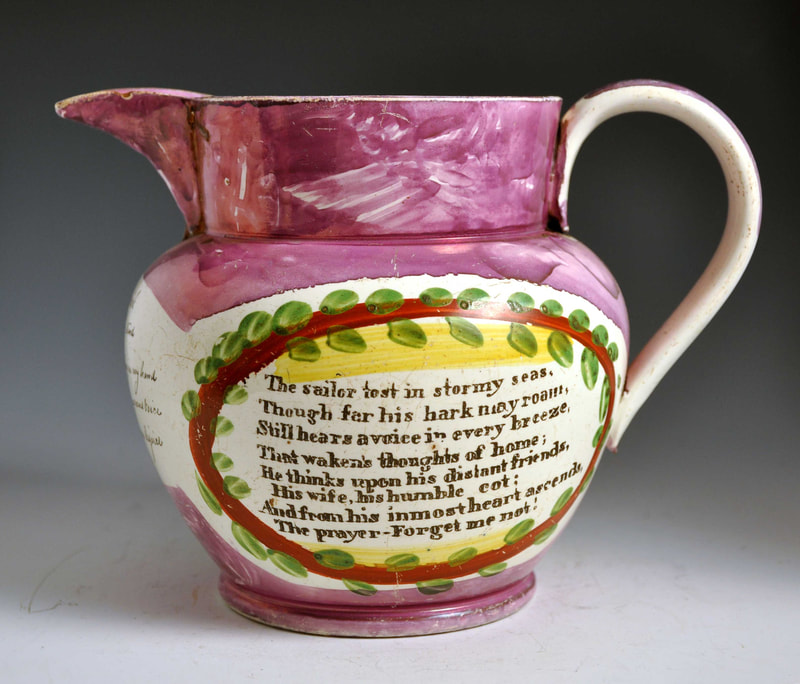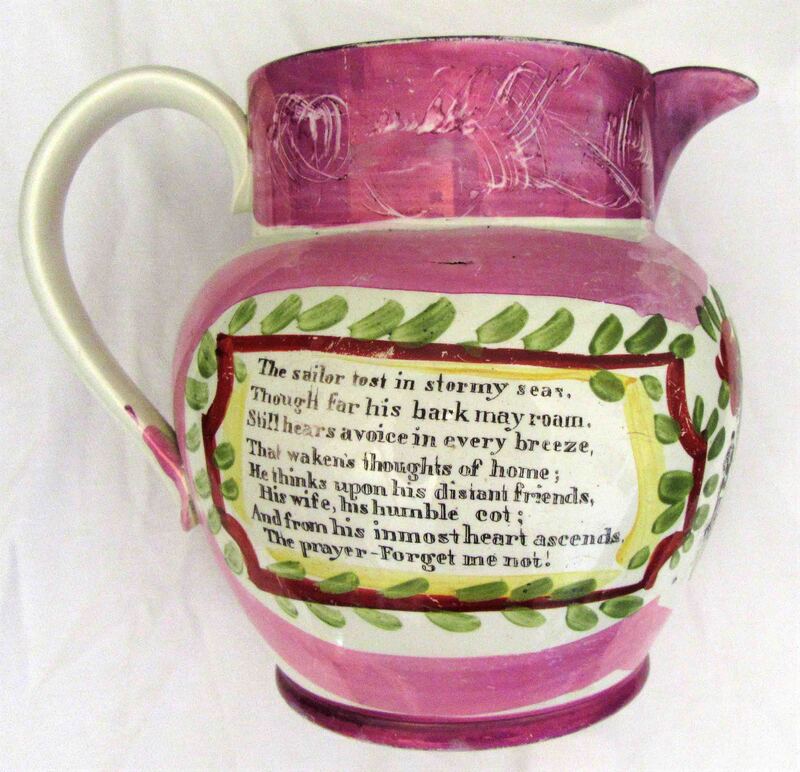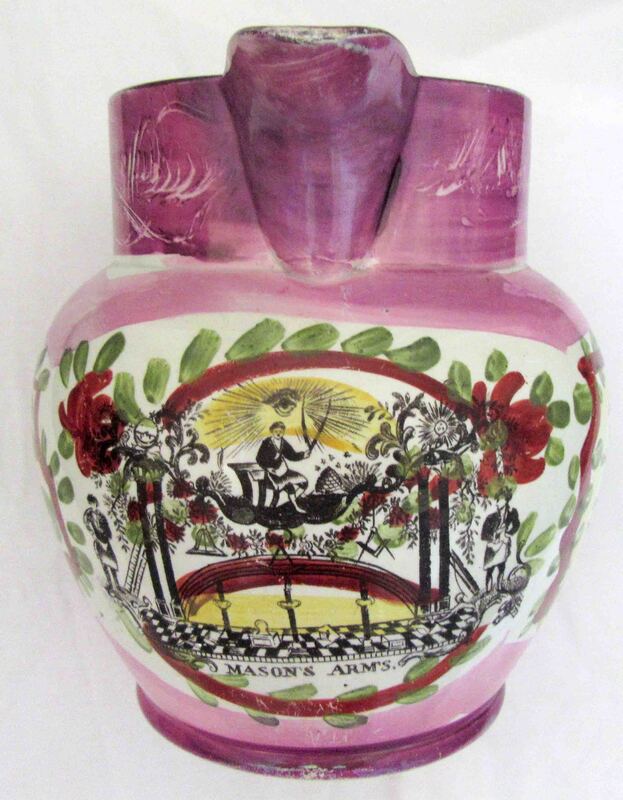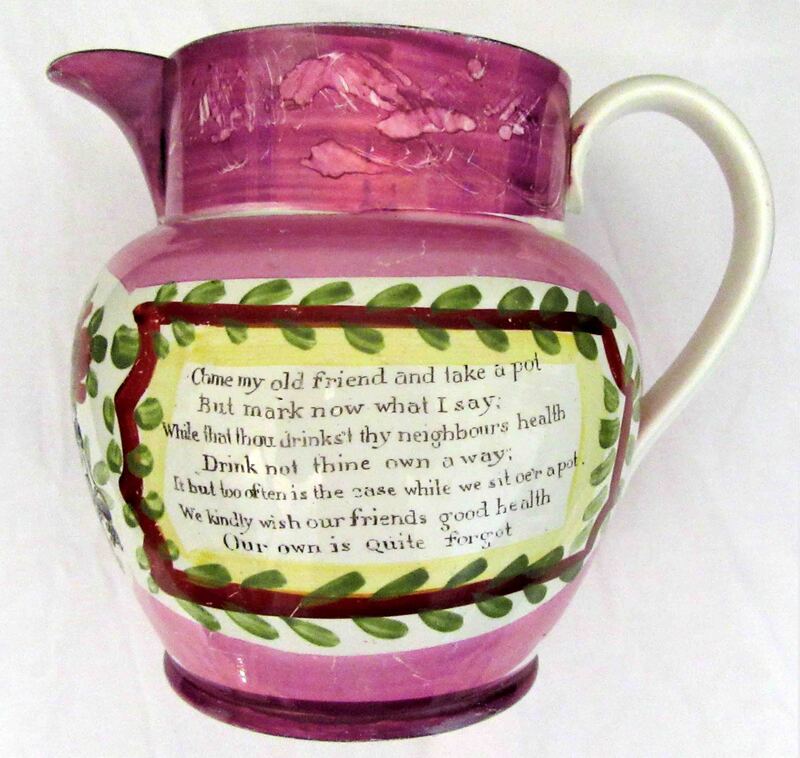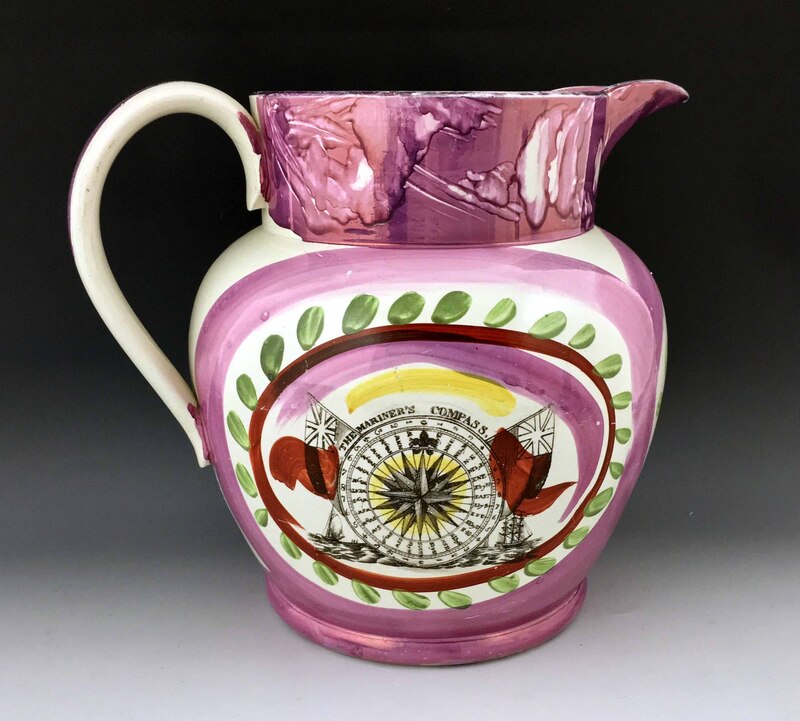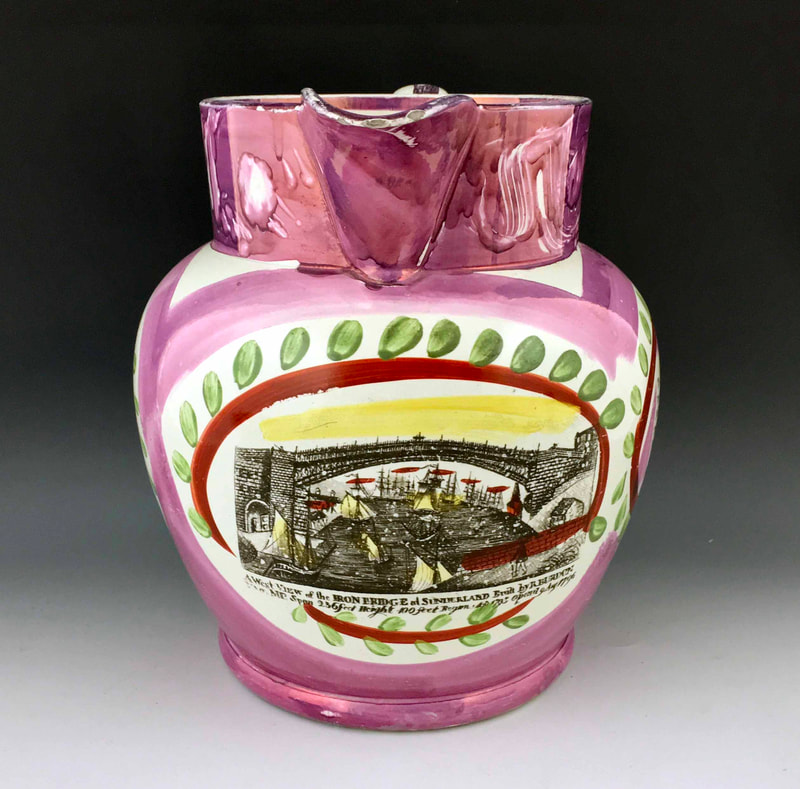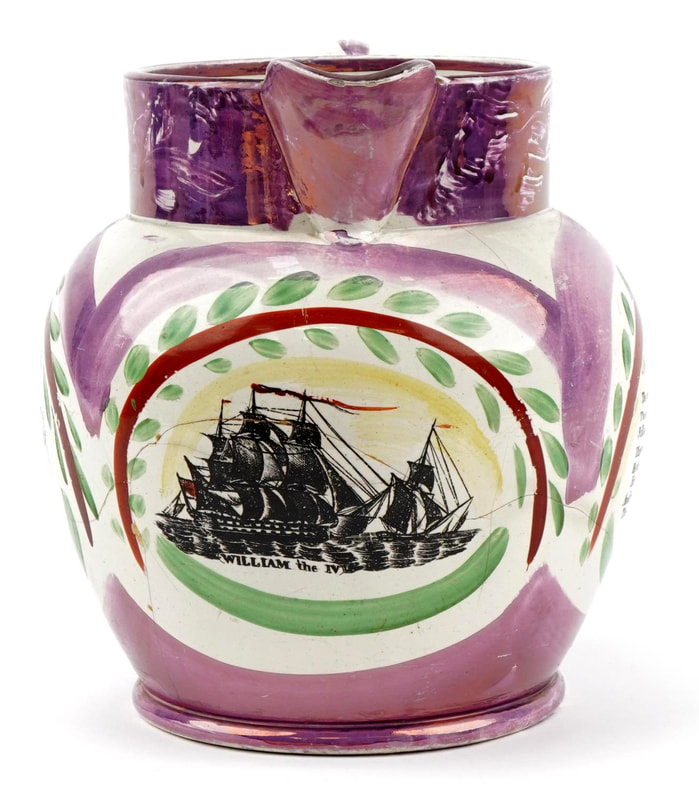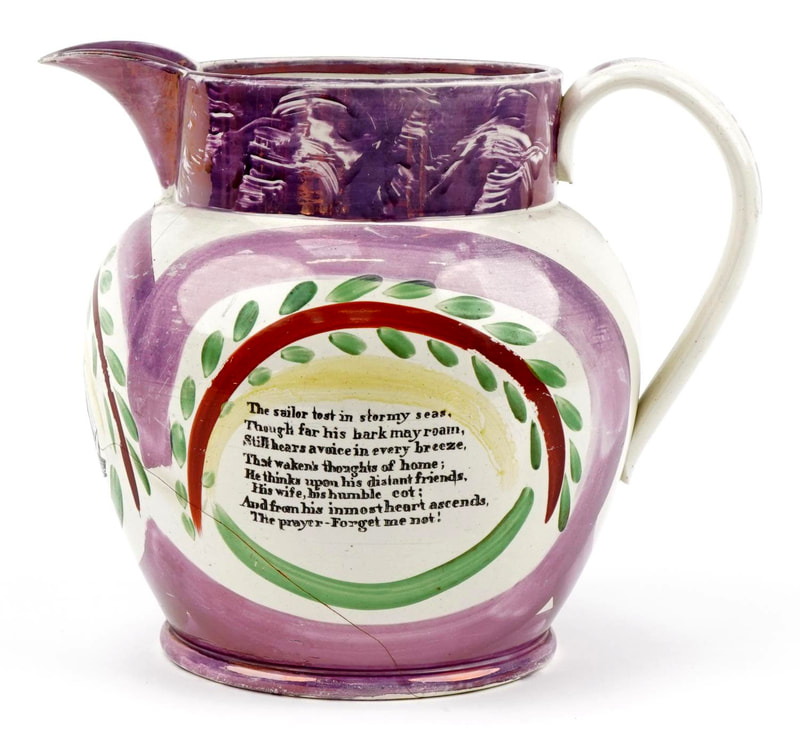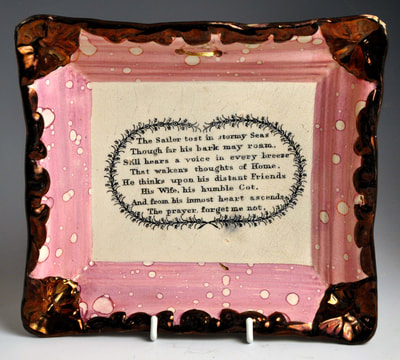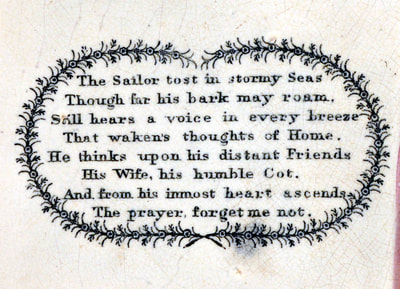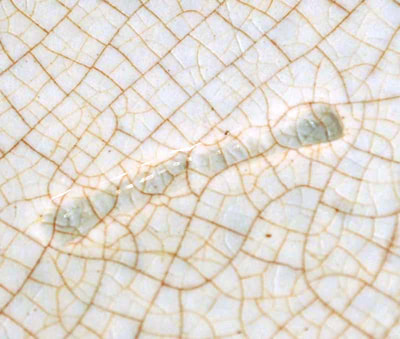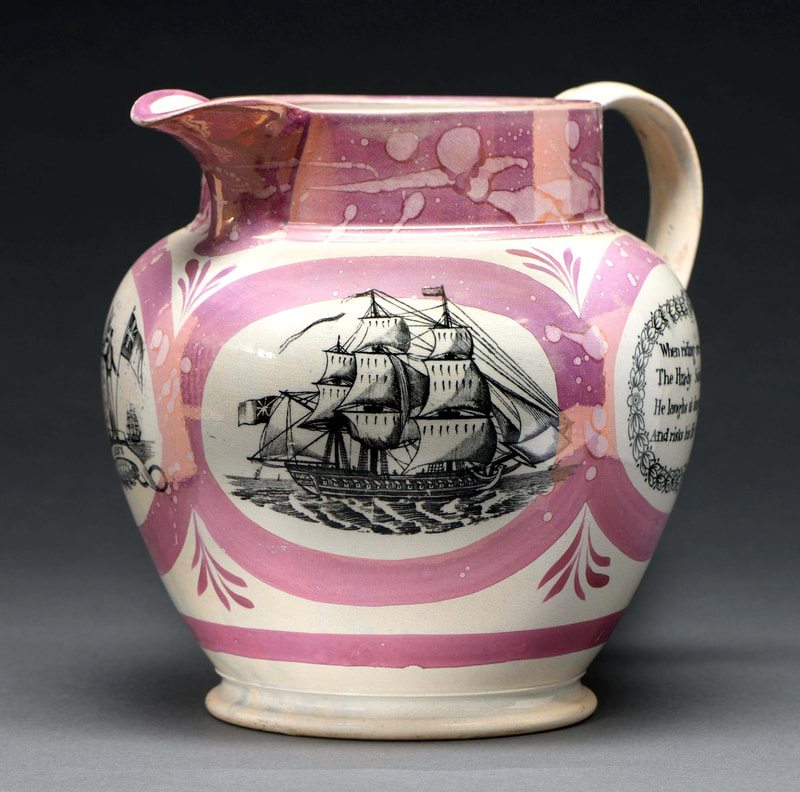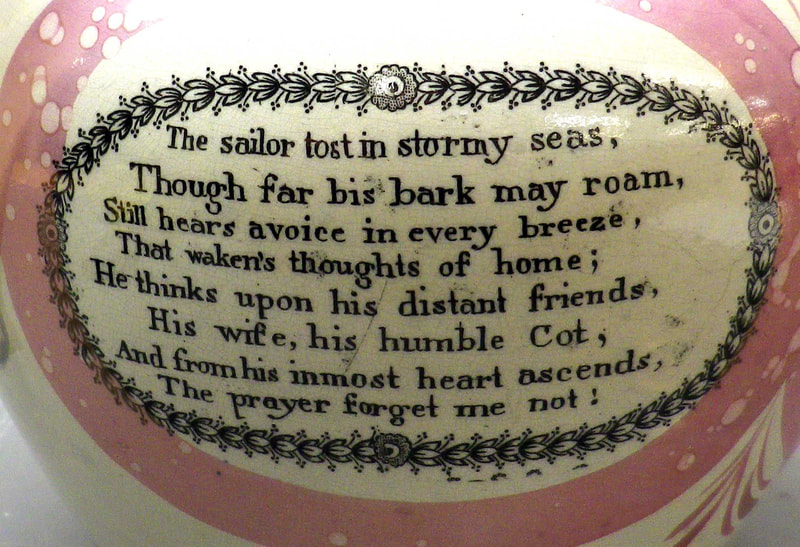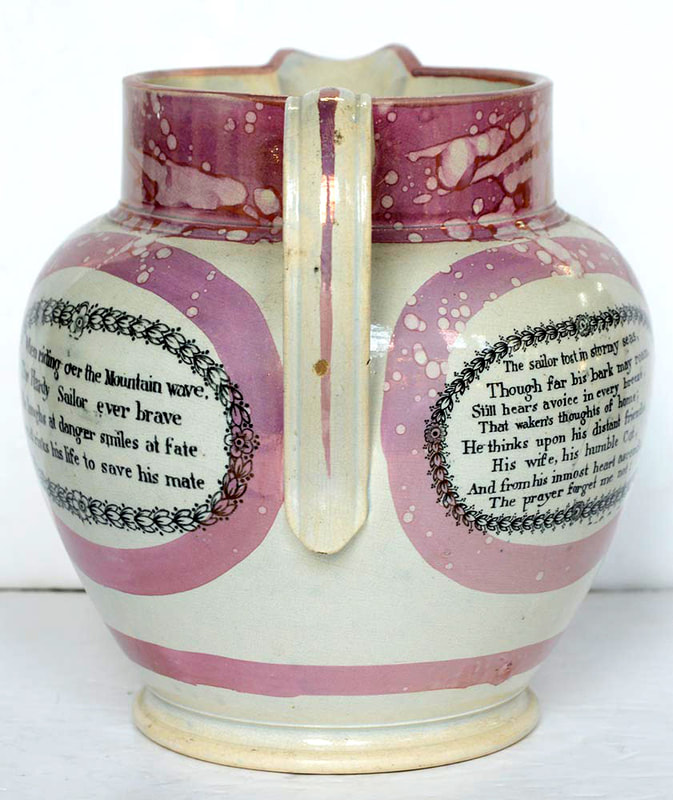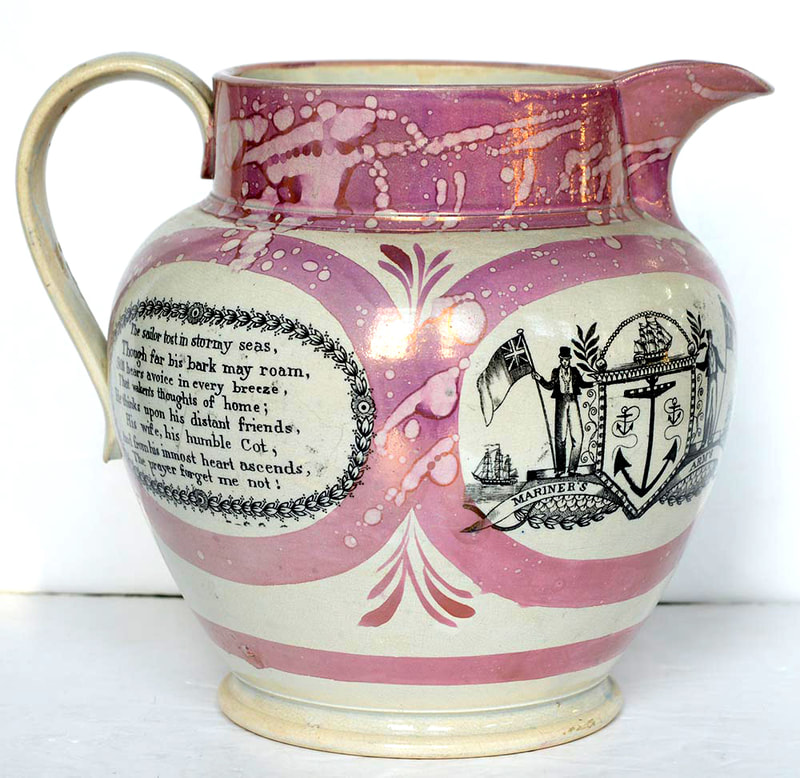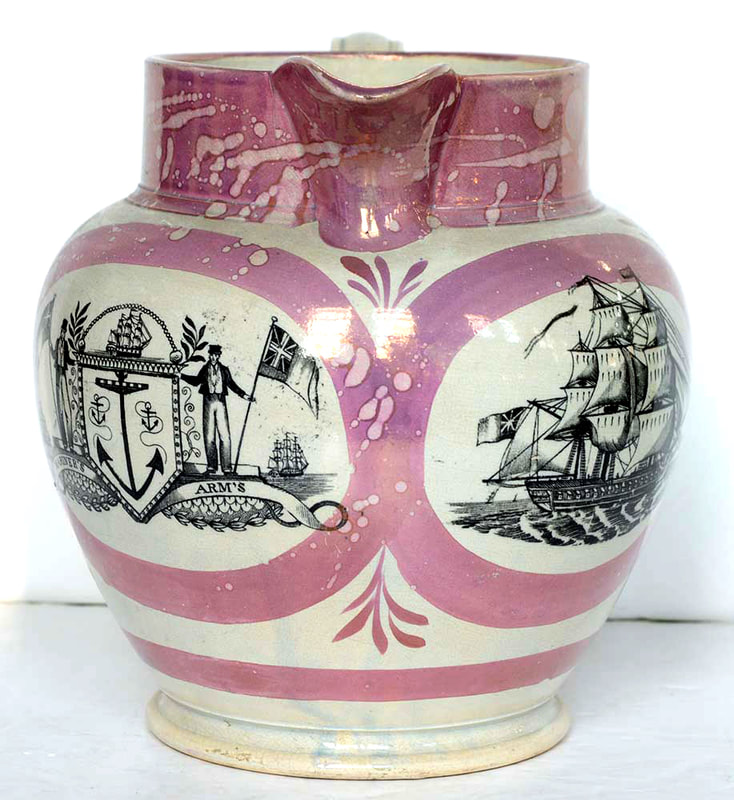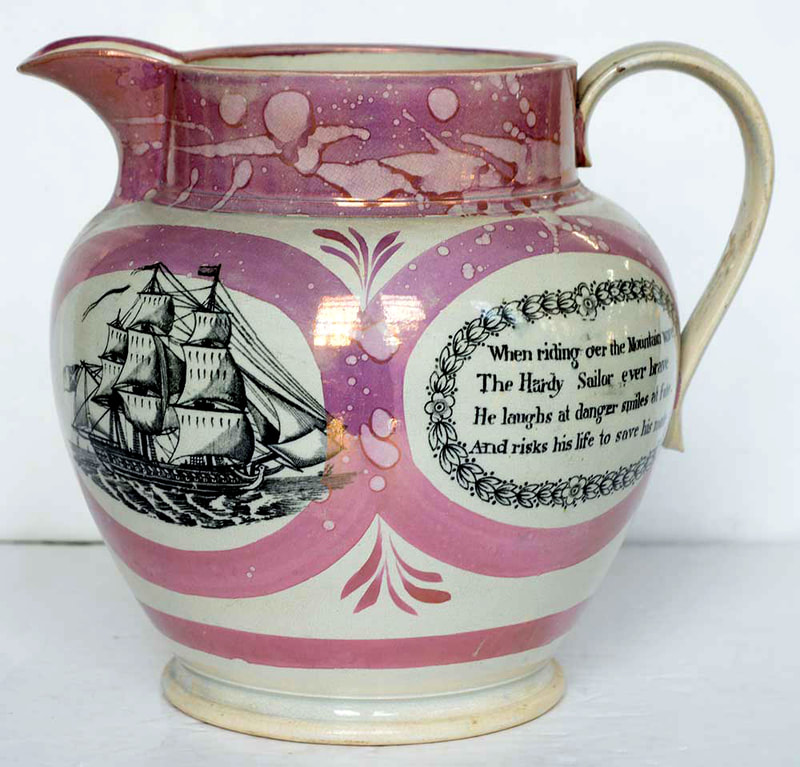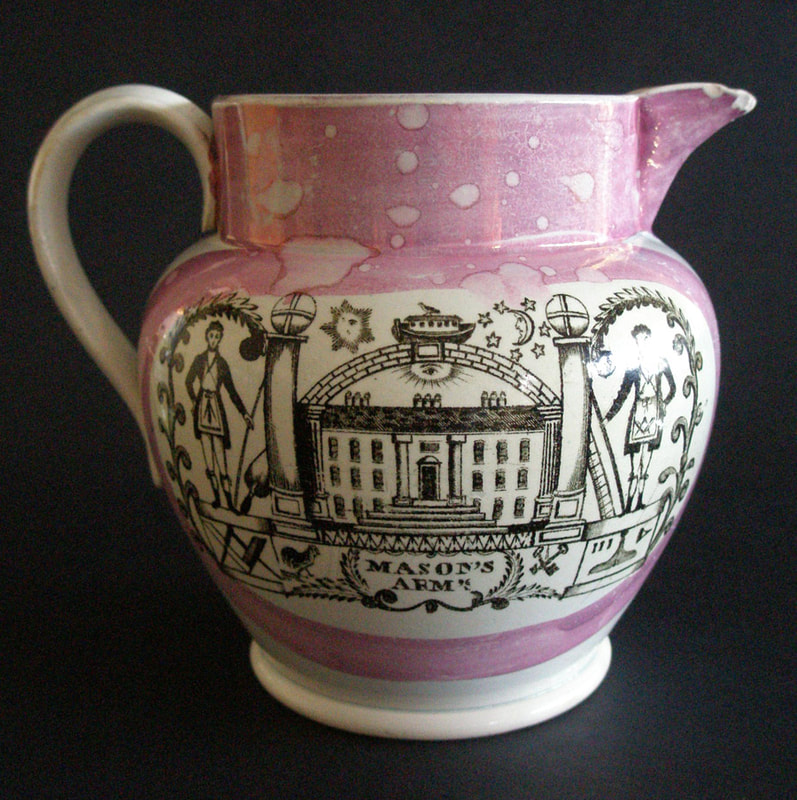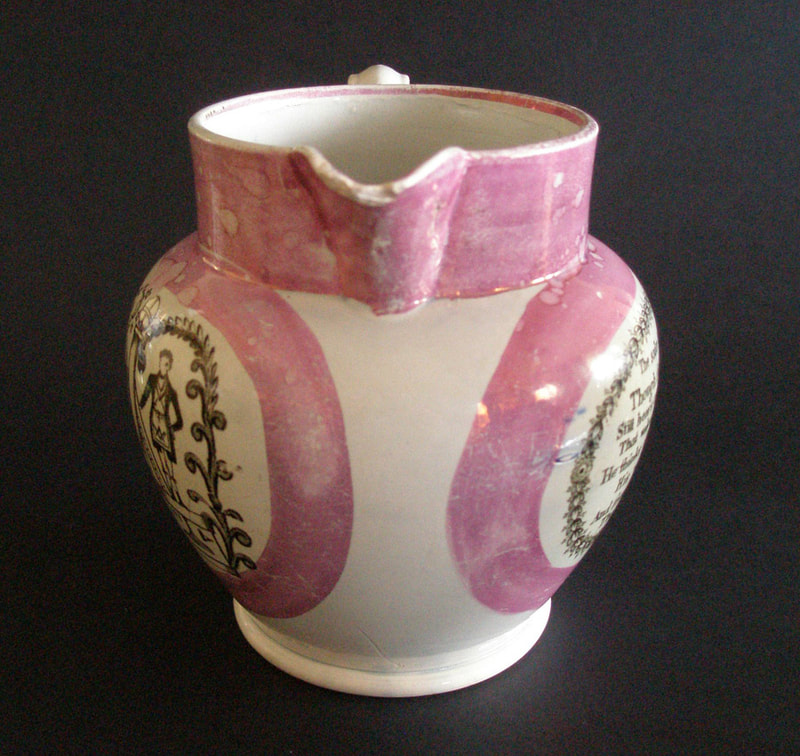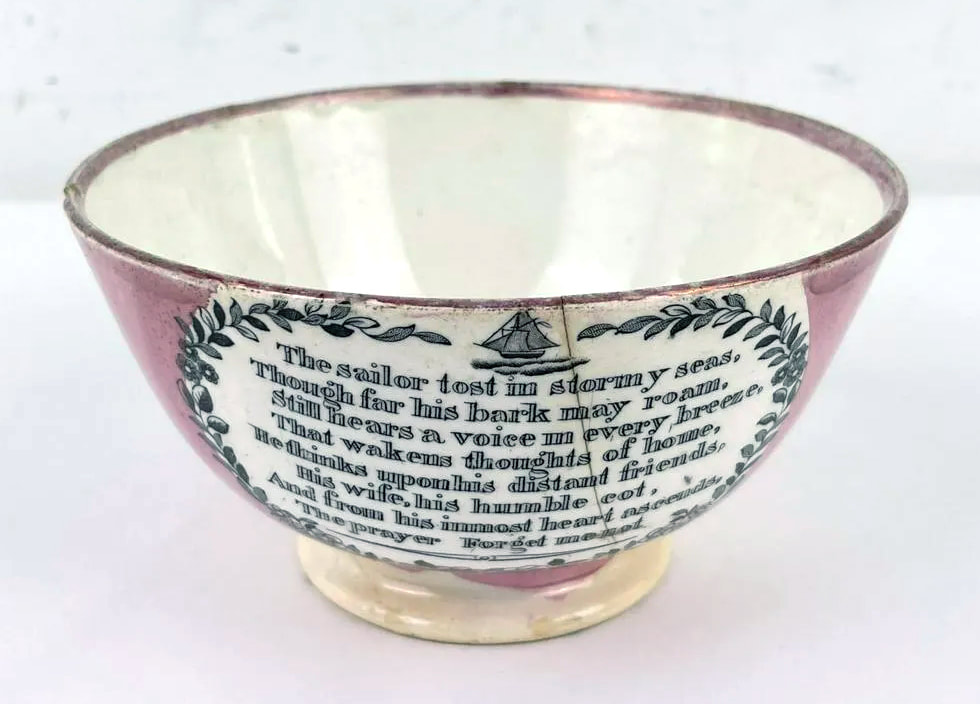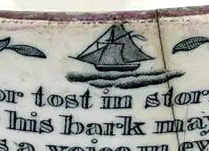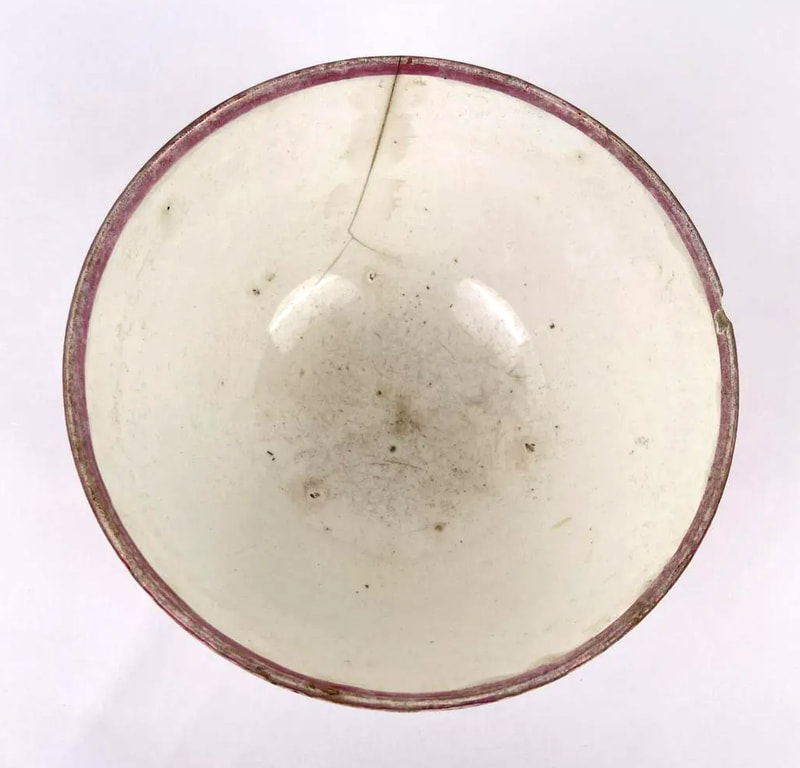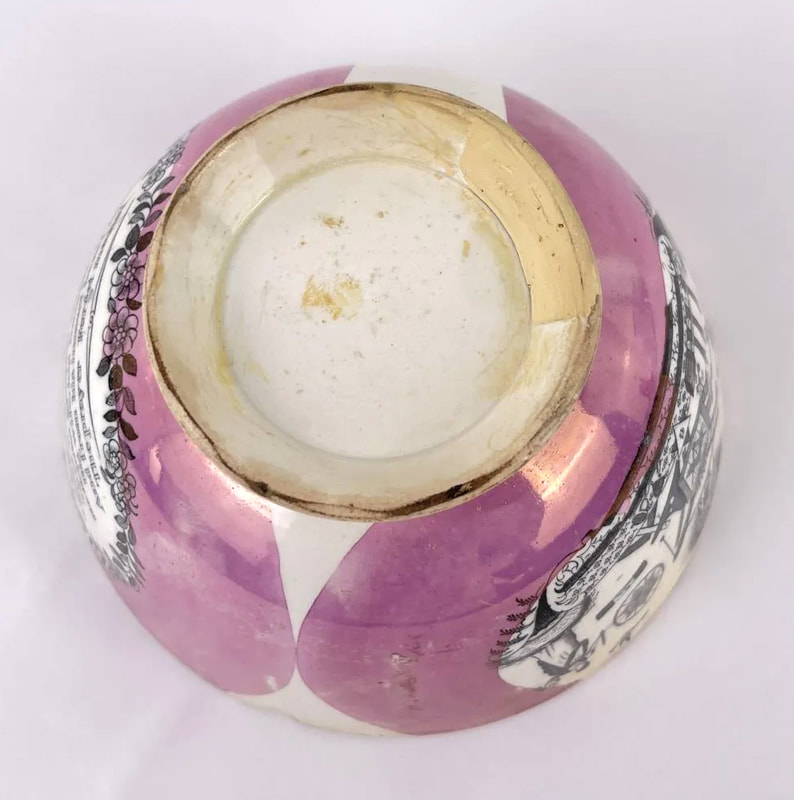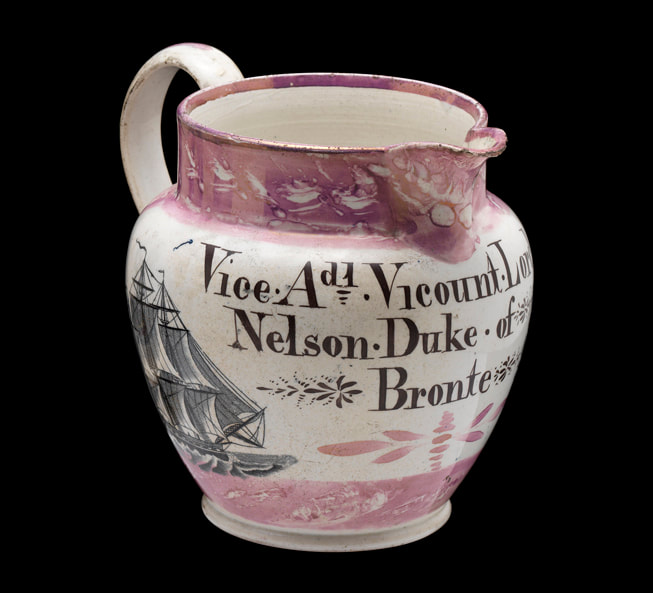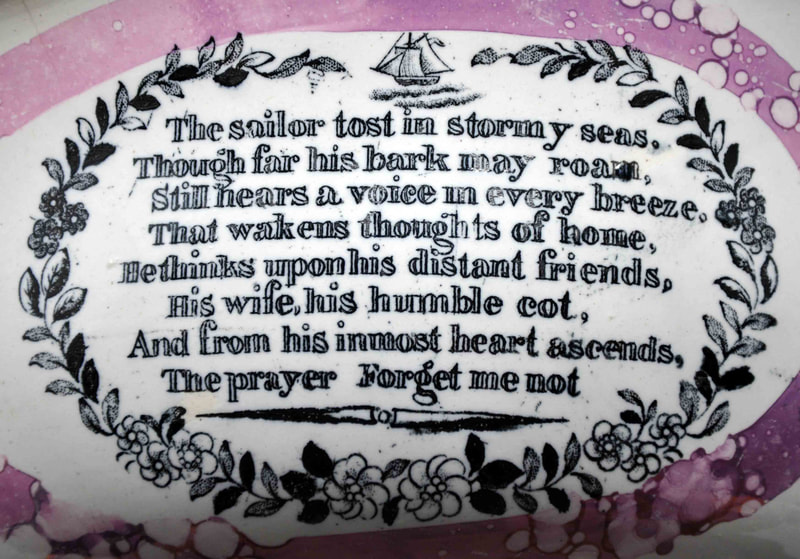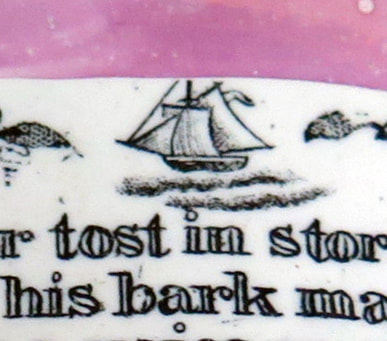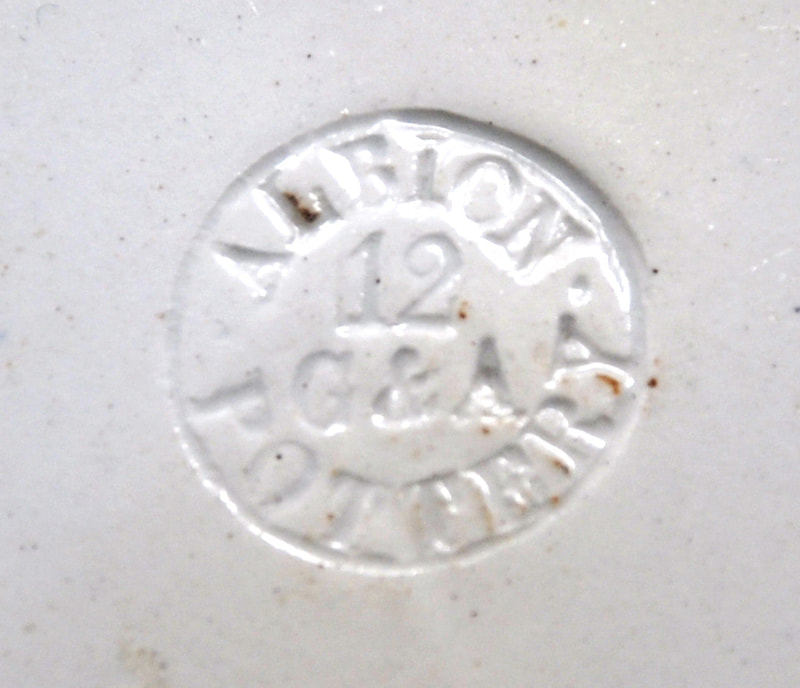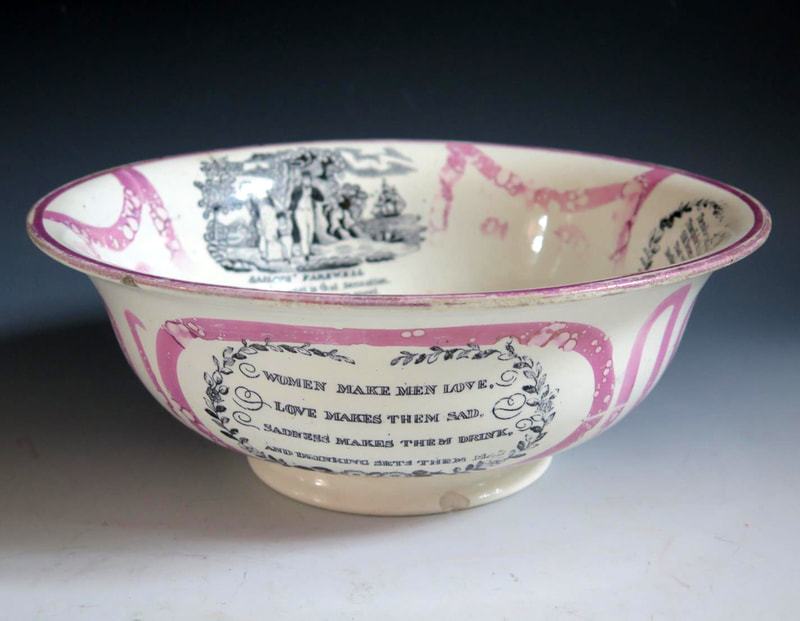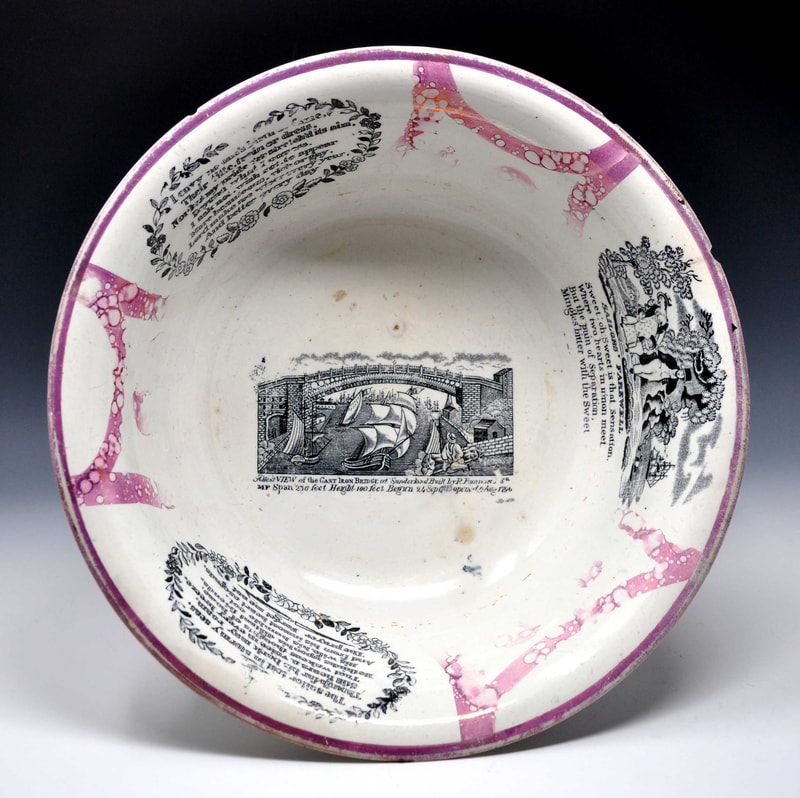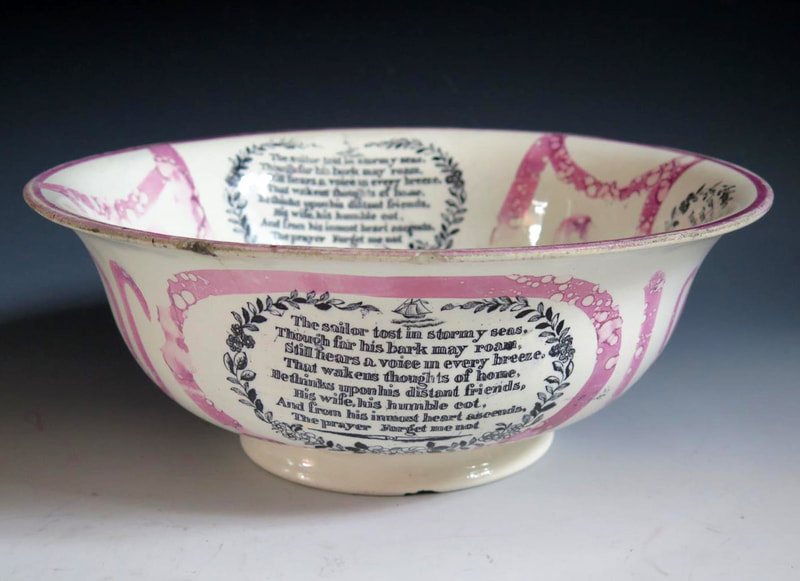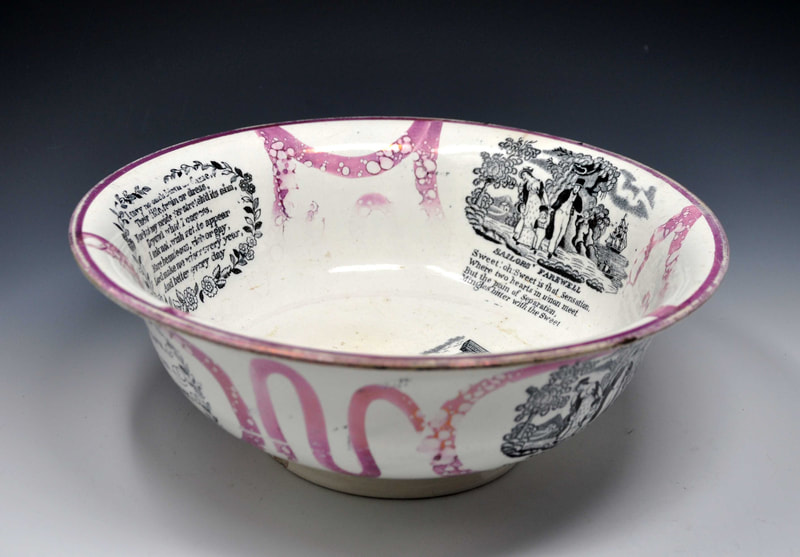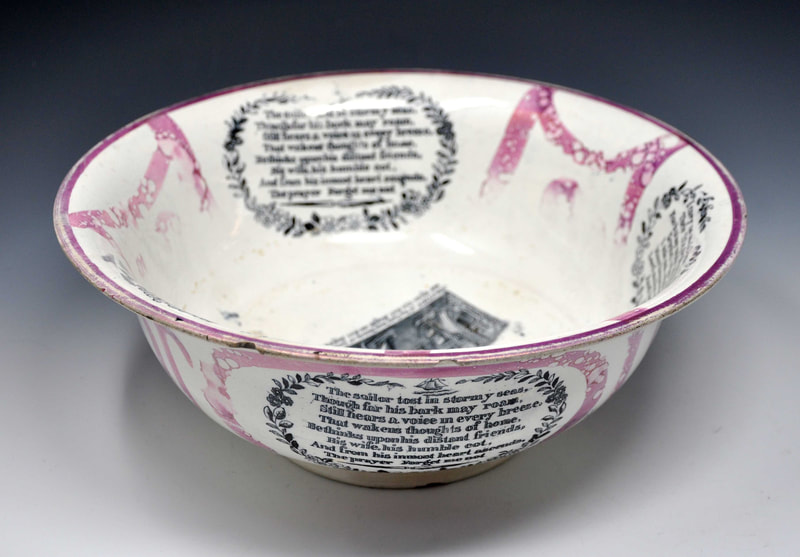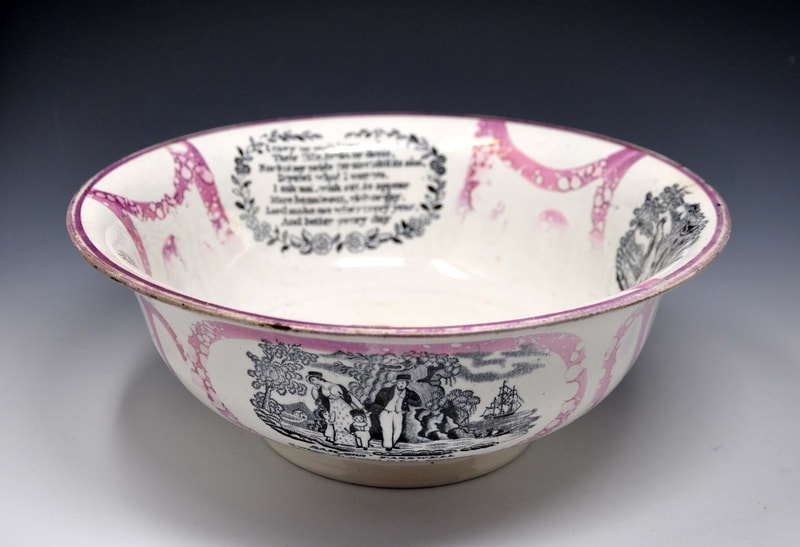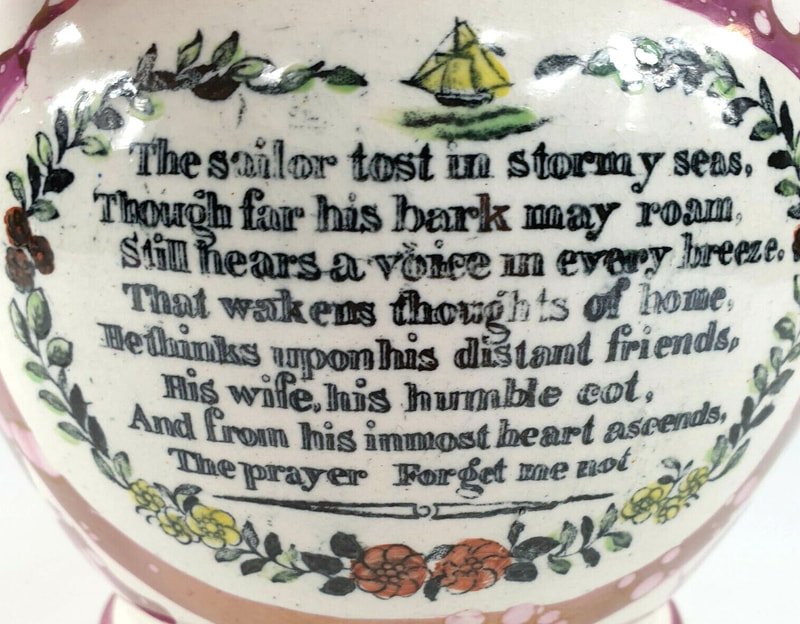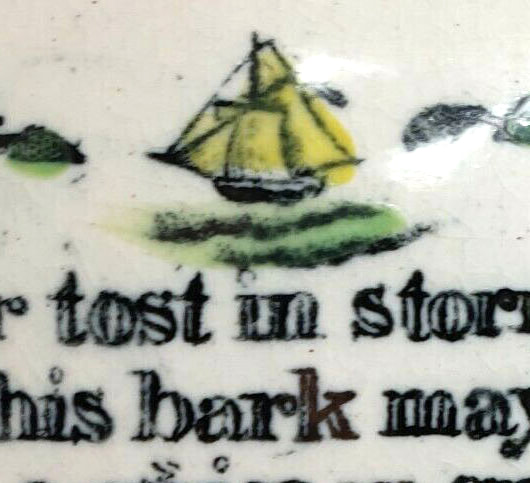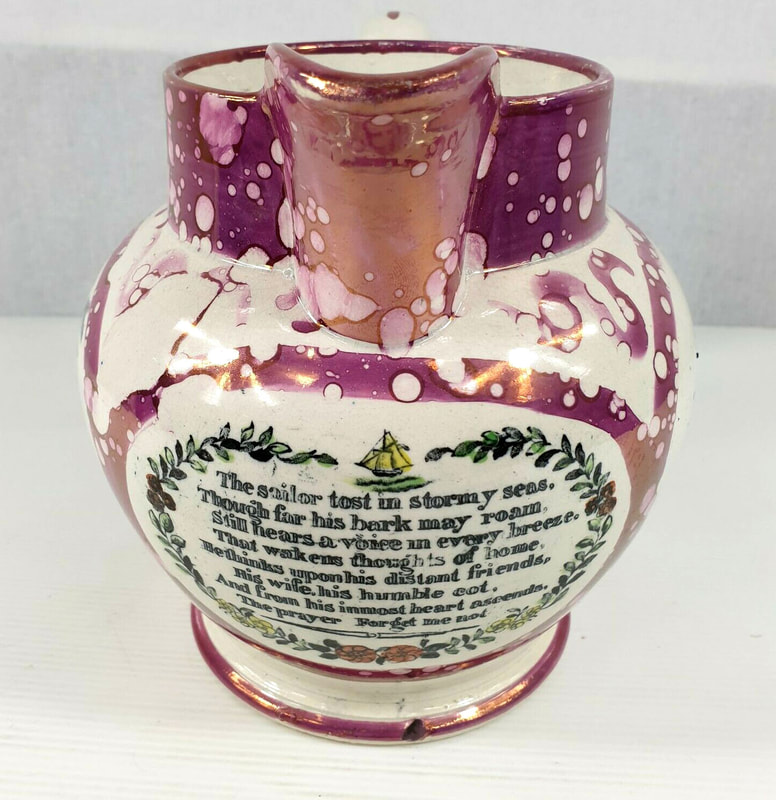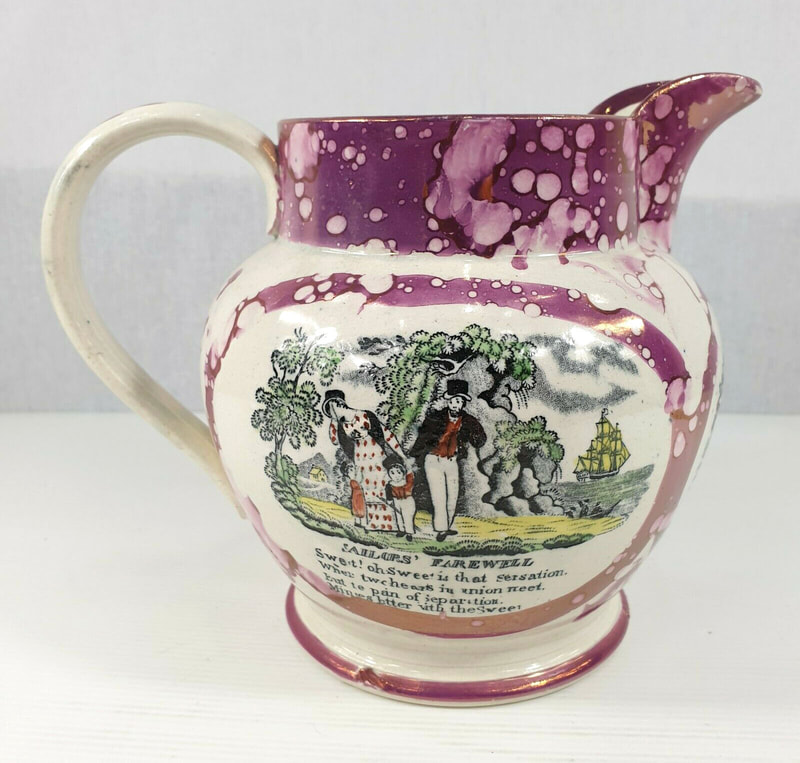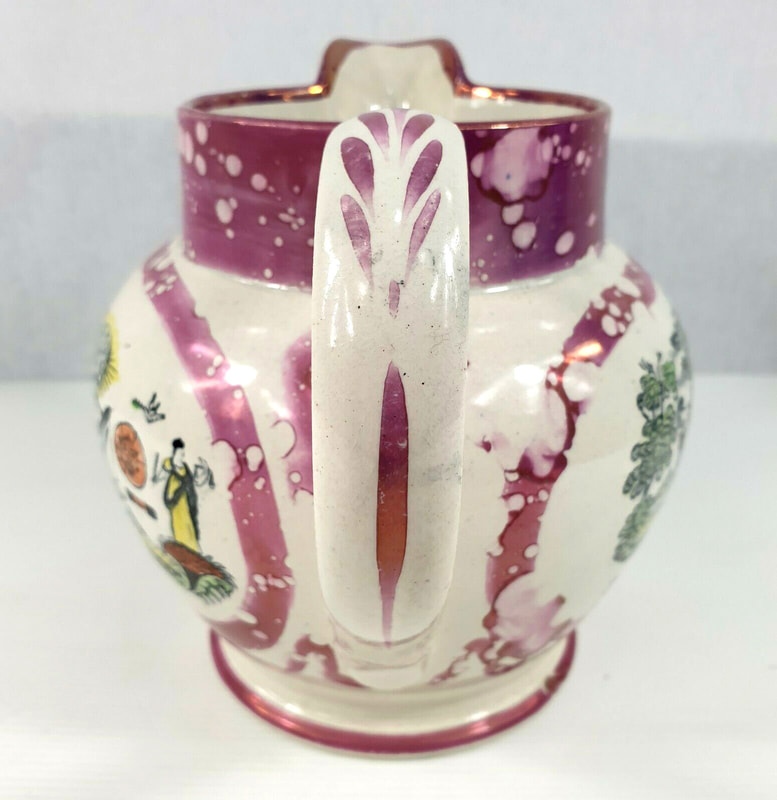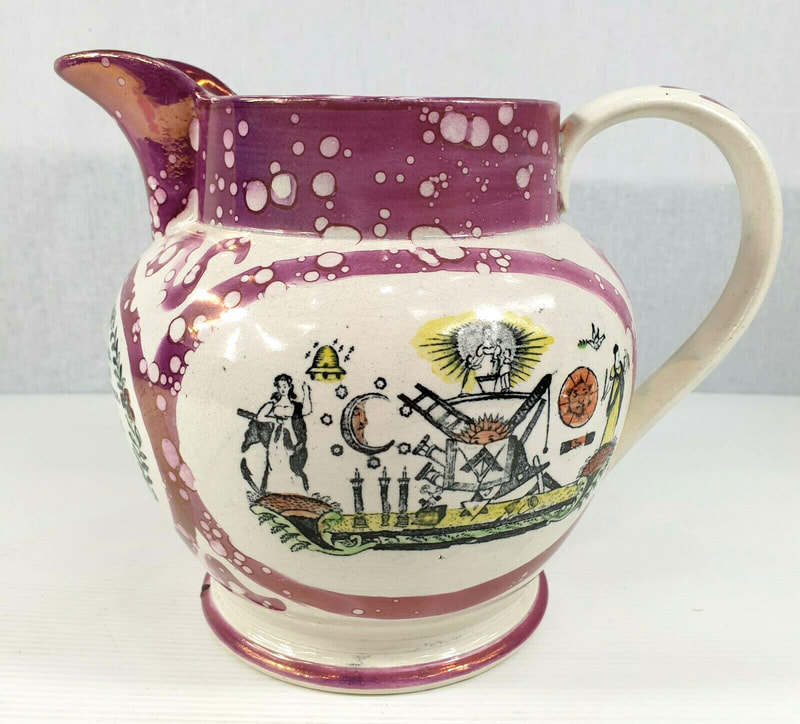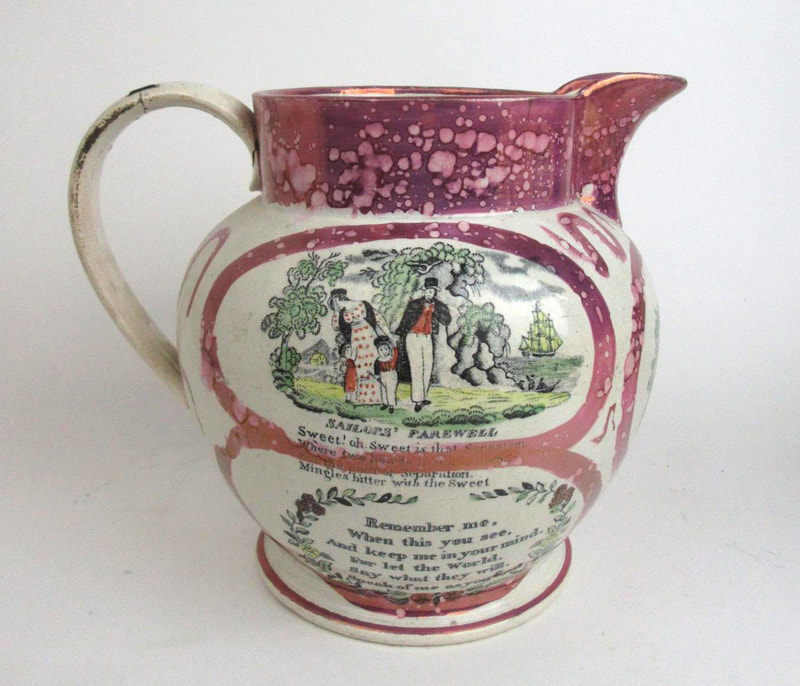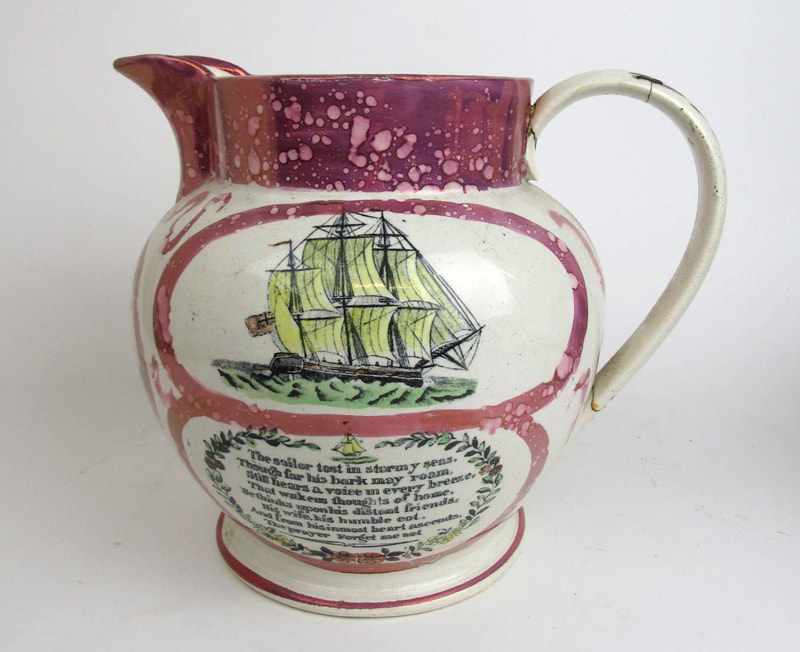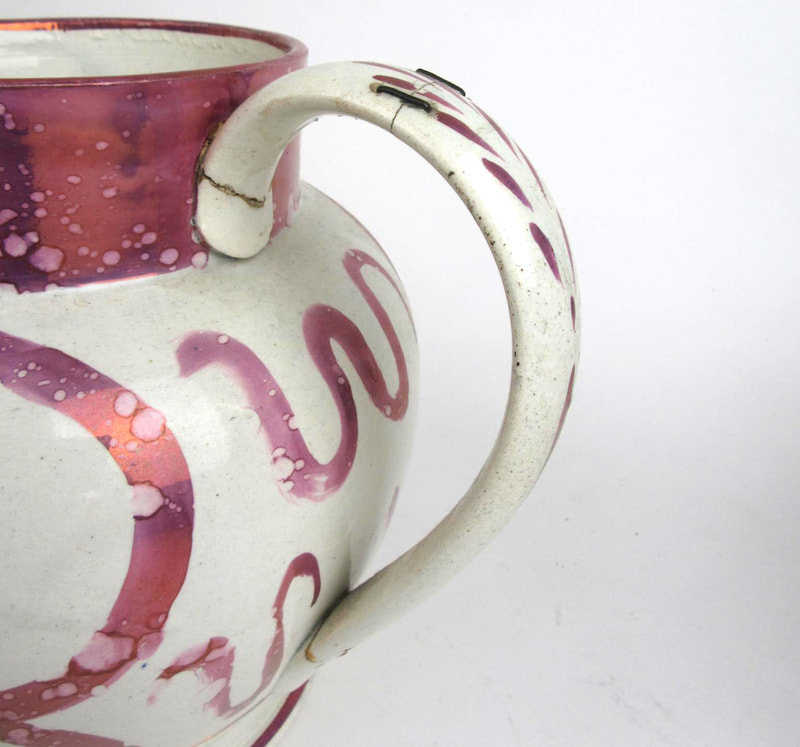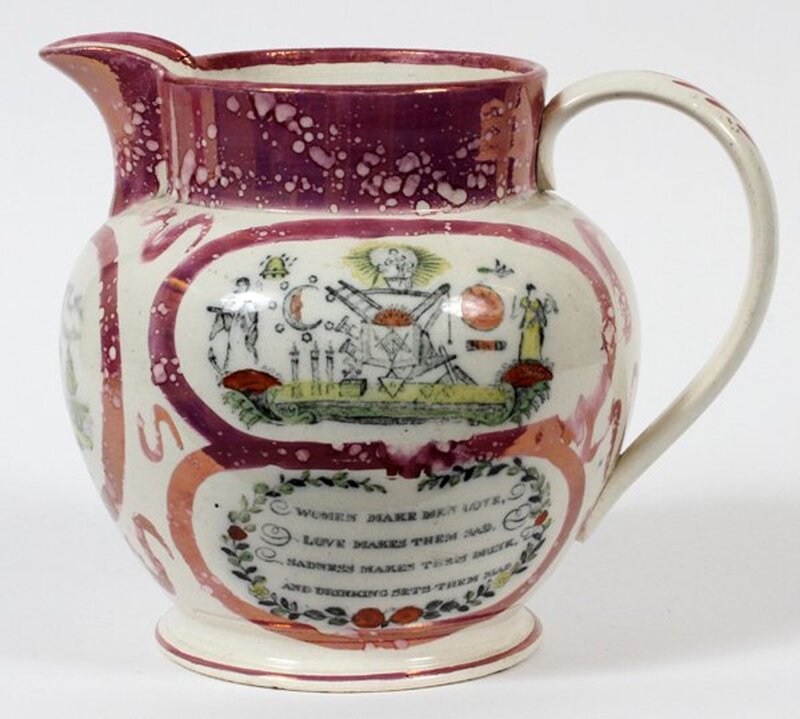Forget Me Not – Sunderland
FORGET ME NOT.
The sailor tossed on stormy seas
Though far his bark may roam,
Still hears a voice in every breeze
That wakens thoughts at home;
He thinks upon his distant friends
His wife , his humble cot ,
And from his inmost heart ascends
The prayer forget me not.
The sailor tossed on stormy seas
Though far his bark may roam,
Still hears a voice in every breeze
That wakens thoughts at home;
He thinks upon his distant friends
His wife , his humble cot ,
And from his inmost heart ascends
The prayer forget me not.
Dixon, Austin & Co, Sunderland Pottery 1
This version of the transfer has the poet's name 'Barten' at the end. However, it is misspelt and should read 'Barton'. Read more about Bernard Barton on Ian Holmes' site here. This jug has an inscription for 1828.
Below three items with the transfer and coloured over-enamels. The mugs could be as early as the 1820s (it is hard to be sure without a dated inscription, but they appear to have a creamware body), and the jug is likely 1830s
The jug above has a printed mark for Dixon, Austin & Co, Sunderland Pottery.
Another similar jug, with a printed mark 'Dixon & Co Sunderland Pottery' under the Northumberland 74 transfer.
Two larger sized jugs, again from the 1830s. The second has a second handle to aid pouring.
It is hard to date the tobacco jar below, but the earlier version of this transfer suggests the 1830s. See the later Dixon, Phillips & Co version of the transfer below.
Dixon, Austin & Co, Sunderland Pottery 2
A smaller version of the transfer without the floral wreath border. Below shown on two small milk or cream jugs and a lidded pot from the 1830s.
Dixon, Phillips & Co, Garrison Pottery 1
The mark on the plaque above suggests it was made post 1850. The jug and bowl below are from a similar date.
A wide-rimmed washbowl with the impressed mark 'Dixon Co' over the number '8'.
Dixon, Phillips & Co, Garrison Pottery 2
|
This version, without the title or ship at the top of the verse, is from a copper plate in the Sunderland Museum & Winter Gardens, Tyne & Wear Archives & Museums collection, donated by the Ball family. The transfer plate appears to have been acquired by Scott from Dixon when the Garrison Pottery closed in 1865 and re-engraved in places (see Scott's Pottery 3 below). It was later acquired from Scott's by Ball's Deptford Pottery. |
Above, a heavily potted pedestal bowl with 'tree branch' lustre decoration peculiar to the Garrison Pottery. Below, the transfer on an unmarked slop bowl.
Moore's Pottery
The verse without a title or ship also appears on a small slop bowl and large punchbowl, both with the Moore impress. This transfer is very hard to distinguish from the Garrison 2 version above / Scott's Pottery 2 version below. But it does come from a different transfer plate. Below, two large bowls also with the Moore impress.
The Moore verse on a much larger than average mug. Note the zig-zag lustre decoration, like the bowl above, which is typical of Moore's Wear Pottery.
Scott's Pottery 1
A different rendering of the transfer on a flower-coloured jug, typical of Scott's Southwick pottery from the 1830s.
Scott's Pottery 2
The frog mug above (c1840) is earlier than the items below and has a typical black Scott frog with pink lips. In this version of the transfer, the 'k' in 'bark' and 'm' in 'may' are joined (see details below, from the mug, tobacco jar and bowl respectively).
The tobacco jar below has an inscription dated 1853 and is unusually decorated in green, red and blue enamels rather than pink lustre.
The 1850s' bowl below has the Scott impress.
The first row of photos below shows three more views of the bowl above. The second row shows another Scott-impressed wash basin with the transfer.
Below, two jugs with typical 'Scott' lustre decoration to the collar, spout and handle from the 1850s.
Scott's Pottery 3
These imprints are from the same copper plate as the Garrison Pottery 2 version above, which was apparently acquired by Scott's after 1865 when the Garrison Pottery closed. The copper plate is on display in the Sunderland Museum. The Crimea transfer with soldiers shaking hands is also a Dixon transfer but from a different copper plate, purchased and repurposed by Scott's. It is by this time an anachronism. Orange lustre was introduced in 1870, 5 years after the Garrison Pottery closed, and about 15 years after the Crimean War. The frog, wavy application of lustre, and enamelling are all typical of Scott's.
Attributed to Ball's Deptford Pottery
The transfers on these mugs appear to come from the same copper plate as the Scott's wares above. Ball's bought up many of Scott's transfer plate and continued making lustre items into the 20th century. The jug below has a moulded handle rarely found on earlier Sunderland items.
The pink lustre decoration on the first mug is typical of items from Ball's Deptford Pottery.
The maroon enamel and crude decoration are again synonymous with Ball's.
A similar Ball mug, but with the version of the verse from the copper plate in the Sunderland Museum (see the Dixon, Phillips & Co, Garrison Pottery 2 and Scott's Pottery 3 above).
Forget Me Not – Tyneside
Attributed to Robert Maling, Ouseburn Bridge Pottery, Newcastle
Above, a mug with an inscribed date of 1836. Below, a similar jug inscribed 1835, and two others.
Robert Maling, Ouseburn Bridge Pottery, Newcastle
Unidentified Tyneside Pottery
This jug, from an as-yet unidentified pottery, has a very distinctive Mariners' Arms transfer.
A smaller jug with the transfer paired with a distinctive version of the Masons' Arms transfer.
Attributed to John Carr & Co, Low Lights, North Shields
Above, a bowl with a version of the transfer with a small ship above the verse. It is very similar to the Albion Pottery transfer below, although I think from a different copper plate. Below, a jug with the transfer, from the National Maritime Museum, Greenwich, London collection, commemorating Lord Nelson.
Galloway & Atkinson, Albion Pottery
Galloway & Atkinson had a short-lived partnership at the Albion Pottery, c1864. It is rare to find a marked bowl. It has a number 12 impressed above the initials G&A.
John Carr & Sons, Low Lights, North Shields
Scratches in the centre detail show this to be the Albion transfer plate above, apparently acquired by Carr after that pottery's closure.
Two large jugs with the transfer and typical Carr wavy lustre decoration from the 1870s.
